-
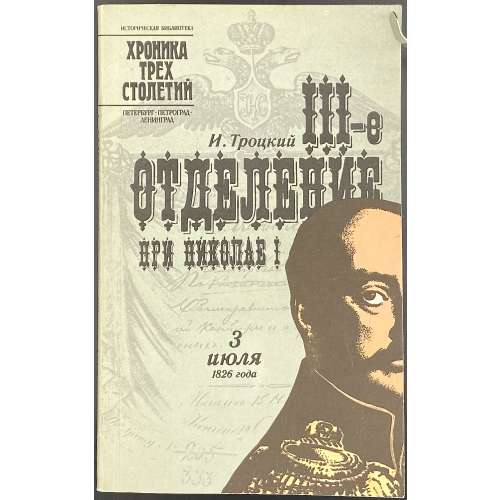 Front wrapper: Историческая библиотека | Хроника трех столетий | Петербург – Петроград – Ленинград | И. Троцкий | III-е Отделение при Николае I | 3 | июля | 1826 года || Title: И. Троцкий | III-е Отделение при Николае I || Faux title (p. 75) : Жизнь | Шервуда-Верного || Pagination: [1-5] 6-317 [3]; 320 pages. Collation: 16mo; [1]16 2-1016; 160 leaves. Binding: Softcover, original pictorial wrappers. Print run: 150,000 copies. Contributors: Исаак Моисеевич Троцкий (Russian-Jewish, 1903 – 1937) – author of the text. Яков Аркадьевич Гордин (Russian-Jewish, b. 1935) – foreword, preparation.
Front wrapper: Историческая библиотека | Хроника трех столетий | Петербург – Петроград – Ленинград | И. Троцкий | III-е Отделение при Николае I | 3 | июля | 1826 года || Title: И. Троцкий | III-е Отделение при Николае I || Faux title (p. 75) : Жизнь | Шервуда-Верного || Pagination: [1-5] 6-317 [3]; 320 pages. Collation: 16mo; [1]16 2-1016; 160 leaves. Binding: Softcover, original pictorial wrappers. Print run: 150,000 copies. Contributors: Исаак Моисеевич Троцкий (Russian-Jewish, 1903 – 1937) – author of the text. Яков Аркадьевич Гордин (Russian-Jewish, b. 1935) – foreword, preparation. -
![Owen E. Holloway. French Rococo Book Illustration. – London: Alec Tiranti, 1969. – pp.: ffl [2 blanks] [i-iv] v-vi, 1-283, bfl.](https://varshavskycollection.com/wp-content/uploads/2021/02/LIB-2526.2020-d-500x500.jpeg) Title page (in red and black): FRENCH ROCOCO | BOOK ILLUSTRATION | OWEN E. HOLLOWAY | {vignette} | LONDON/ALEC TIRANTI/1969 || Series: Pagination: [2 blanks], [i-iv] v-vi, 1-115 [116 blank], plus 65 leaves of plates (283 illustrations). Binding: 25.5 x 19 cm; publisher's navy buckram, gilt lettering to spine, pictorial dust jacket, unclipped.
Title page (in red and black): FRENCH ROCOCO | BOOK ILLUSTRATION | OWEN E. HOLLOWAY | {vignette} | LONDON/ALEC TIRANTI/1969 || Series: Pagination: [2 blanks], [i-iv] v-vi, 1-115 [116 blank], plus 65 leaves of plates (283 illustrations). Binding: 25.5 x 19 cm; publisher's navy buckram, gilt lettering to spine, pictorial dust jacket, unclipped. -
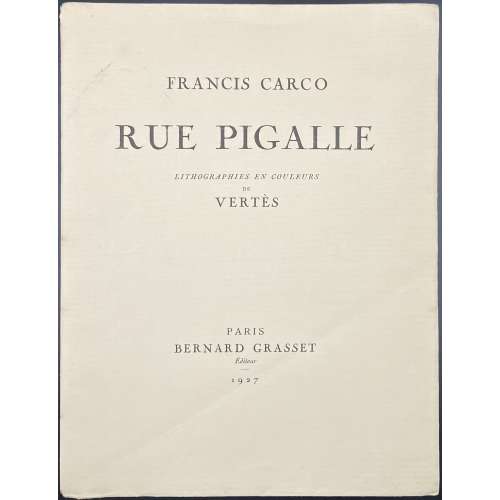 Title-page: FRANCIS CARCO | RUE PIGALLE | LITHOGRAPHIES EN COULEURS | DE | VERTÈS | PARIS | BERNARD GRASSET | Éditeur | 1927 || Description: 25.7 x 19.5 cm, French flapped cream wrappers with black lettering similar to title, lettering to spine, [2] 1st blank leaf, [2] h.t. / blank, plate / blank, [2] t.p. /blank, dedication “A | FRED ANTOINE ANGERMAYER” / blank, [1-2] d.t.p. “CHAPITRE | PREMIER” / blank, [3] 4-124, [2] limitation / blank, [2] last blank leaf; collation: 4to; π4 1-164; total 68 leaves and 14 plates printed by Frères Mourlot after watercolours by Marcel Vertès. Printing : September 15, 1927 by Coulouma in Argenteuil (H. Barthélemy, director); plates printed by Frères Mourlot in Paris; Edition: print run limited to 338 copies of which 22 on Japon Impérial (numbered Japon 1-15 and I-VII) enriched with one original watercolour drawing, one suite in black and one in colour, etc.; 43 copies on Hollande van Gelder (Hollande 1-33 and I-X) with additional suites in black and in colour; 270 copies on Vélin d’Arches (Arches 1-250 and I-XX); and 3 “special” copies. This copy is numbered Arches № 162. Contributors: Francis Carco [François Carcopino-Tusoli] (French, 1886 – 1958) – author. Marcel Vertès [Marcell Vértes] (Jewish-Hungarian-French, 1895 – 1961) – artist. Frères Mourlot – lithographer. Robert Coulouma (French, 1887 – 1976) – printer. Bernard Grasset (French, 1881 – 1955) – publisher. Fred Antoine Angermayer (German, 1889 –1951) – dedicatee. Other names: Marcel Vertès, Marcel Vertes, Marcell Vértes
Title-page: FRANCIS CARCO | RUE PIGALLE | LITHOGRAPHIES EN COULEURS | DE | VERTÈS | PARIS | BERNARD GRASSET | Éditeur | 1927 || Description: 25.7 x 19.5 cm, French flapped cream wrappers with black lettering similar to title, lettering to spine, [2] 1st blank leaf, [2] h.t. / blank, plate / blank, [2] t.p. /blank, dedication “A | FRED ANTOINE ANGERMAYER” / blank, [1-2] d.t.p. “CHAPITRE | PREMIER” / blank, [3] 4-124, [2] limitation / blank, [2] last blank leaf; collation: 4to; π4 1-164; total 68 leaves and 14 plates printed by Frères Mourlot after watercolours by Marcel Vertès. Printing : September 15, 1927 by Coulouma in Argenteuil (H. Barthélemy, director); plates printed by Frères Mourlot in Paris; Edition: print run limited to 338 copies of which 22 on Japon Impérial (numbered Japon 1-15 and I-VII) enriched with one original watercolour drawing, one suite in black and one in colour, etc.; 43 copies on Hollande van Gelder (Hollande 1-33 and I-X) with additional suites in black and in colour; 270 copies on Vélin d’Arches (Arches 1-250 and I-XX); and 3 “special” copies. This copy is numbered Arches № 162. Contributors: Francis Carco [François Carcopino-Tusoli] (French, 1886 – 1958) – author. Marcel Vertès [Marcell Vértes] (Jewish-Hungarian-French, 1895 – 1961) – artist. Frères Mourlot – lithographer. Robert Coulouma (French, 1887 – 1976) – printer. Bernard Grasset (French, 1881 – 1955) – publisher. Fred Antoine Angermayer (German, 1889 –1951) – dedicatee. Other names: Marcel Vertès, Marcel Vertes, Marcell Vértes -
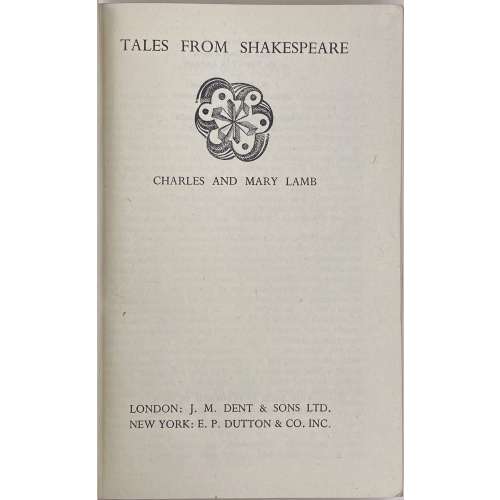 Description: 17.4 x 11 cm, blue publisher’s cloth, blind device to front board, gilt lettering to spine, no DJ, pink abstract diaper endpapers, owner’s ink inscription to ffep, dated June 28, 1945. Serial t.p.: Everyman, I will go with thee, and be thy guide, | In thy most need to go by the side. | — | EVERYMAN'S LIBRARY | EDITED BY ERNEST RHYS | No. 8 | FOR YOUNG PEOPLE | TALES FROM SHAKESPEARE | BY CHARLES AND MARY LAMB | ILLUSTRATIONS BY ARTHUR | RACKHAM || Title-page: TALES FROM SHAKESPEARE | {device} | CHARLES AND MARY LAMB | LONDON: J. M. DENT & SONS LTD. | NEW YORK: E. P. DUTTON & CO. INC. || T.p verso: All rights reserved | Made in Great Britain | at The Temple Press Letchworth | for | J. M. Dent & Sons Ltd. | Aldine House Bedford St. London | First published 1807 | First published in this edition 1906 | Last reprint (reset) 1944 | [blank] | THIS BOOK IS PRODUCED IN COM- | PLETE CONFORMITY WITH THE | AUTHORIZED ECONOMY STANDARDS || Collation: 16mo; [A]-K16; total 160 leaves, 9 full-page illustrations after Arthur Rackham, within collation (text on the other side). Pagination: [i-iv] v-viii, 1-312, total 320 pages, ils. Contributors: William Shakespeare (English, 1564 – 1616) Mary Ann Lamb (British, 1764 – 1847) – author. Charles Lamb (British, 1775 – 1834) – author. Ernest Percival Rhys (British, 1859 – 1946) – editor. Arthur Rackham (British, 1867 – 1939) – artist.
Description: 17.4 x 11 cm, blue publisher’s cloth, blind device to front board, gilt lettering to spine, no DJ, pink abstract diaper endpapers, owner’s ink inscription to ffep, dated June 28, 1945. Serial t.p.: Everyman, I will go with thee, and be thy guide, | In thy most need to go by the side. | — | EVERYMAN'S LIBRARY | EDITED BY ERNEST RHYS | No. 8 | FOR YOUNG PEOPLE | TALES FROM SHAKESPEARE | BY CHARLES AND MARY LAMB | ILLUSTRATIONS BY ARTHUR | RACKHAM || Title-page: TALES FROM SHAKESPEARE | {device} | CHARLES AND MARY LAMB | LONDON: J. M. DENT & SONS LTD. | NEW YORK: E. P. DUTTON & CO. INC. || T.p verso: All rights reserved | Made in Great Britain | at The Temple Press Letchworth | for | J. M. Dent & Sons Ltd. | Aldine House Bedford St. London | First published 1807 | First published in this edition 1906 | Last reprint (reset) 1944 | [blank] | THIS BOOK IS PRODUCED IN COM- | PLETE CONFORMITY WITH THE | AUTHORIZED ECONOMY STANDARDS || Collation: 16mo; [A]-K16; total 160 leaves, 9 full-page illustrations after Arthur Rackham, within collation (text on the other side). Pagination: [i-iv] v-viii, 1-312, total 320 pages, ils. Contributors: William Shakespeare (English, 1564 – 1616) Mary Ann Lamb (British, 1764 – 1847) – author. Charles Lamb (British, 1775 – 1834) – author. Ernest Percival Rhys (British, 1859 – 1946) – editor. Arthur Rackham (British, 1867 – 1939) – artist.Temple Press, Letchworth, England – printer.
Joseph Malaby Dent (British, 1849 – 1926) – publisher. Note: “On the writing desk were two books – identical copies of Lamb’s Tales From Shakespeare. […] — Why did you choose Lamb? — It was the only book I could find in duplicate except Uncle Tom’s Cabin…” Graham Greene. Our Man in Havana. -
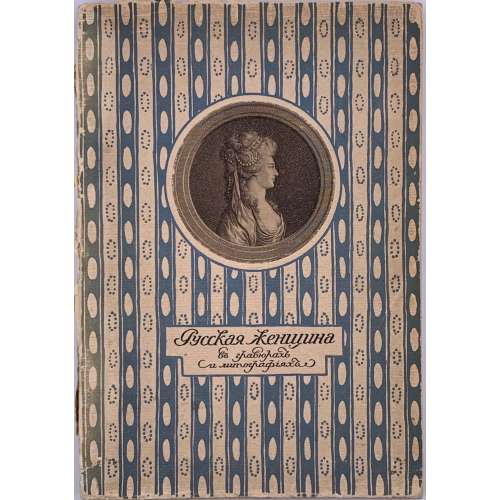 Description: Softcover volume in publisher’s pictorial wrappers, with a b/w medallion portrait and lettering in a frame over geometrical pattern in blue to front; 23 x 16.3 cm, collated 8vo. Title-page: РУССКАЯ ЖЕНЩИНА | ВЪ | ГРАВЮРАХЪ И ЛИТОГРАФIЯХЪ | – | ВЫСТАВКА ПОРТРЕТОВЪ | – | КРУЖОКЪ ЛЮБИТЕЛЕЙ | РУССКИХЪ ИЗЯЩНЫХЪ ИЗДАНIЙ | 1911 || Collation: 1-48, last blank, total 32 leaves plus 15 plates (collotype reproductions) with tissue guards, incl. frontispiece, and a few headpieces; catalogue with 180 entries. Pagination: [1-6] 7-63 [64] [2], total 64 pages, ils. Incl. article "Русская женщина в искусстве" барона Н. Н. Врангеля. Барон Николай Николаевич Врангель (Russian, 1880 – 1915)
Description: Softcover volume in publisher’s pictorial wrappers, with a b/w medallion portrait and lettering in a frame over geometrical pattern in blue to front; 23 x 16.3 cm, collated 8vo. Title-page: РУССКАЯ ЖЕНЩИНА | ВЪ | ГРАВЮРАХЪ И ЛИТОГРАФIЯХЪ | – | ВЫСТАВКА ПОРТРЕТОВЪ | – | КРУЖОКЪ ЛЮБИТЕЛЕЙ | РУССКИХЪ ИЗЯЩНЫХЪ ИЗДАНIЙ | 1911 || Collation: 1-48, last blank, total 32 leaves plus 15 plates (collotype reproductions) with tissue guards, incl. frontispiece, and a few headpieces; catalogue with 180 entries. Pagination: [1-6] 7-63 [64] [2], total 64 pages, ils. Incl. article "Русская женщина в искусстве" барона Н. Н. Врангеля. Барон Николай Николаевич Врангель (Russian, 1880 – 1915) -
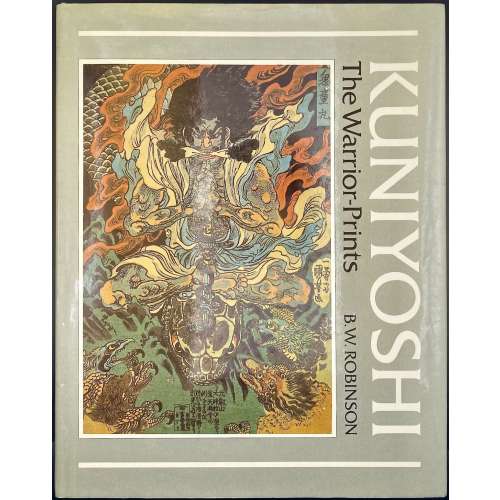 Title-page: KUNIYOSHI | The Warrior-Prints | B. W. Robinson | [space] | PHAIDON | OXFORD || Description: hardcover, 31.7 x 25 cm, bound in olive green cloth with gilt lettering to spine, white endpapers, pictorial olive dust jacket; pp.: [1-6] 7-208 incl. frontispiece, 64 plates, and 30 figs. in the text (total 104 leaves, 205 illustrations, including 32 in colour); catalogue with the list of illustrations, and index of characters portrayed. Inset: A.L.s. on Phaidon letterhead by Sue Moulton; ISBN 0714822272. Edition: 1st edition,1st printing (a review copy). Contributor: Robinson, Basil William (British, 1912 – 2005).
Title-page: KUNIYOSHI | The Warrior-Prints | B. W. Robinson | [space] | PHAIDON | OXFORD || Description: hardcover, 31.7 x 25 cm, bound in olive green cloth with gilt lettering to spine, white endpapers, pictorial olive dust jacket; pp.: [1-6] 7-208 incl. frontispiece, 64 plates, and 30 figs. in the text (total 104 leaves, 205 illustrations, including 32 in colour); catalogue with the list of illustrations, and index of characters portrayed. Inset: A.L.s. on Phaidon letterhead by Sue Moulton; ISBN 0714822272. Edition: 1st edition,1st printing (a review copy). Contributor: Robinson, Basil William (British, 1912 – 2005). -
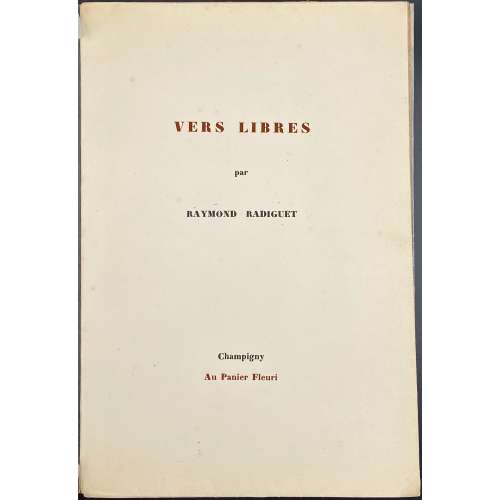 Description: Softcover, 28.5 x 19.5 cm, printed on laid paper watermarked “VAN GELDER ZONEN”, publisher’s original flapped cream wrappers, bookplate of J.-P. Dutel to first blank leaf, 17 leaves within the wrappers, unpaginated, plus three anonymous gouache plates, frontispiece watercolour to h.t. verso, watercolour vignette and ribbons to t.p., attributed by J.-P. Dutel to Jean Laprade (not found). Front wrapper (no vignette): VERS LIBRES | par | RAYMOND RADIGUET | Champigny | Au Panier Fleuri || Half-title: VERS LIBRES (no vignette) Half-title verso: watercolour vignette, lettered in script at the bottom: “Au ciel des Plages | Virginie….” Title-page (red and black): {ribbon} | VERS LIBRES | par | RAYMOND RADIGUET | {vignette} | Champigny | Au Panier Fleuri | {ribbon} || Edition: Limited edition of 125 copies, of which this is copy № 125. The first edition illustrated by Rojan (Feodor Rojankovsky) [LIB-2830.2021] did not state the paper maker, however, the paper is watermarked Arches. This copy is unique, lacking Rojan’s illustrations and enriched with watercolours and gouaches by anonymous artists. Later edition (1937) in this collection: LIB-2827.2021. Contributors: Raymond Radiguet (French, 1903 – 1923) – author. Description by the seller: RADIGUET Raymond. VERS LIBRES. Champigny. Au Panier Fleuri. [Paris, ca 1935]. In-8 broché. Première édition illustrée de 28 superbes compositions en couleurs par Feodor Rojankovsky dit Rojan. Tirage : 125 ex. sur vélin d’Arches. UN DES 125 EXEMPLAIRES SUR VÉLIN D’ARCHES. Exemplaire unique orné de 2 aquarelles originales dans le texte, non signées mais de Jean Laprade et enrichi de 3 gouaches anonymes hors-texte.
Description: Softcover, 28.5 x 19.5 cm, printed on laid paper watermarked “VAN GELDER ZONEN”, publisher’s original flapped cream wrappers, bookplate of J.-P. Dutel to first blank leaf, 17 leaves within the wrappers, unpaginated, plus three anonymous gouache plates, frontispiece watercolour to h.t. verso, watercolour vignette and ribbons to t.p., attributed by J.-P. Dutel to Jean Laprade (not found). Front wrapper (no vignette): VERS LIBRES | par | RAYMOND RADIGUET | Champigny | Au Panier Fleuri || Half-title: VERS LIBRES (no vignette) Half-title verso: watercolour vignette, lettered in script at the bottom: “Au ciel des Plages | Virginie….” Title-page (red and black): {ribbon} | VERS LIBRES | par | RAYMOND RADIGUET | {vignette} | Champigny | Au Panier Fleuri | {ribbon} || Edition: Limited edition of 125 copies, of which this is copy № 125. The first edition illustrated by Rojan (Feodor Rojankovsky) [LIB-2830.2021] did not state the paper maker, however, the paper is watermarked Arches. This copy is unique, lacking Rojan’s illustrations and enriched with watercolours and gouaches by anonymous artists. Later edition (1937) in this collection: LIB-2827.2021. Contributors: Raymond Radiguet (French, 1903 – 1923) – author. Description by the seller: RADIGUET Raymond. VERS LIBRES. Champigny. Au Panier Fleuri. [Paris, ca 1935]. In-8 broché. Première édition illustrée de 28 superbes compositions en couleurs par Feodor Rojankovsky dit Rojan. Tirage : 125 ex. sur vélin d’Arches. UN DES 125 EXEMPLAIRES SUR VÉLIN D’ARCHES. Exemplaire unique orné de 2 aquarelles originales dans le texte, non signées mais de Jean Laprade et enrichi de 3 gouaches anonymes hors-texte.1935 Rojan 1935 Anonym 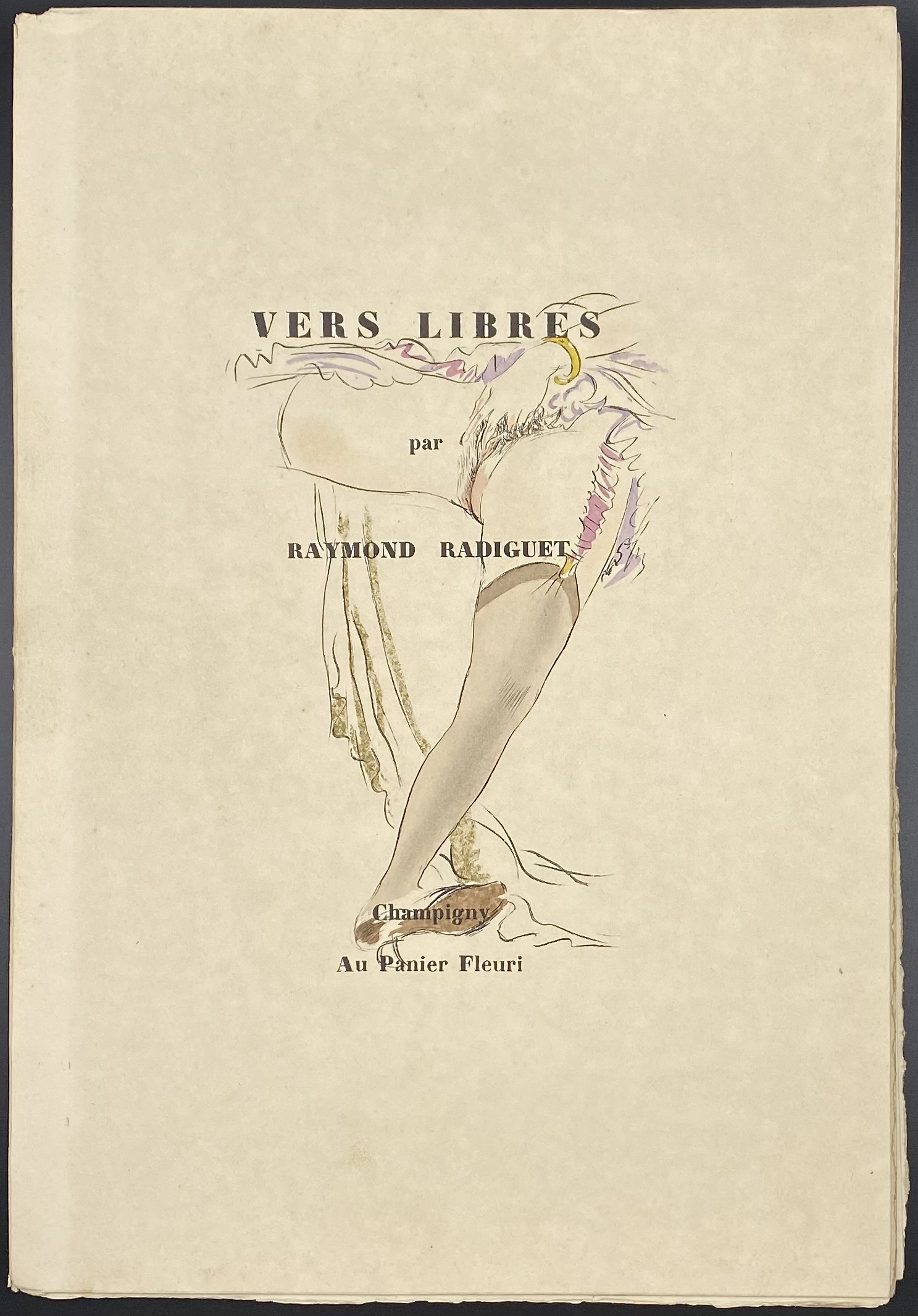
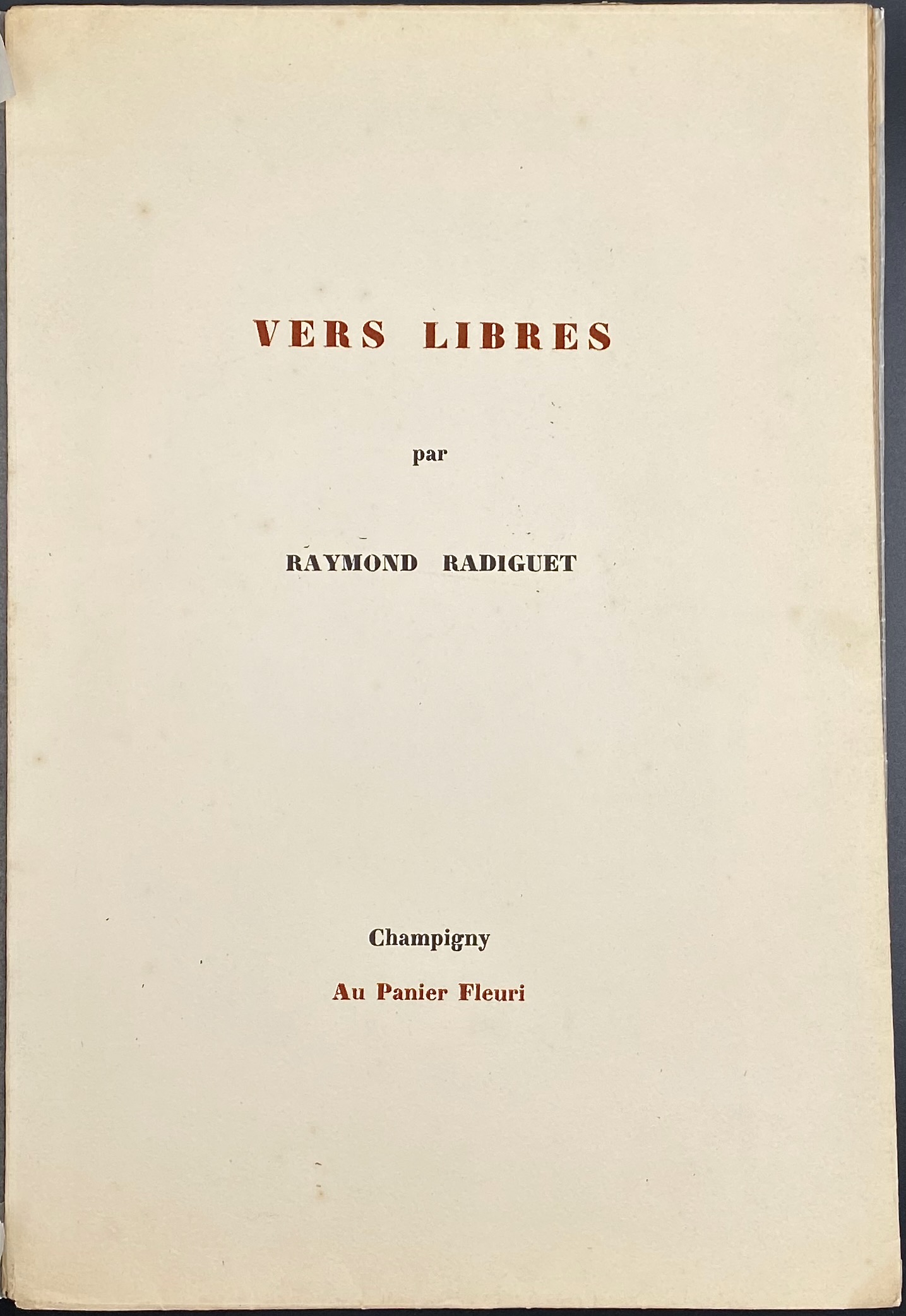
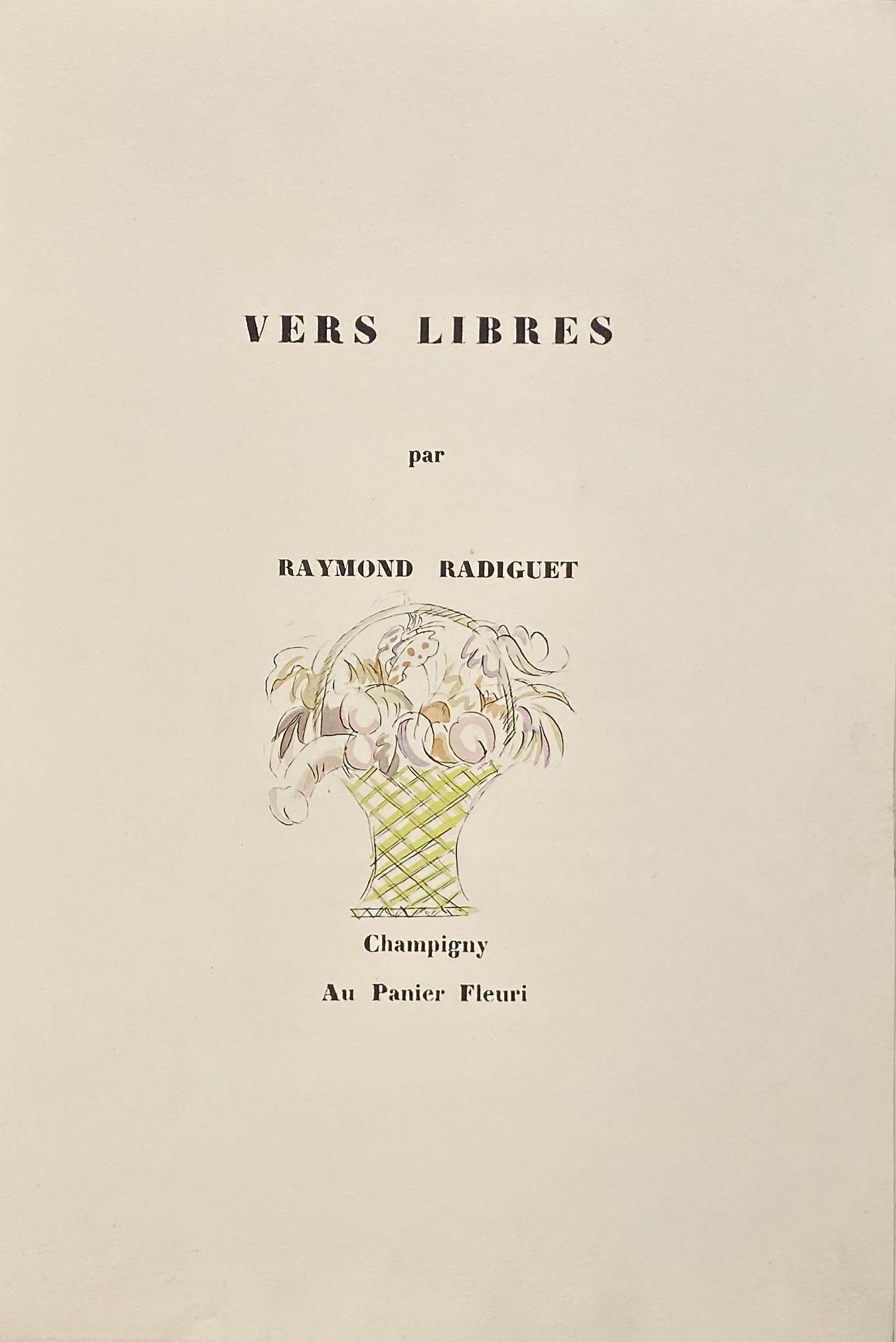
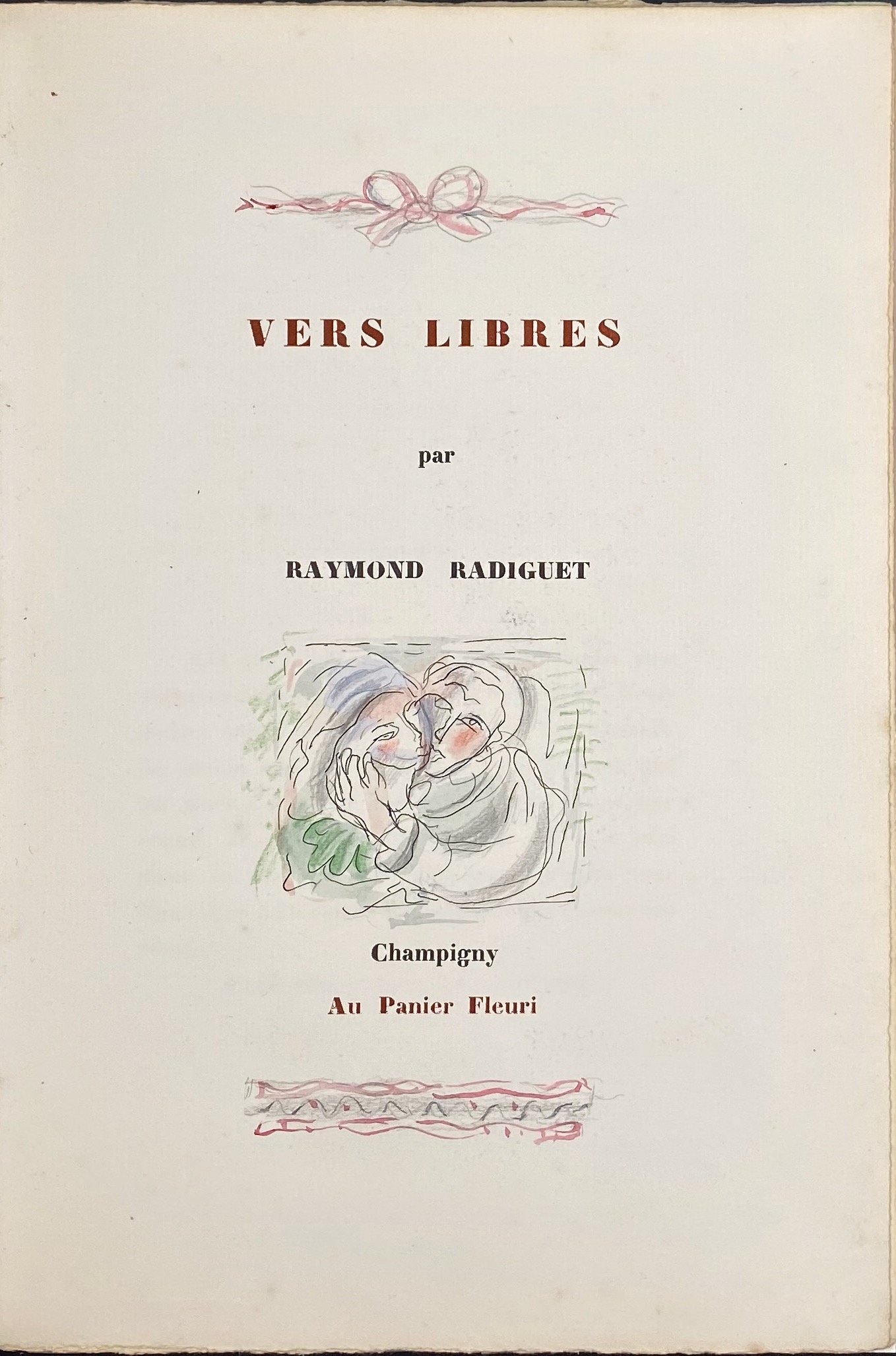
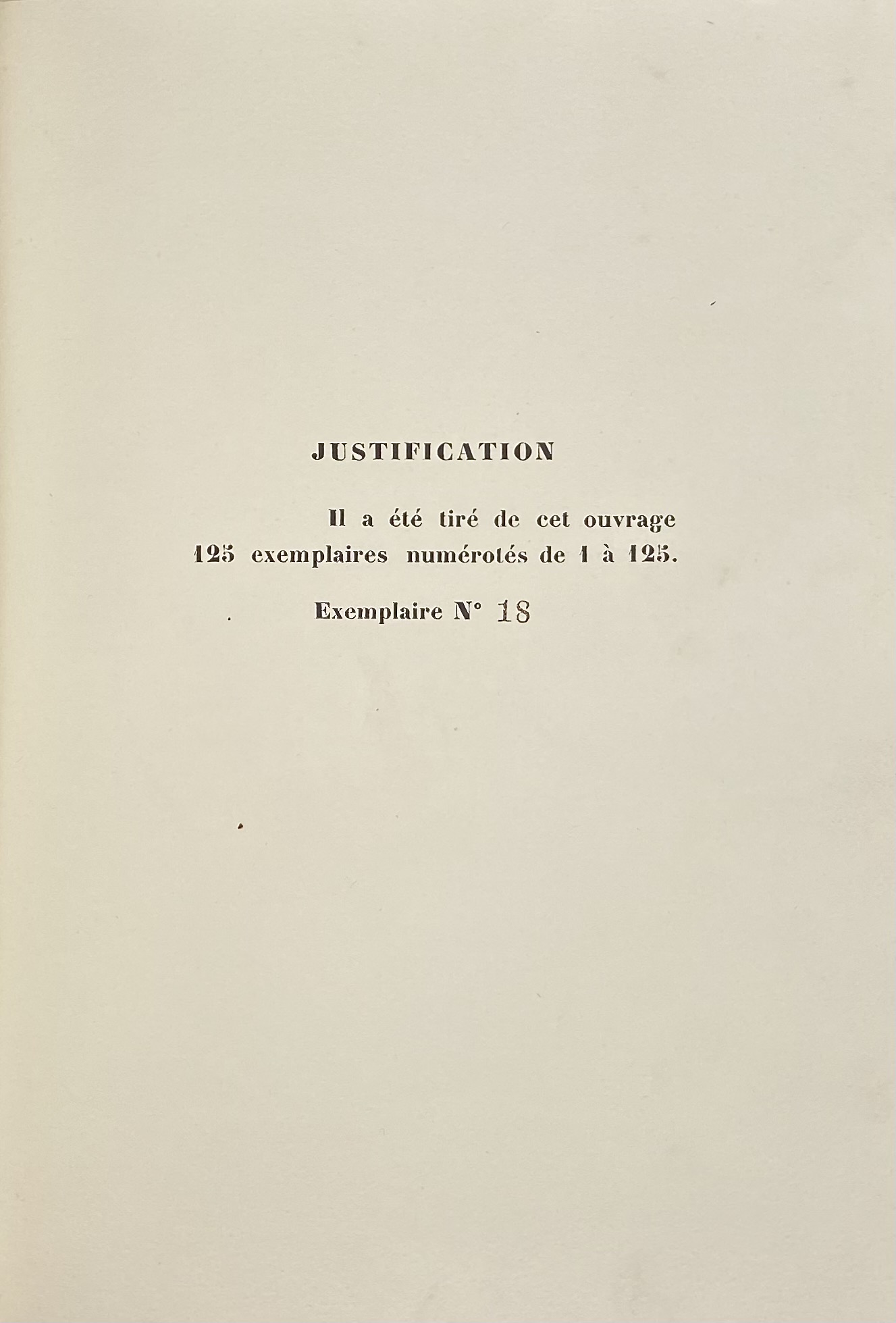
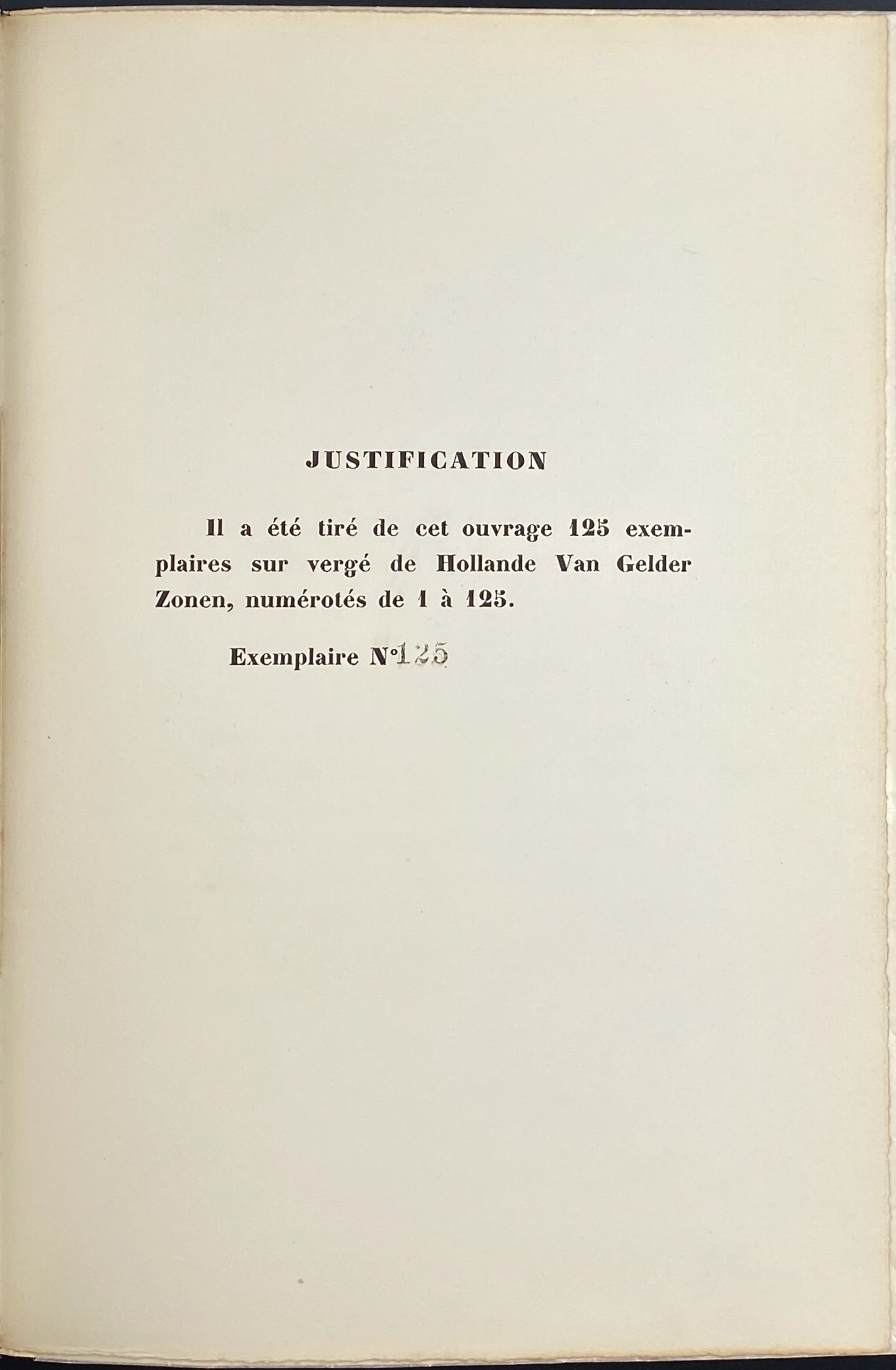
-
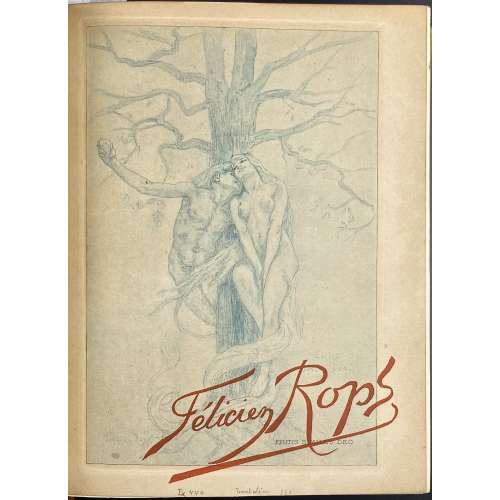 One volume in-4o, 26.5 x 21 x 4.4 cm, bound by Durvand (signed) in yellow ¾ morocco over marbled boards outlined in gilt, spine with raised bands, gilt lettering, vignettes after Félicien Rops in compartments, top margin gilt, marbled endpapers, publisher’s wrappers preserved; enriched with 57 original prints after Félicien Rops and an etched portrait of Félicien Rops by Robert Kastor. Collation: 3 blanks, π4 (orig. front wrapper ‘En souscription…./Etudes sur…’, La tentation…/Érastène Ramiro..., h.t./justification, t.p/blank), 1-274 (paginated 1-215 [216]) χ2 plus 58 leaves of bound-in original prints by various printers on different papers, some on India paper pasted on vergé, with tissue guards, and 1 leave of manuscript ‘Table de gravures dans le texte’; back wrapper with ‘Table des gravures ajoutées’ manuscript to recto, original spine, 2 blanks. Title-page (red and black): Études sur quelques Artistes originaux | — | FÉLICIEN ROPS | par | ÉRASTÈNE RAMIRO | {fleuron} | PARIS | (left): G. PELLET | 51, Rue Le Peletier, 51 | (right): H. FLOURY | 1, Boulevard des Capucines, 1 | 1905 || Limitation: 125 copies, of which 100 copies on Japon à la forme and 25 copies 0n papier de Chine. Photographs here represent the original prints only. Contributors: Eugène Rodrigues-Henriques [Eugène Rodrigues, Erastène Ramiro] (French, 1853 –1928) – author. Félicien Rops (Belgian, 1833 – 1898) – artist. Robert Kastor (French, 1872 – 1935) – artist. Imprimerie Charles Hérissey (Évreux) – printer Gustave Pellet (French, 1859 – 1919) – publisher. Henri Floury (French, 1862 –1961) – publisher. Lucien Durvand (French, 1852 – 1924) – bookbinder.
One volume in-4o, 26.5 x 21 x 4.4 cm, bound by Durvand (signed) in yellow ¾ morocco over marbled boards outlined in gilt, spine with raised bands, gilt lettering, vignettes after Félicien Rops in compartments, top margin gilt, marbled endpapers, publisher’s wrappers preserved; enriched with 57 original prints after Félicien Rops and an etched portrait of Félicien Rops by Robert Kastor. Collation: 3 blanks, π4 (orig. front wrapper ‘En souscription…./Etudes sur…’, La tentation…/Érastène Ramiro..., h.t./justification, t.p/blank), 1-274 (paginated 1-215 [216]) χ2 plus 58 leaves of bound-in original prints by various printers on different papers, some on India paper pasted on vergé, with tissue guards, and 1 leave of manuscript ‘Table de gravures dans le texte’; back wrapper with ‘Table des gravures ajoutées’ manuscript to recto, original spine, 2 blanks. Title-page (red and black): Études sur quelques Artistes originaux | — | FÉLICIEN ROPS | par | ÉRASTÈNE RAMIRO | {fleuron} | PARIS | (left): G. PELLET | 51, Rue Le Peletier, 51 | (right): H. FLOURY | 1, Boulevard des Capucines, 1 | 1905 || Limitation: 125 copies, of which 100 copies on Japon à la forme and 25 copies 0n papier de Chine. Photographs here represent the original prints only. Contributors: Eugène Rodrigues-Henriques [Eugène Rodrigues, Erastène Ramiro] (French, 1853 –1928) – author. Félicien Rops (Belgian, 1833 – 1898) – artist. Robert Kastor (French, 1872 – 1935) – artist. Imprimerie Charles Hérissey (Évreux) – printer Gustave Pellet (French, 1859 – 1919) – publisher. Henri Floury (French, 1862 –1961) – publisher. Lucien Durvand (French, 1852 – 1924) – bookbinder. -
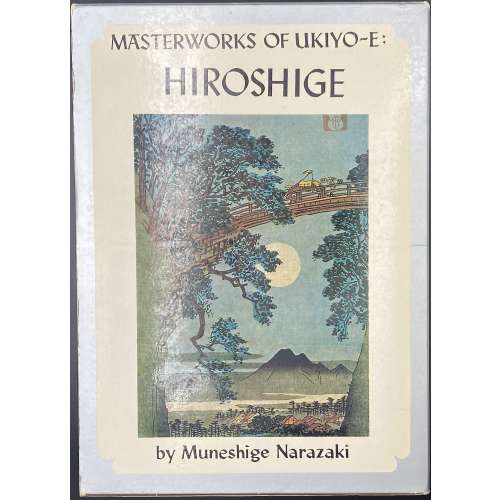 Hardcover volume from the series Masterworks of ukiyo-e, 26.3 x 19 cm, bound in unprimed canvas, red characters on black strip to front, red and black lettering to spine, tan flat endpapers, in a pictorial slipcase with series design (black lettering on silver spine); pp: [1-6]: h.t./frontis. (colour plate pasted in), t.p./imprint, contents/acknowledgements), 7-67 text, 27-30 map, 31-32 f.t./blank, 33-96 (65 plates w/captions). Title-page (in frame): MASTERWORKS OF UKIYO-E | HIROSHIGE | FAMOUS VIEWS | by Muneshige Narazaki | English adaptation by Richard L. Gage | {publisher’s device} | KODANSHA INTERNATIONAL LTD. | Tokyo, Japan & Palo-Alto, Calif., U.S.A | {vertical, between rules in ms 広重]} || Series: Masterworks of ukiyo-e, № 5. Edition: 1st edition ©1968, 2nd printing 1970. Muneshige Narazaki [楢崎 宗重] (Japanese, 1904 – 2001) – author. Utagawa Hiroshige [歌川 広重] a.k.a. Andō Hiroshige [安藤 広重] (Japanese, 1797 – 1858) – artist. Richard L. Gage (American, b. 1934) – adaptation.
Hardcover volume from the series Masterworks of ukiyo-e, 26.3 x 19 cm, bound in unprimed canvas, red characters on black strip to front, red and black lettering to spine, tan flat endpapers, in a pictorial slipcase with series design (black lettering on silver spine); pp: [1-6]: h.t./frontis. (colour plate pasted in), t.p./imprint, contents/acknowledgements), 7-67 text, 27-30 map, 31-32 f.t./blank, 33-96 (65 plates w/captions). Title-page (in frame): MASTERWORKS OF UKIYO-E | HIROSHIGE | FAMOUS VIEWS | by Muneshige Narazaki | English adaptation by Richard L. Gage | {publisher’s device} | KODANSHA INTERNATIONAL LTD. | Tokyo, Japan & Palo-Alto, Calif., U.S.A | {vertical, between rules in ms 広重]} || Series: Masterworks of ukiyo-e, № 5. Edition: 1st edition ©1968, 2nd printing 1970. Muneshige Narazaki [楢崎 宗重] (Japanese, 1904 – 2001) – author. Utagawa Hiroshige [歌川 広重] a.k.a. Andō Hiroshige [安藤 広重] (Japanese, 1797 – 1858) – artist. Richard L. Gage (American, b. 1934) – adaptation. -
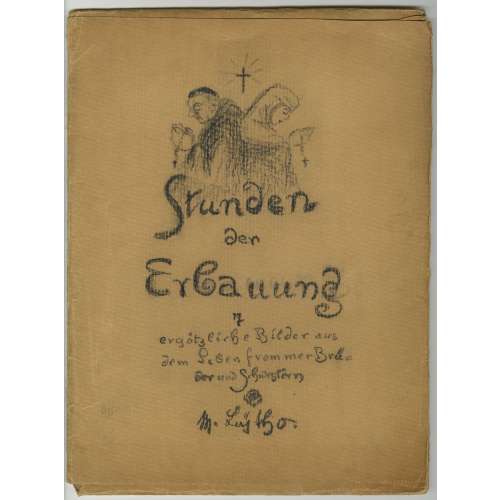 Flapped folder of thick embossed paper 353 x 263 mm, with a vignette and manuscript to front: Stunden der Erbauung | 7 | ergötz liebe Bilder aus | dem Leben frommer Brü | der und Schwestern | • | M. Leÿtho. ||, six graphite pencil drawings, each glued to a paper sheet with guard tissue; mat size 339 x 253 mm mat; drawing size 220 x 165 mm. Translation of the title: Hours of Edification / 7 delightful pictures from the lives of pious brothers and sisters. Information about the artist at www.honesterotica.com: "Mitja Leytho, almost certainly a pseudonym, is yet another mediocre yet fascinating amateur artist from the Germany of the 1920s about whom we know absolutely nothing beyond the four portfolios which bear the ‘Leytho’ signature".
Flapped folder of thick embossed paper 353 x 263 mm, with a vignette and manuscript to front: Stunden der Erbauung | 7 | ergötz liebe Bilder aus | dem Leben frommer Brü | der und Schwestern | • | M. Leÿtho. ||, six graphite pencil drawings, each glued to a paper sheet with guard tissue; mat size 339 x 253 mm mat; drawing size 220 x 165 mm. Translation of the title: Hours of Edification / 7 delightful pictures from the lives of pious brothers and sisters. Information about the artist at www.honesterotica.com: "Mitja Leytho, almost certainly a pseudonym, is yet another mediocre yet fascinating amateur artist from the Germany of the 1920s about whom we know absolutely nothing beyond the four portfolios which bear the ‘Leytho’ signature". -
 Colour (tone) lithography, image 396 x 508 mm, sheet 532 x 654 mm; before signature, undated; pencil ms inscription: Föhrenhain — E. Pelikan / 200M to the lower-right corner of the sheet. Contributor: Emilie Mediz-Pelikan (Austrian, 1861 – 1908) – artist. Seller's description: Austrian-German painter and graphic artist. Emilie Mediz-Pelikan was born in Vöcklabruck in 1861. She studied at the Vienna Academy and followed her teacher Albert Zimmermann to Salzburg and in 1885 to Munich. In 1891 she married the painter and graphic artist Karl Mediz (1868 - 1945), with whom she lived in Vienna and from 1894 in Dresden. She was in contact with the Dachau Artists' Colony and went on study trips to Paris, Belgium, Hungary and Italy. In the Dachau artists' colony she was friends with Adolf Hölzel and Fritz von Uhde. In 1889 and 1890 she spent time in Paris and in the Belgian artists' colony Knokke. In 1898 she was represented at the first art exhibition of the Vienna Secession, and in 1901 at the International Art Exhibition in Dresden. In 1903 she and her husband had a group exhibition, at the Hagenbund in Vienna. In 1904, she showed graphic works at the Dresden royal court art dealer Richter, and in 1905 and 1906 she exhibited at the Berlin Künstlerhaus. It was not until around 1900 that she achieved her artistic breakthrough with her landscape paintings. Since the estate of the artist, who died prematurely in Dresden in 1908, was lost in the former GDR until the 1980s, it was quite late that the artist was rediscovered and revalued both in Austrian art history and on the art market. In 1986, the first major exhibitions took place at the Upper Austrian State Museum and the University of Applied Arts in Vienna, followed by numerous smaller exhibitions in private galleries in Vienna, Linz and Munich. The artist received recognition during her lifetime from numerous prominent fellow painters as well as from the art critic Ludwig Hevesi. Together with Tina Blau, Herbert Boeckl, Marie Egner, Theodor von Hörmann, Franz Jaschke, Eugen Jettel, Ludwig Heinrich Jungnickel, Rudolf Junk, Gustav Klimt, Oskar Kokoschka, Johann Victor Krämer, Heinrich Kühn, Carl Moll, Rudolf Quittner, Rudolf Ribarz, Emil Jakob Schindler, Max Suppantschitsch, Max Weiler, Olga Wisinger-Florian and Alfred Zoff, she was a protagonist of the reception of Impressionism in Austria. This style went down in Austrian art history under the term "Stimmungsimpressionismus".
Colour (tone) lithography, image 396 x 508 mm, sheet 532 x 654 mm; before signature, undated; pencil ms inscription: Föhrenhain — E. Pelikan / 200M to the lower-right corner of the sheet. Contributor: Emilie Mediz-Pelikan (Austrian, 1861 – 1908) – artist. Seller's description: Austrian-German painter and graphic artist. Emilie Mediz-Pelikan was born in Vöcklabruck in 1861. She studied at the Vienna Academy and followed her teacher Albert Zimmermann to Salzburg and in 1885 to Munich. In 1891 she married the painter and graphic artist Karl Mediz (1868 - 1945), with whom she lived in Vienna and from 1894 in Dresden. She was in contact with the Dachau Artists' Colony and went on study trips to Paris, Belgium, Hungary and Italy. In the Dachau artists' colony she was friends with Adolf Hölzel and Fritz von Uhde. In 1889 and 1890 she spent time in Paris and in the Belgian artists' colony Knokke. In 1898 she was represented at the first art exhibition of the Vienna Secession, and in 1901 at the International Art Exhibition in Dresden. In 1903 she and her husband had a group exhibition, at the Hagenbund in Vienna. In 1904, she showed graphic works at the Dresden royal court art dealer Richter, and in 1905 and 1906 she exhibited at the Berlin Künstlerhaus. It was not until around 1900 that she achieved her artistic breakthrough with her landscape paintings. Since the estate of the artist, who died prematurely in Dresden in 1908, was lost in the former GDR until the 1980s, it was quite late that the artist was rediscovered and revalued both in Austrian art history and on the art market. In 1986, the first major exhibitions took place at the Upper Austrian State Museum and the University of Applied Arts in Vienna, followed by numerous smaller exhibitions in private galleries in Vienna, Linz and Munich. The artist received recognition during her lifetime from numerous prominent fellow painters as well as from the art critic Ludwig Hevesi. Together with Tina Blau, Herbert Boeckl, Marie Egner, Theodor von Hörmann, Franz Jaschke, Eugen Jettel, Ludwig Heinrich Jungnickel, Rudolf Junk, Gustav Klimt, Oskar Kokoschka, Johann Victor Krämer, Heinrich Kühn, Carl Moll, Rudolf Quittner, Rudolf Ribarz, Emil Jakob Schindler, Max Suppantschitsch, Max Weiler, Olga Wisinger-Florian and Alfred Zoff, she was a protagonist of the reception of Impressionism in Austria. This style went down in Austrian art history under the term "Stimmungsimpressionismus". -
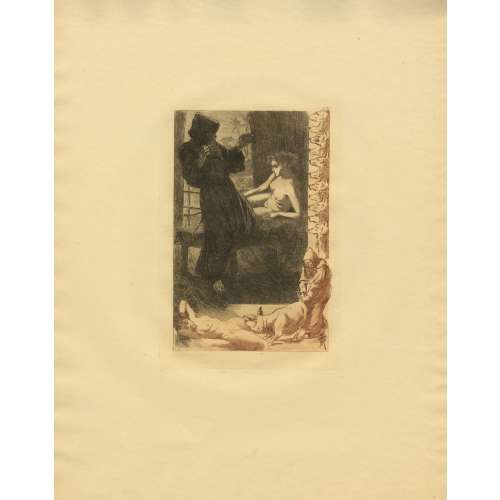 Set of 21 etchings by Martin van Maele for the English edition of ‘Thais’ by Anatole France published in London by Charles Carrington in 1901. Printed on vowe paper without a watermark in two colours with the black image and sepia historiated border. All etchings are inscribed with the artist's monogram; one of the etchings bears inscriptions ORGUEIL, LUXURE, DOUTE (mirror image). Dimensions: sheet: 317 x 250 mm; plate: 170 x 115 mm; image: 155 x 100 mm. Catalogue raisonné: S. A. Perry: № 64. Per Perry, the edition was printed in 500 copies on 'handmade paper watermarked 'Van Gelder'. Contributor: Martin van Maële [Martin, Maurice François Alfred] (French, 1863 – 1926)
Set of 21 etchings by Martin van Maele for the English edition of ‘Thais’ by Anatole France published in London by Charles Carrington in 1901. Printed on vowe paper without a watermark in two colours with the black image and sepia historiated border. All etchings are inscribed with the artist's monogram; one of the etchings bears inscriptions ORGUEIL, LUXURE, DOUTE (mirror image). Dimensions: sheet: 317 x 250 mm; plate: 170 x 115 mm; image: 155 x 100 mm. Catalogue raisonné: S. A. Perry: № 64. Per Perry, the edition was printed in 500 copies on 'handmade paper watermarked 'Van Gelder'. Contributor: Martin van Maële [Martin, Maurice François Alfred] (French, 1863 – 1926) -
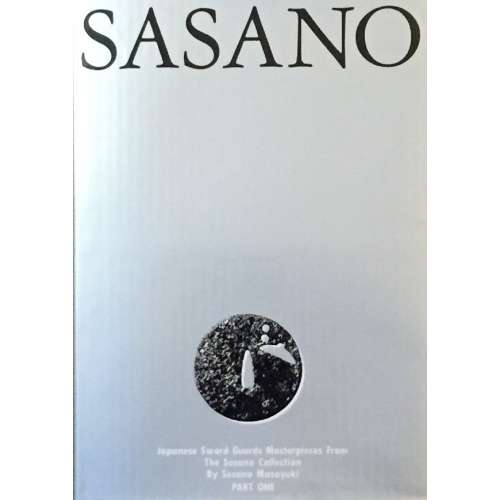
Sasano: Japanese Sword Guard Masterpieces from the Sasano Collection. By Sasano Masayuki. Part One. Published in Japan in 1994 by Daisuke Saito, Mega Co., Ltd. Translated by Tomoko Saro. Printed by Mitsumura Printing Co., Ltd. 304 x 217 x 30 mm
-
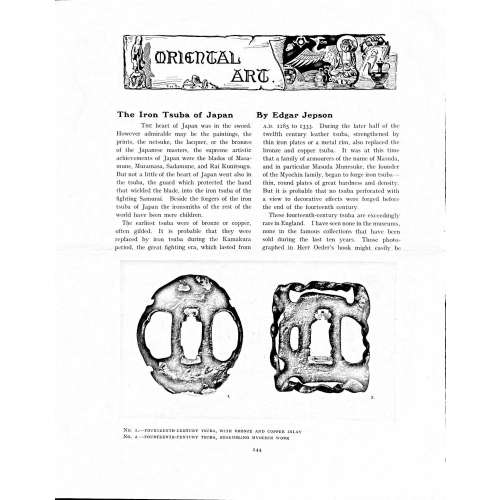 Magazine article by Edgar Jepson: The Iron Tsuba of Japan (Section: Oriental Art), published in volume Vol. 70 (September–December) of The Connoisseur: An Illustrated Magazine for Collectors, Vol. 70 (September–December); pp. 143-152 / C. Reginald Grundy [ed.] — London: Published by the Proprietor, W. CLAUSE JOHNSON, at the Editorial and Advertisement Offices of The Connoisseur, 1924. Owner's half black morocco, gilt lettering to spine, blue cloth boards. Two volumes bound together without original covers. Size 28.5 x 22 cm. Vol. 1: The Connoisseur | An Illustrated Magazine | For Collectors | Edited by C. Reginald Grundy | Vol. LXIX. | (MAY—AUGUST, 1924) | LONDON | Published by the Proprietor, W. CLAUSE JOHNSON, at the | Editorial and Advertisement Offices of The Connoisseur, | at 1, Duke Street, St. James's, S.W. 1 | 1924 || Pp.: [i-ii] iii-xviii [xix] [1, 2 - plate] 3-249 [250]. Vol. 2: The Connoisseur | An Illustrated Magazine | For Collectors | Edited by C. Reginald Grundy | Vol. LXX. | (SEPTEMBER—DECEMBER, 1924) | LONDON | Published by the Proprietor, W. CLAUSE JOHNSON, at the | Editorial and Advertisement Offices of The Connoisseur, | at 1, Duke Street, St. James's, S.W. 1 | 1924 || Pp.: [i-ii] iii-xxii [2 blanks] [1, 2 - plate] 3-261 [262]. The Iron Tsuba of Japan by Edgar Jepson The heart of Japan was in the sword. However admirable may be the paintings, the prints, the netsuke, the lacquer, or the bronzes of the Japanese masters, the supreme artistic achievements of Japan were the blades of Masamune, Muramasa, Sadamune, and Rai Kunitsugu. But not a little of the heart of Japan went also in the tsuba, the guard which protected the hand that wielded the blade, into the iron tsuba of the fighting Samurai. Beside the forgers of the iron tsuba of Japan the ironsmiths of the rest of the world have been mere children. The earliest tsuba were of bronze or copper, often gilded. It is probable that they were replaced by iron tsuba during the Kamakura period, the great fighting era, which lasted from A.D. 1185 to 1333. During the later half of the twelfth century leather tsuba, strengthened by thin iron plates or a metal rim, also replaced the bronze and copper tsuba. It was at this time that a family of armourers of the name of Masuda, and in particular Masuda Munesuke, the founder of the Myochin family, began to forge iron tsuba — thin, round plates of great hardness and density. But it is probable that no tsuba perforated with a view to decorative effects were forged before the end of the fourteenth century. These fourteenth-century tsuba are exceedingly rare in England. I have seen none in the museums, none in the famous collections that have been sold during the last ten years. Those photographed in Herr Oeder's book might easily be the fifteenth century. No. 1 is a curious cup-shape tsuba decorated with a bronze and copper inlay. No. 2, with its edges curiously twisted in the forging, looks like Myochin work. But it is not of the Myochin iron. The Myochin family produced some of the greatest ironsmiths of Japan. Armourers first of all, tsubasmiths, forgers of sake-kettles, articulated reptiles, crustacea, and insects — everything that can be done with iron they did; they pushed their medium to its limit. They were forging iron tsuba in 1160, and they were still forging them in 1860. And it was their own iron, or rather their own steel. They discovered the secret of it early, and they kept that secret in the family for all those hundreds of years. There is no mistaking a Myochin tsuba: balance it on your finger and tap it with a piece of metal, always it gives forth a clear bell-like ring that you get from the work of no other ironsmith, Japanese or European. Always the Myochin tsuba is before everything a protection to the hand of the swordsman; to that everything is, as it should be, subordinated. No. 3 is a Myochin tsuba of the fifteenth century, and probably of the early fifteenth century. No. 4, by Myochin Munetaka, perforated with a grotesque figure, is an example of that twisting and twisting of the iron in the forging till it forms a pattern like the grain of wood. The Myochin smiths invented these wood-grain tsuba, and no other smiths equalled them in their forging. In the sixteenth century, the fighting tsuba was probably at its best. It was a century of great tsubasmiths. Then the first Nobuiye, whose tsuba fetched £100 apiece, circa 1800, in Japan, and the first Kaneiye flourished. No. 5 is a tsuba forged by a great smith, Iyesada of Sotome, in the manner of Nobuiye I, decorated with the karakusa tendrils that Nobuiye delighted in, with lightning and clouds. No. 6 is a guard of Sanada Tembo, the chief smith of the Tembo family, stamped, punning fashion, with the character Tembo. Akin to the Tembo tsuba were those of the Kiami and Hoan smiths. Then also the Heianjo smiths and the Owari smiths, especially those of Nagoya and the Yamakichi family, forged their strongest tsuba. Those of the Yamakichi were tested after the forging by being pounded in iron mortars — at least, so the legend runs. But they were a sternly utilitarian family, and I have never seen a Yamakichi tsuba of any beauty. In the later half of the fifteenth century arose the fashion of decorating tsuba with an inlay, zogan, of bronze. The Heianjo tsuba, forged at Kyoto in the latter half of the fifteenth and the beginning of the sixteenth century, were often thus inlaid. The earliest of them were called "Onin", of which No. 7 is an example. In addition to the bronze inlay around the edge, it is inlaid with a representation, some say, of snow; others say, of the duckweed on a pond. No. 8 is probably a Heianjo tsuba, but I am not quite sure about it. The inlaid acacia branches might be very early Shoami work. But to judge by the iron, it is a fifteenth-century tsuba; and the authorities place the beginning of the Shoami school not later than early in the sixteenth century. No. 10 is an example of the Fushimi-zogan, a flat inlay of a light-coloured bronze. These tsuba took their name from the fact that they were first forged at Fushimi, in Yamashiro, in the sixteenth century. It is of the type known as Mon-zukashi, perforated with crests (mon) à jour. The Yoshiro-zogan tsuba were also first forged at Fushimi by Yoshiro Naomasa. They were distinguished from the Fushimi-zogan by the fact that their inlay was generally a little raised-not always-for the inlay of No. 9, a tsuba forged by a later nineteenth-century Yoshiro, is quite flat. It is an interesting tsuba, for, with its decoration grown florid and excessive, it marks the intermediate stage between the simple and delightful designs of the genuine fighting tsuba and the elaborate pictures in gold and silver on the tsuba of the eighteenth-century smiths of Awa and Kyoto, which have become mere ornaments of the goldsmith. The Gomoku-zogan (No. 11) tsuba were probably first forged earlier than the Fushimi and Yoshiro-zogan tsuba. This inlay, in slight relief, is a representation in a light-coloured bronze and copper of twigs caught in the eddies of streams. The seventeenth century and early eighteenth century were the great periods of perforated tsuba. The designs, and they are often admirable, are for the most part in plain fretwork; but they are also chased. No. 12, a crane under an acacia, is a tsuba of a Higo smith, great forgers of fighting tsuba during this period. These smiths also excelled in nunome zogan, a very thin gold and silver inlay, with which they further decorated their perforated guards. The smiths of the Umetada and Shoami families also forged iron tsuba during this period; but their designs, though sometimes pleasing enough, are rarely fine. The best work of Myoju Umetada is in sentoku, not iron. The Choshu smiths, coming later, surpass the perforated guards of both the Umetada and Shoami smiths in beauty of design. No. 13, a lotus in the round, not only fretwork, but also engraved, is a good example of the admirable balance they so often attained in their designs. It is a sufficiently realistic lotus, but yet of a delightful simplicity. In considerable contrast is No. 14, the dragon by Soheishi Soten — one of the only two authentic tsuba of his forging known — the first forger of hikone-bori tsuba, which were in extraordinary favour in Japan during the eighteenth century, and illustrated every important event in Japanese history. It is on the elaborate side, but fine, strong work, and an excellent guard to the hand, for the lighter and more open part, which gives the design its admirable balance, is on the inside, and not exposed to the full swing of an opponent's blade. A few years ago there was a tendency to decry the Namban tsuba as having sprung too directly from foreign sources. But though the original suggestion may have been Chinese, or, as some say, Portuguese, the Japanese made it entirely their own, as characteristically Japanese as anything can well be, but, it must be admitted, of a decadent period. The school took its rise at the beginning of the seventeenth century, and the early tsuba were forged of a specially hard iron, the Wootz, imported from Southern India. No. 15, the signs of the Zodiac, is an excellent tsuba from the fighting point of view. Both it and No. 16 are of quite charming, if elaborate, design, and both of them, with their delicate scroll-work, so astonishingly undercut, are the very last word in the work of the ironsmith-veritable iron lace. To return to the simpler perforated tsuba, the smiths of Akasaka, a suburb of Tokyo, produced probably the most charming designs. Their style derives considerably from the Higo smiths, and their earlier fighting tsuba are very like the Higo tsuba. But always their work was just a little lighter than that of the Higo smiths, and in the end they moved right away from them and became the forgers of very light guards indeed. No. 17, is a representation of the Hiyokudori, the fabulous double bird, in which were reincarnated the souls of the two lovers, Gompachi and Komurasaki; and No. 18, “the tsuba of a hundred ducks "— there are about forty — are characteristic designs of the school. In the work of the Akasaka smiths the balance, which makes the design of a good tsuba so admirable and delightful, attains its height. This admirable balance seems often to be obtained by a deliberate sacrifice of symmetry. About nine hundred and ninety-nine European ironsmiths out of a thousand would have made the right and left sides of the Hiyoku-dori line by line, and perforation by perforation, exactly alike; he would have cut out exactly as many ducks on the one side of “the tsuba of a hundred ducks” as on the other, and made each duck on the right side correspond exactly in position and attitude with a duck on the left side. By variations the tsubasmith attained a finer balance, almost a higher symmetry. No. 19, often called by collectors the "rose-window" tsuba, but really a stylised chrysanthemum, is a favourite design of the Akasaka smiths, but Hizen work and inlaid in the Hizen manner with gold nunome. No. 20 is a Satsuma tsuba of the middle period. The Satsuma smiths of the nineteenth century produced probably the most ornate of all the iron guards, for the most part calibashes and beans with their leaves and tendrils realistic in the extreme, but of charming design. Few crafts have been carried further than that of the tsubasmith; few crafts working in a difficult medium have handled more subjects with greater feeling for beauty or greater liveliness of fancy. It is interesting to note again and again how school influences school, and smith influences smith. But, as in all the applied arts, the finest tsuba were forged by men who never lost sight of the purpose of a tsuba, that it is before everything a protection to the hand, and never subjected that purpose to a passion for virtuosity. Illustrations: No 1. FOURTEENTH-CENTURY TSUBA, WITH BRONZE AND COPPER INLAY No. 2. FOURTEENTH-CENTURY TSUBA, RESEMBLING MYOCHIN WORK No. 3. MYOCHIN TSUBA, FIFTEENTH CENTURY No. 4. MYOCHIN TSUBA, NINETEENTH CENTURY No. 5. SIXTEENTH-CENTURY TSUBA No. 6. SIXTEENTH-CENTURY TSUBA BY IYESADA OF SOTOME BY SANADA TEMBO No. 7. ONIN TSUBA No. 8. HEIANJO (?) TSUBA No. 9. YOSHIRO TSUBA, NINETEENTH CENTURY No. 10. FUSHIMI-ZOGAN, NINETEENTH CENTURY No. 11.- GOMOKU-ZOGAN, SIXTEENTH CENTURY No. 12. HIGO TSUBA, SEVENTEENTH CENTURY No. 13. CHOSHU TSUBA, SEVENTEENTH CENTURY No. 14. SOTEN TSUBA, SEVENTEENTH CENTURY No. 15. NAMBAN TSUBA, EIGHTEENTH CENTURY No. 16. NAMBAN TSUBA, NINETEENTH CENTURY Nos. 17. AND 18. AKASAKA TSUBA, EIGHTEENTH CENTURY No. 19. HIZEN TSUBA, EIGHTEENTH CENTURY No. 20. SATSUMA TSUBA, EIGHTEENTH CENTURY
Magazine article by Edgar Jepson: The Iron Tsuba of Japan (Section: Oriental Art), published in volume Vol. 70 (September–December) of The Connoisseur: An Illustrated Magazine for Collectors, Vol. 70 (September–December); pp. 143-152 / C. Reginald Grundy [ed.] — London: Published by the Proprietor, W. CLAUSE JOHNSON, at the Editorial and Advertisement Offices of The Connoisseur, 1924. Owner's half black morocco, gilt lettering to spine, blue cloth boards. Two volumes bound together without original covers. Size 28.5 x 22 cm. Vol. 1: The Connoisseur | An Illustrated Magazine | For Collectors | Edited by C. Reginald Grundy | Vol. LXIX. | (MAY—AUGUST, 1924) | LONDON | Published by the Proprietor, W. CLAUSE JOHNSON, at the | Editorial and Advertisement Offices of The Connoisseur, | at 1, Duke Street, St. James's, S.W. 1 | 1924 || Pp.: [i-ii] iii-xviii [xix] [1, 2 - plate] 3-249 [250]. Vol. 2: The Connoisseur | An Illustrated Magazine | For Collectors | Edited by C. Reginald Grundy | Vol. LXX. | (SEPTEMBER—DECEMBER, 1924) | LONDON | Published by the Proprietor, W. CLAUSE JOHNSON, at the | Editorial and Advertisement Offices of The Connoisseur, | at 1, Duke Street, St. James's, S.W. 1 | 1924 || Pp.: [i-ii] iii-xxii [2 blanks] [1, 2 - plate] 3-261 [262]. The Iron Tsuba of Japan by Edgar Jepson The heart of Japan was in the sword. However admirable may be the paintings, the prints, the netsuke, the lacquer, or the bronzes of the Japanese masters, the supreme artistic achievements of Japan were the blades of Masamune, Muramasa, Sadamune, and Rai Kunitsugu. But not a little of the heart of Japan went also in the tsuba, the guard which protected the hand that wielded the blade, into the iron tsuba of the fighting Samurai. Beside the forgers of the iron tsuba of Japan the ironsmiths of the rest of the world have been mere children. The earliest tsuba were of bronze or copper, often gilded. It is probable that they were replaced by iron tsuba during the Kamakura period, the great fighting era, which lasted from A.D. 1185 to 1333. During the later half of the twelfth century leather tsuba, strengthened by thin iron plates or a metal rim, also replaced the bronze and copper tsuba. It was at this time that a family of armourers of the name of Masuda, and in particular Masuda Munesuke, the founder of the Myochin family, began to forge iron tsuba — thin, round plates of great hardness and density. But it is probable that no tsuba perforated with a view to decorative effects were forged before the end of the fourteenth century. These fourteenth-century tsuba are exceedingly rare in England. I have seen none in the museums, none in the famous collections that have been sold during the last ten years. Those photographed in Herr Oeder's book might easily be the fifteenth century. No. 1 is a curious cup-shape tsuba decorated with a bronze and copper inlay. No. 2, with its edges curiously twisted in the forging, looks like Myochin work. But it is not of the Myochin iron. The Myochin family produced some of the greatest ironsmiths of Japan. Armourers first of all, tsubasmiths, forgers of sake-kettles, articulated reptiles, crustacea, and insects — everything that can be done with iron they did; they pushed their medium to its limit. They were forging iron tsuba in 1160, and they were still forging them in 1860. And it was their own iron, or rather their own steel. They discovered the secret of it early, and they kept that secret in the family for all those hundreds of years. There is no mistaking a Myochin tsuba: balance it on your finger and tap it with a piece of metal, always it gives forth a clear bell-like ring that you get from the work of no other ironsmith, Japanese or European. Always the Myochin tsuba is before everything a protection to the hand of the swordsman; to that everything is, as it should be, subordinated. No. 3 is a Myochin tsuba of the fifteenth century, and probably of the early fifteenth century. No. 4, by Myochin Munetaka, perforated with a grotesque figure, is an example of that twisting and twisting of the iron in the forging till it forms a pattern like the grain of wood. The Myochin smiths invented these wood-grain tsuba, and no other smiths equalled them in their forging. In the sixteenth century, the fighting tsuba was probably at its best. It was a century of great tsubasmiths. Then the first Nobuiye, whose tsuba fetched £100 apiece, circa 1800, in Japan, and the first Kaneiye flourished. No. 5 is a tsuba forged by a great smith, Iyesada of Sotome, in the manner of Nobuiye I, decorated with the karakusa tendrils that Nobuiye delighted in, with lightning and clouds. No. 6 is a guard of Sanada Tembo, the chief smith of the Tembo family, stamped, punning fashion, with the character Tembo. Akin to the Tembo tsuba were those of the Kiami and Hoan smiths. Then also the Heianjo smiths and the Owari smiths, especially those of Nagoya and the Yamakichi family, forged their strongest tsuba. Those of the Yamakichi were tested after the forging by being pounded in iron mortars — at least, so the legend runs. But they were a sternly utilitarian family, and I have never seen a Yamakichi tsuba of any beauty. In the later half of the fifteenth century arose the fashion of decorating tsuba with an inlay, zogan, of bronze. The Heianjo tsuba, forged at Kyoto in the latter half of the fifteenth and the beginning of the sixteenth century, were often thus inlaid. The earliest of them were called "Onin", of which No. 7 is an example. In addition to the bronze inlay around the edge, it is inlaid with a representation, some say, of snow; others say, of the duckweed on a pond. No. 8 is probably a Heianjo tsuba, but I am not quite sure about it. The inlaid acacia branches might be very early Shoami work. But to judge by the iron, it is a fifteenth-century tsuba; and the authorities place the beginning of the Shoami school not later than early in the sixteenth century. No. 10 is an example of the Fushimi-zogan, a flat inlay of a light-coloured bronze. These tsuba took their name from the fact that they were first forged at Fushimi, in Yamashiro, in the sixteenth century. It is of the type known as Mon-zukashi, perforated with crests (mon) à jour. The Yoshiro-zogan tsuba were also first forged at Fushimi by Yoshiro Naomasa. They were distinguished from the Fushimi-zogan by the fact that their inlay was generally a little raised-not always-for the inlay of No. 9, a tsuba forged by a later nineteenth-century Yoshiro, is quite flat. It is an interesting tsuba, for, with its decoration grown florid and excessive, it marks the intermediate stage between the simple and delightful designs of the genuine fighting tsuba and the elaborate pictures in gold and silver on the tsuba of the eighteenth-century smiths of Awa and Kyoto, which have become mere ornaments of the goldsmith. The Gomoku-zogan (No. 11) tsuba were probably first forged earlier than the Fushimi and Yoshiro-zogan tsuba. This inlay, in slight relief, is a representation in a light-coloured bronze and copper of twigs caught in the eddies of streams. The seventeenth century and early eighteenth century were the great periods of perforated tsuba. The designs, and they are often admirable, are for the most part in plain fretwork; but they are also chased. No. 12, a crane under an acacia, is a tsuba of a Higo smith, great forgers of fighting tsuba during this period. These smiths also excelled in nunome zogan, a very thin gold and silver inlay, with which they further decorated their perforated guards. The smiths of the Umetada and Shoami families also forged iron tsuba during this period; but their designs, though sometimes pleasing enough, are rarely fine. The best work of Myoju Umetada is in sentoku, not iron. The Choshu smiths, coming later, surpass the perforated guards of both the Umetada and Shoami smiths in beauty of design. No. 13, a lotus in the round, not only fretwork, but also engraved, is a good example of the admirable balance they so often attained in their designs. It is a sufficiently realistic lotus, but yet of a delightful simplicity. In considerable contrast is No. 14, the dragon by Soheishi Soten — one of the only two authentic tsuba of his forging known — the first forger of hikone-bori tsuba, which were in extraordinary favour in Japan during the eighteenth century, and illustrated every important event in Japanese history. It is on the elaborate side, but fine, strong work, and an excellent guard to the hand, for the lighter and more open part, which gives the design its admirable balance, is on the inside, and not exposed to the full swing of an opponent's blade. A few years ago there was a tendency to decry the Namban tsuba as having sprung too directly from foreign sources. But though the original suggestion may have been Chinese, or, as some say, Portuguese, the Japanese made it entirely their own, as characteristically Japanese as anything can well be, but, it must be admitted, of a decadent period. The school took its rise at the beginning of the seventeenth century, and the early tsuba were forged of a specially hard iron, the Wootz, imported from Southern India. No. 15, the signs of the Zodiac, is an excellent tsuba from the fighting point of view. Both it and No. 16 are of quite charming, if elaborate, design, and both of them, with their delicate scroll-work, so astonishingly undercut, are the very last word in the work of the ironsmith-veritable iron lace. To return to the simpler perforated tsuba, the smiths of Akasaka, a suburb of Tokyo, produced probably the most charming designs. Their style derives considerably from the Higo smiths, and their earlier fighting tsuba are very like the Higo tsuba. But always their work was just a little lighter than that of the Higo smiths, and in the end they moved right away from them and became the forgers of very light guards indeed. No. 17, is a representation of the Hiyokudori, the fabulous double bird, in which were reincarnated the souls of the two lovers, Gompachi and Komurasaki; and No. 18, “the tsuba of a hundred ducks "— there are about forty — are characteristic designs of the school. In the work of the Akasaka smiths the balance, which makes the design of a good tsuba so admirable and delightful, attains its height. This admirable balance seems often to be obtained by a deliberate sacrifice of symmetry. About nine hundred and ninety-nine European ironsmiths out of a thousand would have made the right and left sides of the Hiyoku-dori line by line, and perforation by perforation, exactly alike; he would have cut out exactly as many ducks on the one side of “the tsuba of a hundred ducks” as on the other, and made each duck on the right side correspond exactly in position and attitude with a duck on the left side. By variations the tsubasmith attained a finer balance, almost a higher symmetry. No. 19, often called by collectors the "rose-window" tsuba, but really a stylised chrysanthemum, is a favourite design of the Akasaka smiths, but Hizen work and inlaid in the Hizen manner with gold nunome. No. 20 is a Satsuma tsuba of the middle period. The Satsuma smiths of the nineteenth century produced probably the most ornate of all the iron guards, for the most part calibashes and beans with their leaves and tendrils realistic in the extreme, but of charming design. Few crafts have been carried further than that of the tsubasmith; few crafts working in a difficult medium have handled more subjects with greater feeling for beauty or greater liveliness of fancy. It is interesting to note again and again how school influences school, and smith influences smith. But, as in all the applied arts, the finest tsuba were forged by men who never lost sight of the purpose of a tsuba, that it is before everything a protection to the hand, and never subjected that purpose to a passion for virtuosity. Illustrations: No 1. FOURTEENTH-CENTURY TSUBA, WITH BRONZE AND COPPER INLAY No. 2. FOURTEENTH-CENTURY TSUBA, RESEMBLING MYOCHIN WORK No. 3. MYOCHIN TSUBA, FIFTEENTH CENTURY No. 4. MYOCHIN TSUBA, NINETEENTH CENTURY No. 5. SIXTEENTH-CENTURY TSUBA No. 6. SIXTEENTH-CENTURY TSUBA BY IYESADA OF SOTOME BY SANADA TEMBO No. 7. ONIN TSUBA No. 8. HEIANJO (?) TSUBA No. 9. YOSHIRO TSUBA, NINETEENTH CENTURY No. 10. FUSHIMI-ZOGAN, NINETEENTH CENTURY No. 11.- GOMOKU-ZOGAN, SIXTEENTH CENTURY No. 12. HIGO TSUBA, SEVENTEENTH CENTURY No. 13. CHOSHU TSUBA, SEVENTEENTH CENTURY No. 14. SOTEN TSUBA, SEVENTEENTH CENTURY No. 15. NAMBAN TSUBA, EIGHTEENTH CENTURY No. 16. NAMBAN TSUBA, NINETEENTH CENTURY Nos. 17. AND 18. AKASAKA TSUBA, EIGHTEENTH CENTURY No. 19. HIZEN TSUBA, EIGHTEENTH CENTURY No. 20. SATSUMA TSUBA, EIGHTEENTH CENTURY -
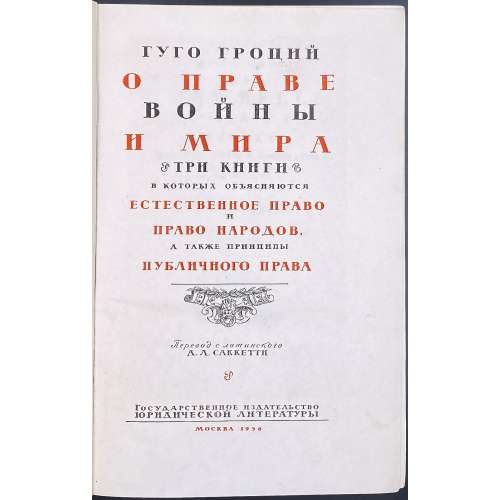 Title page (black and red): ГУГО ГРОЦИЙ | О ПРАВЕ | ВОЙНЫ | И МИРА | ß ТРИ КНИГИ ß | В КОТОРЫХ ОБЪЯСНЯЮТСЯ | ЕСТЕСТВЕННОЕ ПРАВО | И | ПРАВО НАРОДОВ, | А ТАКЖЕ ПРИНЦИПЫ | ПУБЛИЧНОГО ПРАВА | {device} | Перевод с латинского | А. Л. САККЕТТИ | Государственное издательство | ЮРИДИЧЕСКОЙ ЛИТЕРАТУРЫ | МОСКВА 1956 || Verso t.p.: Под общей редакцией профессора С. Б. КРЫЛОВА Pagination: [1, 2] – t.p. / editor, [3] 4-867 [868] – contents, errata slip, 4 plates extraneous to collation: frontis. portrait, t.p. Amsterdam edition of 1646, t.p. Russian edition of c. 1710, Lovensteyn castle. Collation: 8vo; [1]8 2-548 552. Binding: Publisher’s brown cloth, blind-stamped lettering to front board, elements of design in black and gilt lettering to spine. Вступительная статья А. А. Желудкова. Author: Hugo Grotius [Huig or Hugo de Groot] (Dutch, 1583 – 1645). Originally published by Nicolas Buon in Paris in 1625 in Latin under the title: De iure belli ac pacis (English: On the Law of War and Peace). Editor: Сергей Борисович Крылов (Russian, 1888 – 1958). Translator: Александр Ливериевич Саккетти (Russian, 1881 – 1966).
Title page (black and red): ГУГО ГРОЦИЙ | О ПРАВЕ | ВОЙНЫ | И МИРА | ß ТРИ КНИГИ ß | В КОТОРЫХ ОБЪЯСНЯЮТСЯ | ЕСТЕСТВЕННОЕ ПРАВО | И | ПРАВО НАРОДОВ, | А ТАКЖЕ ПРИНЦИПЫ | ПУБЛИЧНОГО ПРАВА | {device} | Перевод с латинского | А. Л. САККЕТТИ | Государственное издательство | ЮРИДИЧЕСКОЙ ЛИТЕРАТУРЫ | МОСКВА 1956 || Verso t.p.: Под общей редакцией профессора С. Б. КРЫЛОВА Pagination: [1, 2] – t.p. / editor, [3] 4-867 [868] – contents, errata slip, 4 plates extraneous to collation: frontis. portrait, t.p. Amsterdam edition of 1646, t.p. Russian edition of c. 1710, Lovensteyn castle. Collation: 8vo; [1]8 2-548 552. Binding: Publisher’s brown cloth, blind-stamped lettering to front board, elements of design in black and gilt lettering to spine. Вступительная статья А. А. Желудкова. Author: Hugo Grotius [Huig or Hugo de Groot] (Dutch, 1583 – 1645). Originally published by Nicolas Buon in Paris in 1625 in Latin under the title: De iure belli ac pacis (English: On the Law of War and Peace). Editor: Сергей Борисович Крылов (Russian, 1888 – 1958). Translator: Александр Ливериевич Саккетти (Russian, 1881 – 1966). -
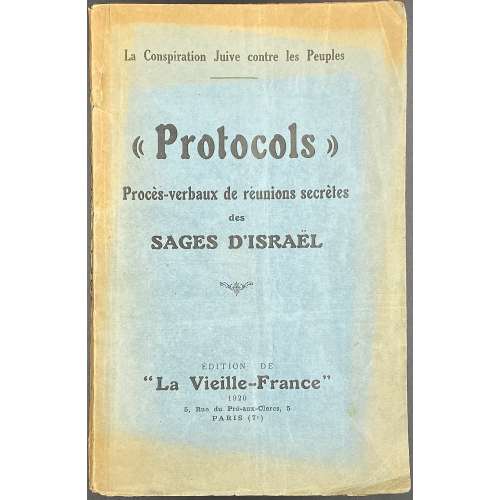 Cover: La Conspiration Juive contre les Peuples | « Protocols » | Procès-verbaux de réunions secrètes | des | SAGES D'ISRAËL | ÉDITION DE | “La Vieille-France” | 1920 | 5Rue du Pré-aux-Clercs, 5 | PARIS (7e) || Title: « Protocols » | Procès-verbaux de réunions secrètes | des | SAGES D'ISRAËL | ÉDITION DE | “La Vieille-France” | 1920 | 5Rue du Pré-aux-Clercs, 5 | PARIS (7e) || Pagination: [1, 2] – t.p. / blank, 3-141 [142 blank] [2] – table / blank. Pp.: 1-11 – Introduction; 13-82 – Protocols; 97-141 – Le Bolchevisme, c’est les Juifs. Collation : 8vo; [1]8 2-98. Binding: Publisher’s blue black-lettered wrappers, lettered spine. Printer: Imprimerie Chantenay (Paris). The French translation of "Протоколы синоских мудрецов" written in Russian by Сергей Нилус (Sergei Nilus, 1862 – 1929) was published in “La Vieille-France” by Urbain Gohier (1862 – 1951). Inside front wrapper: "Brave French! Please note that the format of this book allows you to hide it in your pockets. Your Jewish masters strictly forbid you to read it. Its existence is hidden in every possible way by the Jewish-controlled press. But fear not! While carefully hiding it, read carefully about what your Jewish masters forbid the newspapers to tell you. And you will understand – who and how will take your homeland away from you."
Cover: La Conspiration Juive contre les Peuples | « Protocols » | Procès-verbaux de réunions secrètes | des | SAGES D'ISRAËL | ÉDITION DE | “La Vieille-France” | 1920 | 5Rue du Pré-aux-Clercs, 5 | PARIS (7e) || Title: « Protocols » | Procès-verbaux de réunions secrètes | des | SAGES D'ISRAËL | ÉDITION DE | “La Vieille-France” | 1920 | 5Rue du Pré-aux-Clercs, 5 | PARIS (7e) || Pagination: [1, 2] – t.p. / blank, 3-141 [142 blank] [2] – table / blank. Pp.: 1-11 – Introduction; 13-82 – Protocols; 97-141 – Le Bolchevisme, c’est les Juifs. Collation : 8vo; [1]8 2-98. Binding: Publisher’s blue black-lettered wrappers, lettered spine. Printer: Imprimerie Chantenay (Paris). The French translation of "Протоколы синоских мудрецов" written in Russian by Сергей Нилус (Sergei Nilus, 1862 – 1929) was published in “La Vieille-France” by Urbain Gohier (1862 – 1951). Inside front wrapper: "Brave French! Please note that the format of this book allows you to hide it in your pockets. Your Jewish masters strictly forbid you to read it. Its existence is hidden in every possible way by the Jewish-controlled press. But fear not! While carefully hiding it, read carefully about what your Jewish masters forbid the newspapers to tell you. And you will understand – who and how will take your homeland away from you." -
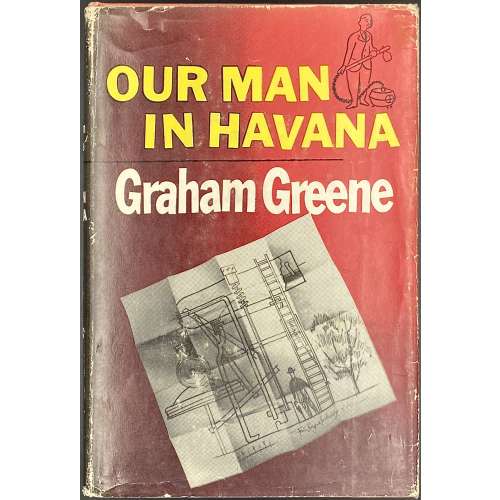 Title page: GRAHAM GREENE | {double rule} | Our Man | in Havana | AN ENTERTAINMENT | {citation: “And the sad man is cock of all his jests.” | — GEORGE HERBERT } | 1958 | THE VIKING PRESS • NEW YORK || Title verso: (top) COPYRIGHT © BY WILLIAM HEINEMANN LIMITED | PUBLISHED IN 1958 BY THE VIKING PRESS, INC. | 625 MADISON AVENUE, NEW YORK 22, N. Y. | (bottom) {publisher’s device} | LIBRARY OF CONGRESS CATALOGUE CARD NUMBER: 58.11735 | PRINTED IN THE U. S. A. BY | AMERICAN BOOK – STRATFORD PRESS || Pagination: [6] [1, 2] 3-273 [274]. Binding: 21 x 14 cm, publisher’s pink cloth, black lettering to spine: {double rule} | GRAHAM GREENE | Our | Man | in | Havana | VIKING | {double rule} ||; black vignette to front cover in the lower-right corner; original pictorial dust jacket designed by Bill English, unclipped, $3.50 in the upper-right corner of the front flap, advertisement “Also by Graham Greene” on the back flap. Edition: 1st American edition. Contributors: Henry Graham Greene (British, 1904 – 1991) – author. Bill English (British, b. 1931) – artist. The Viking Press, NY (1925 – 1975) – publisher. American Book-Stratford Press, Inc. – printer.
Title page: GRAHAM GREENE | {double rule} | Our Man | in Havana | AN ENTERTAINMENT | {citation: “And the sad man is cock of all his jests.” | — GEORGE HERBERT } | 1958 | THE VIKING PRESS • NEW YORK || Title verso: (top) COPYRIGHT © BY WILLIAM HEINEMANN LIMITED | PUBLISHED IN 1958 BY THE VIKING PRESS, INC. | 625 MADISON AVENUE, NEW YORK 22, N. Y. | (bottom) {publisher’s device} | LIBRARY OF CONGRESS CATALOGUE CARD NUMBER: 58.11735 | PRINTED IN THE U. S. A. BY | AMERICAN BOOK – STRATFORD PRESS || Pagination: [6] [1, 2] 3-273 [274]. Binding: 21 x 14 cm, publisher’s pink cloth, black lettering to spine: {double rule} | GRAHAM GREENE | Our | Man | in | Havana | VIKING | {double rule} ||; black vignette to front cover in the lower-right corner; original pictorial dust jacket designed by Bill English, unclipped, $3.50 in the upper-right corner of the front flap, advertisement “Also by Graham Greene” on the back flap. Edition: 1st American edition. Contributors: Henry Graham Greene (British, 1904 – 1991) – author. Bill English (British, b. 1931) – artist. The Viking Press, NY (1925 – 1975) – publisher. American Book-Stratford Press, Inc. – printer. -
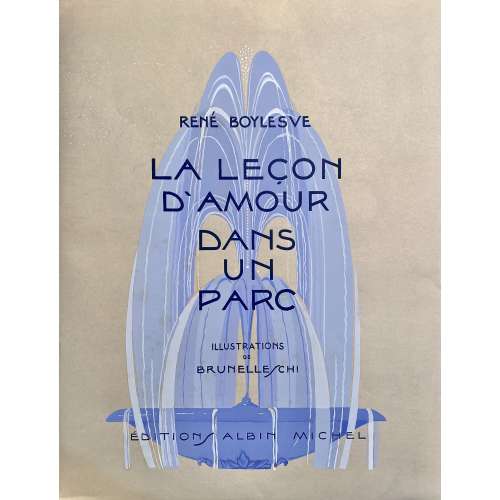 Title page (blue and black): RENE BOYLESVE | LA | LEÇON D'AMOUR | DANS UN PARC | ILLUSTRATIONS EN COULEURS | DE | BRUNELLESCHI | PARIS | ÉDITIONS ALBIN MICHEL | 22, RUE HUYGHENS (14e) || Pagination: [6] 1-173 [174] [4], total 184 pages, ils. Collation: publisher’s pictorial wrappers with 2 blank leaves – front and back, π2 (h.t. / justification, t.p. / blank), 87 leaves of text, [1] colophon / blank, total 92 leaves plus 21 plates, incl. frontispiece. Binding: 33.5 x 26 cm; original flapped wrappers, blue fountain and lettering to front, lettering to spine, back blank, in a marbled buckram folder (33.5 x 27 cm) with lettered paper label to spine; printed on Arches wove paper, margins untrimmed. Illustrations: 42 vignettes, tail- and headpieces in color, frontispiece and 20 plates after watercolours and gouaches by Umberto Brunelleschi printed in black and stencil-coloured (au pochoir) on the 18th of November 1933 at R. Coulouma press (Argenteuil), Jacomet press and Padovani press. Contributors: René Boylesve [Tardiveau] (French, 1867 – 1926) – author. Umberto Brunelleschi (Italian, 1879 – 1949) – artist. Daniel Jacomet (French, b. 1894 – ?) – printer. Imprimerie Coulouma (Argenteuil), Robert Coulouma (French, 1887-1976) – printer. Éditions Albin Michel (Paris) ; Albin Michel (French, 1873 – 1943) – publisher. First edition of René Boylesve's novel La Leçon d’amour dans un parc was conducted in Paris by Éditions de la Revue Blanche, in 1902. Description of the stensil (au pochoir) technique.
Title page (blue and black): RENE BOYLESVE | LA | LEÇON D'AMOUR | DANS UN PARC | ILLUSTRATIONS EN COULEURS | DE | BRUNELLESCHI | PARIS | ÉDITIONS ALBIN MICHEL | 22, RUE HUYGHENS (14e) || Pagination: [6] 1-173 [174] [4], total 184 pages, ils. Collation: publisher’s pictorial wrappers with 2 blank leaves – front and back, π2 (h.t. / justification, t.p. / blank), 87 leaves of text, [1] colophon / blank, total 92 leaves plus 21 plates, incl. frontispiece. Binding: 33.5 x 26 cm; original flapped wrappers, blue fountain and lettering to front, lettering to spine, back blank, in a marbled buckram folder (33.5 x 27 cm) with lettered paper label to spine; printed on Arches wove paper, margins untrimmed. Illustrations: 42 vignettes, tail- and headpieces in color, frontispiece and 20 plates after watercolours and gouaches by Umberto Brunelleschi printed in black and stencil-coloured (au pochoir) on the 18th of November 1933 at R. Coulouma press (Argenteuil), Jacomet press and Padovani press. Contributors: René Boylesve [Tardiveau] (French, 1867 – 1926) – author. Umberto Brunelleschi (Italian, 1879 – 1949) – artist. Daniel Jacomet (French, b. 1894 – ?) – printer. Imprimerie Coulouma (Argenteuil), Robert Coulouma (French, 1887-1976) – printer. Éditions Albin Michel (Paris) ; Albin Michel (French, 1873 – 1943) – publisher. First edition of René Boylesve's novel La Leçon d’amour dans un parc was conducted in Paris by Éditions de la Revue Blanche, in 1902. Description of the stensil (au pochoir) technique. -
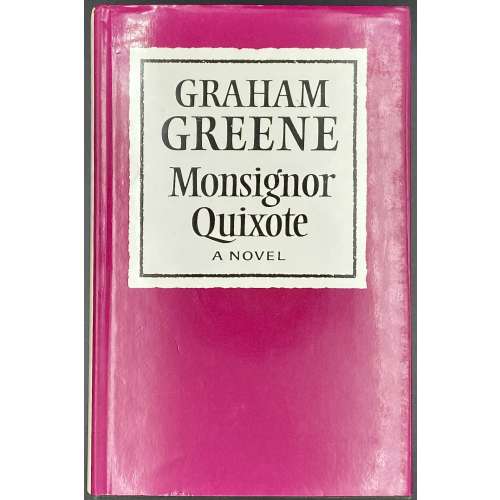 Title-page: Graham Greene | Monsignor Quixote | {citation from Shakespeare, 3 lines} | {publisher’s device} | THE BODLEY HEAD | LONDON SYDNEY || Green publisher’s cloth with silver lettering to spine, purple glossy dust jacket, lettered on front, back and spine, designed by Michael Harvey, unclipped (£9.95 NET | IN U.K. ONLY), [1-10] 11-220 [221 text /2 blank] + 1 blank leaf. © Graham Greene 1982. Printed by: William Clowes Ltd. (Beccles) Graham Greene (British, 1904 – 1991).
Title-page: Graham Greene | Monsignor Quixote | {citation from Shakespeare, 3 lines} | {publisher’s device} | THE BODLEY HEAD | LONDON SYDNEY || Green publisher’s cloth with silver lettering to spine, purple glossy dust jacket, lettered on front, back and spine, designed by Michael Harvey, unclipped (£9.95 NET | IN U.K. ONLY), [1-10] 11-220 [221 text /2 blank] + 1 blank leaf. © Graham Greene 1982. Printed by: William Clowes Ltd. (Beccles) Graham Greene (British, 1904 – 1991). -
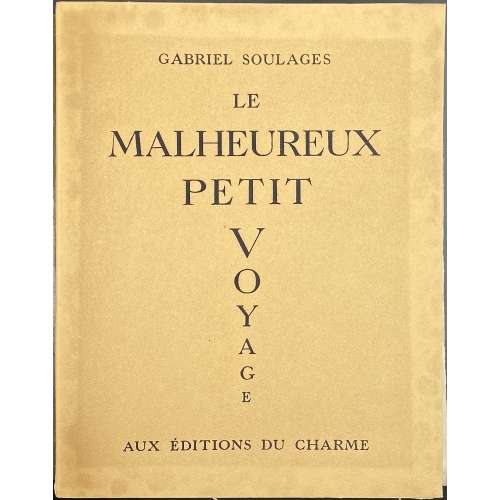 Description: Softcover 4to volume 25 x 19.7 cm in publisher’s French flapped tan wrappers, in glassine DJ, lettering to front. Printed on watermarked “Arches” laid paper, margins untrimmed, pages uncut. Illustrated with 24 in-text coloured etchings, and 59 vignettes, initials, and tailpieces engraved on wood by Gilbert Poilliot after Maurice Leroy. Front wrapper: GABRIEL SOULAGES | LE | MALHEUREUX | PETIT | VOYAGE {vertical} | AUX ÉDITIONS DU CHARME || Title-page (red and black): GABRIEL SOULAGES | LE MALHEUREUX | PETIT VOYAGE | Illustrations de MAURICE LEROY | {fleuron} | ÉDITIONS DU CHARME | PARIS – 1942 || Pagination: [1-8] (leaf in wrapper, t.p., dedication, d.t.p.) 9-187 [188] [4] (table, colophon, leaf in wrapper), total 192 pages , incl. in wrappers. Limitation: Limited to 750 copies, 25 copies (№ 1-25) on Vélin d’Arches with the original drawings and several suites of plates, 59 copies (№ 26-84) on Vélin d’Arches with the original drawings and several suites of plates, 100 copies (№ 85-184) on Vélin d’Arches with one suite of woodcuts and one of the etchings, 216 copies (№ 185-400) on Vélin d’Arches without enrichment, 350 copies (401-750) on Vélin des Papeteries Lana (Docelles); besides there are 10 copies numbered I-X for the artist and collaborators. This copy is № 266. Edition made under the direction of Sven Nielsen and Robert Meiffrédy; printed on April 29, 1942, at Dumoulin under the direction of H. Barthélemy. Etchings were printed at La Tradition under the direction of H. Durupt and the artist. Gabriel Soulages (French, 1876 – 1930?) – author. Maurice Leroy (French, 1885 – 1973) – artist. Gilbert Poilliot (French, fl. 1938 – 1952) – wood engraver. Sven Nielsen (Danish, 1901 – 1976) – publisher. Robert Meiffrédy (French, 20th century) – publisher.
Description: Softcover 4to volume 25 x 19.7 cm in publisher’s French flapped tan wrappers, in glassine DJ, lettering to front. Printed on watermarked “Arches” laid paper, margins untrimmed, pages uncut. Illustrated with 24 in-text coloured etchings, and 59 vignettes, initials, and tailpieces engraved on wood by Gilbert Poilliot after Maurice Leroy. Front wrapper: GABRIEL SOULAGES | LE | MALHEUREUX | PETIT | VOYAGE {vertical} | AUX ÉDITIONS DU CHARME || Title-page (red and black): GABRIEL SOULAGES | LE MALHEUREUX | PETIT VOYAGE | Illustrations de MAURICE LEROY | {fleuron} | ÉDITIONS DU CHARME | PARIS – 1942 || Pagination: [1-8] (leaf in wrapper, t.p., dedication, d.t.p.) 9-187 [188] [4] (table, colophon, leaf in wrapper), total 192 pages , incl. in wrappers. Limitation: Limited to 750 copies, 25 copies (№ 1-25) on Vélin d’Arches with the original drawings and several suites of plates, 59 copies (№ 26-84) on Vélin d’Arches with the original drawings and several suites of plates, 100 copies (№ 85-184) on Vélin d’Arches with one suite of woodcuts and one of the etchings, 216 copies (№ 185-400) on Vélin d’Arches without enrichment, 350 copies (401-750) on Vélin des Papeteries Lana (Docelles); besides there are 10 copies numbered I-X for the artist and collaborators. This copy is № 266. Edition made under the direction of Sven Nielsen and Robert Meiffrédy; printed on April 29, 1942, at Dumoulin under the direction of H. Barthélemy. Etchings were printed at La Tradition under the direction of H. Durupt and the artist. Gabriel Soulages (French, 1876 – 1930?) – author. Maurice Leroy (French, 1885 – 1973) – artist. Gilbert Poilliot (French, fl. 1938 – 1952) – wood engraver. Sven Nielsen (Danish, 1901 – 1976) – publisher. Robert Meiffrédy (French, 20th century) – publisher. -
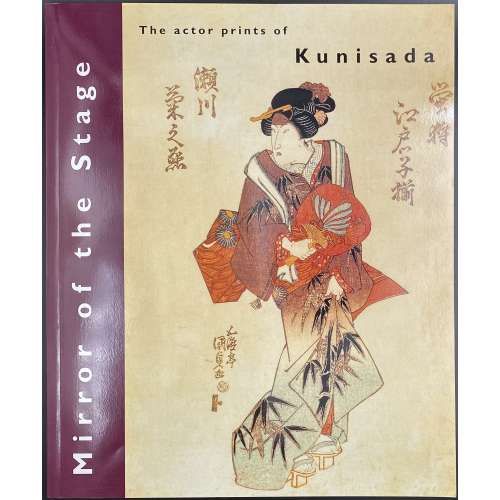 Thin booklet in glossy pictorial wrappers, 29.8 x 24.7 cm, pp.: [1-4] 5-48, 24 leaves total, illustrated. Errata tipped in after the front wrapper. Title-page: Mirror | of the stage | The actor prints of | Kunisada | Ellis Tinios | The University Gallery Leeds || Colophon: Published in March 1996 for the exhibition Mirror of the Stage held at the University Gallery Leeds 24 April-30 May 1996. Introduction: "This book [exhibition catalogue] has been written as an introduction to nineteenth-century Japanese colour woodblock actor prints and to the achievements of the artist Kunisada in that field [as well as to accompany the exhibition of the same name]. It is divided into three sections. In the first, I examine four topics: the social and cultural milieu that gave rise to the production of prints as items of mass consumption; the aesthetic of the actor print; the economics of print production (including consideration of the numbers issued, the prices at which they were sold and their rates of survival); and the process by which prints were produced. The second section consists of sixteen colour plates with commentaries. In the final section, I survey Kunisada's career." Subject: Utagawa, Kunisada, — 1786-1864 — Exhibitions; Ukiyo-e — Exhibitions; Colour prints, Japanese — Edo period, 1600-1868 — Exhibitions. Contributors: Ellis Tinios Utagawa Kunisada [歌川 国貞] a.k.a. Utagawa Toyokuni III [三代歌川豊国] (Japanese, 1786 – 1865). Select illustrations (references in this collection):
Thin booklet in glossy pictorial wrappers, 29.8 x 24.7 cm, pp.: [1-4] 5-48, 24 leaves total, illustrated. Errata tipped in after the front wrapper. Title-page: Mirror | of the stage | The actor prints of | Kunisada | Ellis Tinios | The University Gallery Leeds || Colophon: Published in March 1996 for the exhibition Mirror of the Stage held at the University Gallery Leeds 24 April-30 May 1996. Introduction: "This book [exhibition catalogue] has been written as an introduction to nineteenth-century Japanese colour woodblock actor prints and to the achievements of the artist Kunisada in that field [as well as to accompany the exhibition of the same name]. It is divided into three sections. In the first, I examine four topics: the social and cultural milieu that gave rise to the production of prints as items of mass consumption; the aesthetic of the actor print; the economics of print production (including consideration of the numbers issued, the prices at which they were sold and their rates of survival); and the process by which prints were produced. The second section consists of sixteen colour plates with commentaries. In the final section, I survey Kunisada's career." Subject: Utagawa, Kunisada, — 1786-1864 — Exhibitions; Ukiyo-e — Exhibitions; Colour prints, Japanese — Edo period, 1600-1868 — Exhibitions. Contributors: Ellis Tinios Utagawa Kunisada [歌川 国貞] a.k.a. Utagawa Toyokuni III [三代歌川豊国] (Japanese, 1786 – 1865). Select illustrations (references in this collection):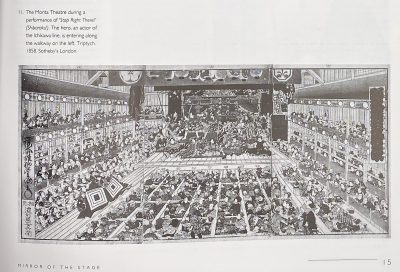
SVJP-0226.2016: Superb Edo pictures illustrating dances, 1858.
-
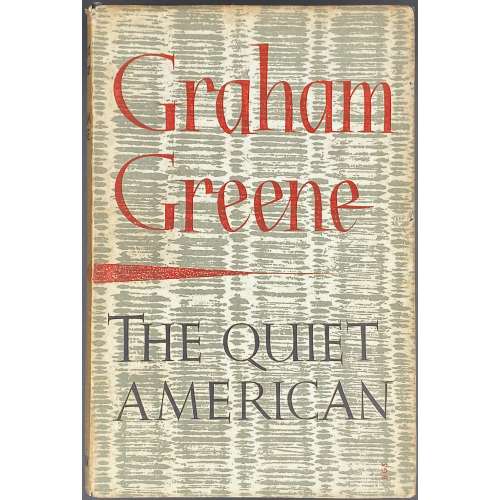 Description: 16mo, 20.2 x 13.5 cm, bound in blue buckram with gilt lettering to spine, in dust jacket lettered to front, spine, back, and flaps, price 13s6d net uncut; front has red letters “BGS” in the bottom right (probably stands for Book Grading Service); 1st edition. Title-page: THE | QUIET AMERICAN | by | GRAHAM GREENE | {publisher’s device} |—| WILLIAM HEINEMANN LTD | MELBOURNE :: LONDON :: TORONTO || T.p. verso: FIRST PUBLISHED 1955 | PRINTED IN GREAT BRITAIN | AT THE WINDMILL PRESS | KINGSWOOD, SURREY || Collation: [A]-H16; total 128 leaves. Pagination: [8] [2] 3-247 [248]; total 256 pages. Contributors: Graham Greene (British, 1904 – 1991) William Henry Heinemann (Jewish-British, 1863 – 1920)
Description: 16mo, 20.2 x 13.5 cm, bound in blue buckram with gilt lettering to spine, in dust jacket lettered to front, spine, back, and flaps, price 13s6d net uncut; front has red letters “BGS” in the bottom right (probably stands for Book Grading Service); 1st edition. Title-page: THE | QUIET AMERICAN | by | GRAHAM GREENE | {publisher’s device} |—| WILLIAM HEINEMANN LTD | MELBOURNE :: LONDON :: TORONTO || T.p. verso: FIRST PUBLISHED 1955 | PRINTED IN GREAT BRITAIN | AT THE WINDMILL PRESS | KINGSWOOD, SURREY || Collation: [A]-H16; total 128 leaves. Pagination: [8] [2] 3-247 [248]; total 256 pages. Contributors: Graham Greene (British, 1904 – 1991) William Henry Heinemann (Jewish-British, 1863 – 1920) -
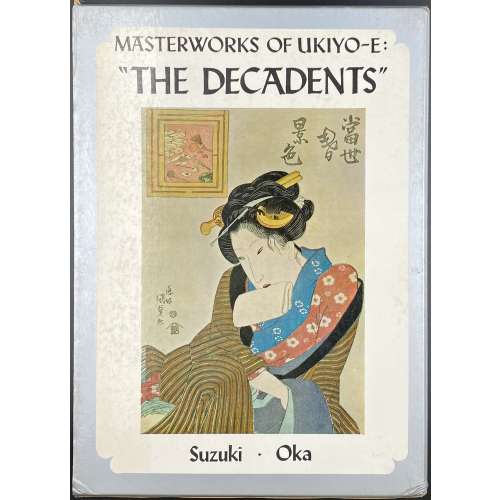 Description: Hardcover 26.5 x 19 cm, grey cloth, red lettering in kanji over black stripe to front, lettering to spine, tan endpapers, pictorial slipcase 27 x 19.5 cm; pp.: [1-6] 7-95 [96], pasted frontispiece and 79 colour illustrations with captions, within a collation. Series Masterworks of ukiyo-e, №8. ISBN: 9780870110986; 0870110985. Ref.: Worldcat Title-page (in frame): MASTERWORKS OF UKIYO-E | "THE DECADENTS” | by Jūzō Suzuki and Isaburō Oka | translation by John Bester | {publisher’s device} | KODANSHA INTERNATIONAL LTD. | Tokyo, Japan & Palo-Alto, Calif., U.S.A. || (Vertical text in kanji to the right, between rules). Artists: Utagawa Kunisada (Japanese [歌川 国貞], 1786 – 1865); Utagawa Kuniyoshi (Japanese [歌川 国芳], 1798 – 1861); Keisai Eisen [Japanese [渓斎 英泉], 1790 – 1848). Contributors: Jūzō Suzuki [鈴木重三] (Japanese, 1919 – 2010) – author. Isaburō Oka [岡畏三郎] (Japanese, 1914 –2010) – author. John Bester (British, 1927 – 2010) – translator Kunisada's fan print in this collection (exactly the same copy) [SVJP-0380.2022]:
Description: Hardcover 26.5 x 19 cm, grey cloth, red lettering in kanji over black stripe to front, lettering to spine, tan endpapers, pictorial slipcase 27 x 19.5 cm; pp.: [1-6] 7-95 [96], pasted frontispiece and 79 colour illustrations with captions, within a collation. Series Masterworks of ukiyo-e, №8. ISBN: 9780870110986; 0870110985. Ref.: Worldcat Title-page (in frame): MASTERWORKS OF UKIYO-E | "THE DECADENTS” | by Jūzō Suzuki and Isaburō Oka | translation by John Bester | {publisher’s device} | KODANSHA INTERNATIONAL LTD. | Tokyo, Japan & Palo-Alto, Calif., U.S.A. || (Vertical text in kanji to the right, between rules). Artists: Utagawa Kunisada (Japanese [歌川 国貞], 1786 – 1865); Utagawa Kuniyoshi (Japanese [歌川 国芳], 1798 – 1861); Keisai Eisen [Japanese [渓斎 英泉], 1790 – 1848). Contributors: Jūzō Suzuki [鈴木重三] (Japanese, 1919 – 2010) – author. Isaburō Oka [岡畏三郎] (Japanese, 1914 –2010) – author. John Bester (British, 1927 – 2010) – translator Kunisada's fan print in this collection (exactly the same copy) [SVJP-0380.2022]:

-
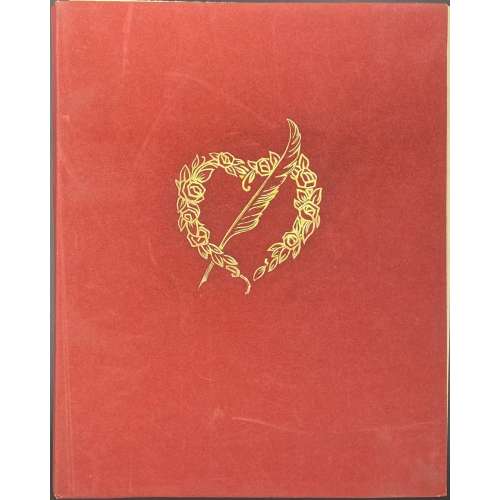 Softcover volume, 24.7 x 19.7 cm, red felt with gilt embossing to front, pages framed in red, watermarked Arches wove paper, lower and outer margins untrimmed; matted original drawing (watercolour, India ink, graphite on Arches wove paper), signed André Collot and dated 36 laid in. Title-page (red and black): ANDREA DE NERCIAT | LE DOCTORAT | IMPROMPTU | ILLUSTRÉ | D’EAUX-FORTES ORIGINALES | PAR | ANDRÉ COLLOT | {publisher’s device} | LA TRADITION | PARIS || Pagination: [2] blank, [1, 2] h.t./limitation, [3, 4] frontis., [5, 6] t.p./blank, 7-125 [126] blank, [2] colophon/blank, [2] blank; 7 full-page (incl. frontispiece) and 9 half-page plates, 2 tailpieces and 2 initials (etching and au pochoir colouring after André Collot); total 132 pages (66 leaves, incl. plates within collation). Limitation: A print run of 500 copies; this is № 268. Colophon: Paul Durupt supervision, text at Coulouma / H. Barthélemy, plates at La Tradition (Paris); date of printing: 30-APR-1935 Contributors: André-Robert Andréa de Nerciat (French, 1739 – 1800) – author. André Collot (French, 1897 – 1976) – artist.
Softcover volume, 24.7 x 19.7 cm, red felt with gilt embossing to front, pages framed in red, watermarked Arches wove paper, lower and outer margins untrimmed; matted original drawing (watercolour, India ink, graphite on Arches wove paper), signed André Collot and dated 36 laid in. Title-page (red and black): ANDREA DE NERCIAT | LE DOCTORAT | IMPROMPTU | ILLUSTRÉ | D’EAUX-FORTES ORIGINALES | PAR | ANDRÉ COLLOT | {publisher’s device} | LA TRADITION | PARIS || Pagination: [2] blank, [1, 2] h.t./limitation, [3, 4] frontis., [5, 6] t.p./blank, 7-125 [126] blank, [2] colophon/blank, [2] blank; 7 full-page (incl. frontispiece) and 9 half-page plates, 2 tailpieces and 2 initials (etching and au pochoir colouring after André Collot); total 132 pages (66 leaves, incl. plates within collation). Limitation: A print run of 500 copies; this is № 268. Colophon: Paul Durupt supervision, text at Coulouma / H. Barthélemy, plates at La Tradition (Paris); date of printing: 30-APR-1935 Contributors: André-Robert Andréa de Nerciat (French, 1739 – 1800) – author. André Collot (French, 1897 – 1976) – artist. -
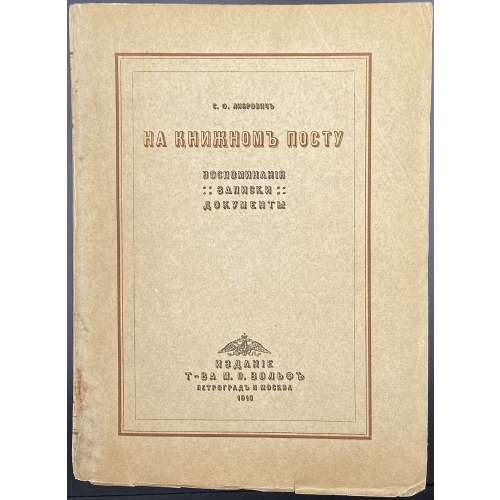 Softcover volume, 24.0 x 17.7 cm, publisher’s tan wrappers, lettered to front and spine in brown and black, publisher’s device and imprint to back, upper margin trimmed, all printed on laid paper, pp: [i-viii] [1-3] 4-496 [4], last page blank (total 508 pages); collated 8vo: π4 1-318 χ2 (total 254 leaves). Book-label with publisher’s device to fep (χ1 recto). Title-page and front wrapper (in brown and black): С. Ф. ЛИБРОВИЧЪ | НА КНИЖНОМЪ ПОСТУ | ВОСПОМИНАНIЯ | : : ЗАПИСКИ : : | ДОКУМЕНТЫ | {two-headed eagle} | ИЗДАНIЕ | Т-ВА М. О. ВОЛЬФЪ | ПЕТРОГРАДЪ И МОСКВА | (1916 on front wrapper) || Provenance: Publisher Contributors: Сигизмунд Феликсович Либрович [Zygmunt Librowicz] (Polish-Russian, 1855 – 1918) – author. Товарищество М. О. Вольф (Петроград-Москва) – publisher. Типография товарищества М. О. Вольф (Петроград) – printer. Маврикий Осипович Вольф [Maurycy Bolesław Wolff] (Polish-Russian, 1825 – 1883) – dedicatee.
Softcover volume, 24.0 x 17.7 cm, publisher’s tan wrappers, lettered to front and spine in brown and black, publisher’s device and imprint to back, upper margin trimmed, all printed on laid paper, pp: [i-viii] [1-3] 4-496 [4], last page blank (total 508 pages); collated 8vo: π4 1-318 χ2 (total 254 leaves). Book-label with publisher’s device to fep (χ1 recto). Title-page and front wrapper (in brown and black): С. Ф. ЛИБРОВИЧЪ | НА КНИЖНОМЪ ПОСТУ | ВОСПОМИНАНIЯ | : : ЗАПИСКИ : : | ДОКУМЕНТЫ | {two-headed eagle} | ИЗДАНIЕ | Т-ВА М. О. ВОЛЬФЪ | ПЕТРОГРАДЪ И МОСКВА | (1916 on front wrapper) || Provenance: Publisher Contributors: Сигизмунд Феликсович Либрович [Zygmunt Librowicz] (Polish-Russian, 1855 – 1918) – author. Товарищество М. О. Вольф (Петроград-Москва) – publisher. Типография товарищества М. О. Вольф (Петроград) – printer. Маврикий Осипович Вольф [Maurycy Bolesław Wolff] (Polish-Russian, 1825 – 1883) – dedicatee. -
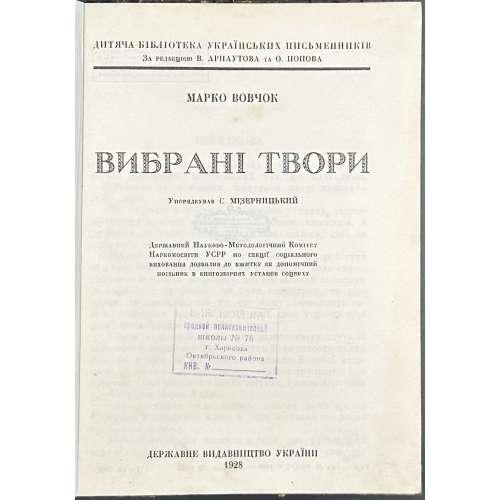 Owner’s quarter cloth over faux marbled paper binding, 19.8 x 15.1 cm, pp.: [1-4] 5-227 [3], total 230 pages plus frontispiece (b/w photographic portrait w/facsimile); library blue ink stamp to t.p. “Библиотека средней политехнической школы № 76 г. Харькова Октябрьского района Инв. № ___». Title-page: ДИТЯЧА БIБЛIОТЕКА УКРАЇНСЬКИХ ПИСЬМЕННИКIВ | За редакцiєю В. АРНАУТОВА та О. ПОПОВА | — | ВИБРАНI ТВОРИ | Упорядкував С. МIЗЕРНИЦЬКИЙ | Державний Науково-Методологiчний Комитет | Наркомосвiти УСРР по секциï сицiяльного | виховання дозволив до вжитку як допомiчний | посiбник в книгозбiрнях установ соцвиху | ДЕРЖАВНЕ ВИДАВНИЦТВО УКРАЇНИ | 1928 || Contents: Передмова, Викуп, Паньска воля (Горпина), Козачка, Ледащиця, Чумак, Не до пари, Тюлева баба, Кармелюк, Гайдамаки. Print run: 5,000 copies. Contributors: Марко Вовчок [Marko Vovchok; Марія Олександрівна Вілінська] (Ukrainian, 1833 – 1907) – author. Other variants: Markowovzok and Marko Vovtchok.
Owner’s quarter cloth over faux marbled paper binding, 19.8 x 15.1 cm, pp.: [1-4] 5-227 [3], total 230 pages plus frontispiece (b/w photographic portrait w/facsimile); library blue ink stamp to t.p. “Библиотека средней политехнической школы № 76 г. Харькова Октябрьского района Инв. № ___». Title-page: ДИТЯЧА БIБЛIОТЕКА УКРАЇНСЬКИХ ПИСЬМЕННИКIВ | За редакцiєю В. АРНАУТОВА та О. ПОПОВА | — | ВИБРАНI ТВОРИ | Упорядкував С. МIЗЕРНИЦЬКИЙ | Державний Науково-Методологiчний Комитет | Наркомосвiти УСРР по секциï сицiяльного | виховання дозволив до вжитку як допомiчний | посiбник в книгозбiрнях установ соцвиху | ДЕРЖАВНЕ ВИДАВНИЦТВО УКРАЇНИ | 1928 || Contents: Передмова, Викуп, Паньска воля (Горпина), Козачка, Ледащиця, Чумак, Не до пари, Тюлева баба, Кармелюк, Гайдамаки. Print run: 5,000 copies. Contributors: Марко Вовчок [Marko Vovchok; Марія Олександрівна Вілінська] (Ukrainian, 1833 – 1907) – author. Other variants: Markowovzok and Marko Vovtchok. -
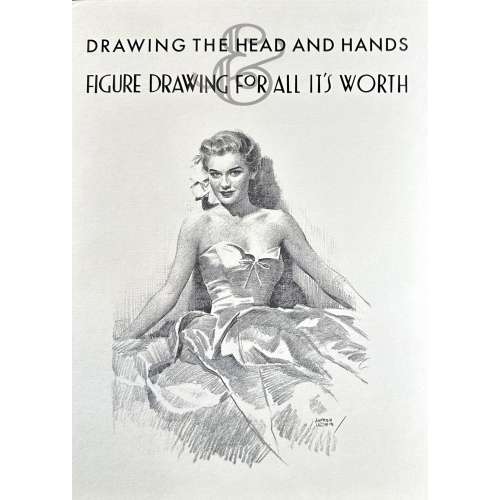 Cardboard box 32 x 23.7 cm with lettering and vignette to front, lettering to spine, and Loomis facsimile and Titan publisher's barcode label to back.
Cardboard box 32 x 23.7 cm with lettering and vignette to front, lettering to spine, and Loomis facsimile and Titan publisher's barcode label to back.- Title-page: Drawing | THE HEAD AND HANDS | BY | ANDREW LOOMIS | {vignette} ||
- Title-page: FIGURE DRAWING | FOR ALL IT'S WORTH | ANDREW LOOMIS ||
-
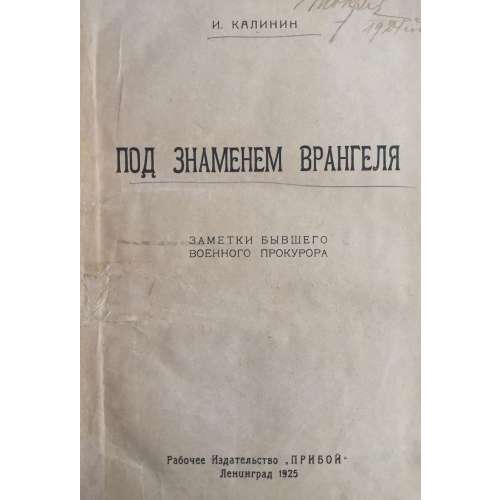
И. М. Калинин. Под знаменем Врангеля. Заметки бывшего военного прокурора. - Л.: Рабочее из-во "Прибой", 1925. - 273 с.
Тираж 7125 экз.
Об авторе: «К моменту февральской революции я занимал должность помощника военного прокурора Кавказского военно-окружного суда... Я не был политиком, но не переносил Союза русского народа. Падение монархии приветствовал. В 1917 году в г. Эрзеруме, занимая довольно приличный пост, работал в самом тесном содружестве с Советом солдатских и рабочих депутатов. Меньшевики, эсэры, большевики постоянно навещали меня, зная, что я хотя и внепартийный, но искренно предан делу революции». В 1918-м Калинину удалось перебраться в занятый Добровольческой армией Екатеринодар, откуда в конце сентября 1918 г. он выехал на Дон. «Здесь тоже мобилизовали всех офицеров. Мне ничего другого не оставалось, как поступить на службу в только что сорганизованный Донской военно-окружной суд». Будучи профессиональным военным юристом Калинин в дальнейшем состоял прокурором при временном Донском военном суде.
По возвращении из эмиграции полковник Калинин, как и многие другие репатрианты, пытался избавиться от клейма «бывшего белогвардейца». 5 октября 1937 г. И. М. Калинин, в то время преподаватель рабочего факультета Ленинградского автодорожного института, был арестован по решению Комиссии НКВД и Прокуратуры СССР . 2 ноября 1937 г. он был приговорен по ст. 58-6-8-11 УК РСФСР к высшей мере наказания и расстрелян в Ленинграде 10 ноября 1937 года.
-
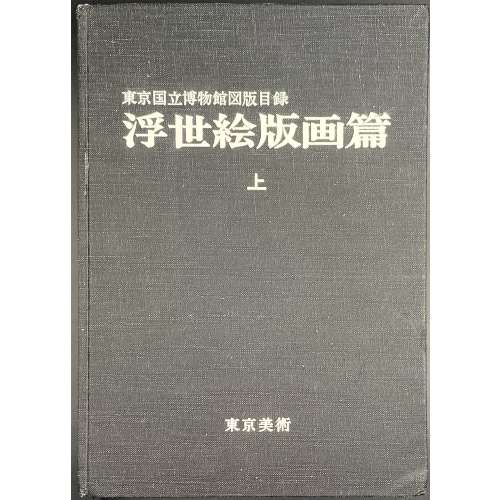 Title: Illustrated Catalogues of Tokyo National Museum: Ukiyo-e Prints [東京国立博物館図版目録 | 浮世絵版画編] (Tōkyō Kokuritsu Hakubutsukan zuhan mokuroku | Ukiyoe hanga hen); Publisher: Tokyo National Museum [東京国立博物館] (Tōkyō Kokuritsu Hakubutsukan). Three volumes, 26.3 x 18.7 cm, uniformly bound in black cloth with white characters to front cover and spine. Title-page: ILLUSTRATED CATALOGUES OF | TOKYO NATIONAL MUSEUM | UKIYO-E PRINTS | <1 (2, 3) > | 東京国立博物館図版目録 | 浮世絵版画編 | < 上 (中, 下) > || Volume 1 [上]: unpaginated 1 t.p., 2 colour plates, 1 contents, 70 (1-1354) – b/w plates, 1 + 48 paginated leaves (1-95 [96]) – text. Volume 2 [中]: unpaginated 1 t.p., 2 colour plates, 1 contents, 67 (1355-2493) – b/w plates + 33 paginated leaves (1-65 [66]) – text. Volume 3 [下]: unpaginated 1 t.p., 2 colour plates, 1 contents, 83 (2494-3926) – b/w plates + 35 paginated leaves (1-69 [70]) – text. Black and white photomechanical reproduction of almost four thousand woodblock prints with titles by the artist and in chronological order.
Title: Illustrated Catalogues of Tokyo National Museum: Ukiyo-e Prints [東京国立博物館図版目録 | 浮世絵版画編] (Tōkyō Kokuritsu Hakubutsukan zuhan mokuroku | Ukiyoe hanga hen); Publisher: Tokyo National Museum [東京国立博物館] (Tōkyō Kokuritsu Hakubutsukan). Three volumes, 26.3 x 18.7 cm, uniformly bound in black cloth with white characters to front cover and spine. Title-page: ILLUSTRATED CATALOGUES OF | TOKYO NATIONAL MUSEUM | UKIYO-E PRINTS | <1 (2, 3) > | 東京国立博物館図版目録 | 浮世絵版画編 | < 上 (中, 下) > || Volume 1 [上]: unpaginated 1 t.p., 2 colour plates, 1 contents, 70 (1-1354) – b/w plates, 1 + 48 paginated leaves (1-95 [96]) – text. Volume 2 [中]: unpaginated 1 t.p., 2 colour plates, 1 contents, 67 (1355-2493) – b/w plates + 33 paginated leaves (1-65 [66]) – text. Volume 3 [下]: unpaginated 1 t.p., 2 colour plates, 1 contents, 83 (2494-3926) – b/w plates + 35 paginated leaves (1-69 [70]) – text. Black and white photomechanical reproduction of almost four thousand woodblock prints with titles by the artist and in chronological order. -
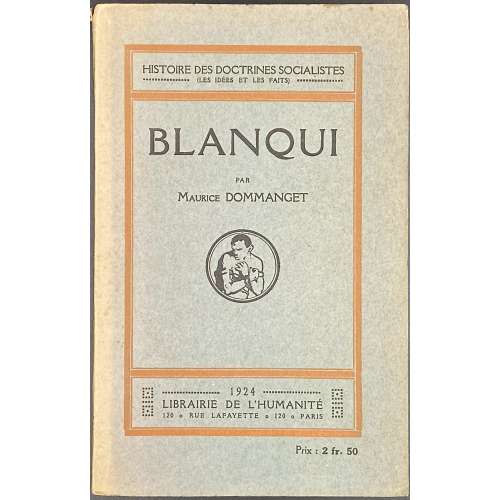 Front wrapper: In the three-compartment orange frame: 1st compartment: HISTOIRE DES DOCTRINES SOCIALISTES | *** (LES IDÉES ET LES FAITS) *** | 2nd compartment: BLANQUI | PAR | Maurice DOMMANGET | {circular device} | 3rd compartment: *** 1924 *** | LIBRAIRIE DE L'HUMANITÉ | 120 • RUE LAFAYETTE • 120 PARIS | Under the frame : Prix : 2 fr. 50 || Title page: HISTOIRE DES DOCTRINES SOCIALISTES | *** (LES IDÉES ET LES FAITS) *** | BLANQUI | PAR Maurice DOMMANGET | {device in a circle} | *** 1924 *** | LIBRAIRIE DE L'HUMANITÉ | 120 • RUE LAFAYETTE • 120 PARIS || Back wrapper: Advert. in an orange frame. Pagination: wrappers included in pagination ; [1-5] 6-95 [96-98] (total 49 leaves incl. wrappers). Collation: wrappers not included in collation: [1]-68. Binding: 18.5 x 12 cm; publisher’s blue wrappers with an orange frame, black lettering to covers and spine; uncut. Russian translation: LIB-2747.2021
Front wrapper: In the three-compartment orange frame: 1st compartment: HISTOIRE DES DOCTRINES SOCIALISTES | *** (LES IDÉES ET LES FAITS) *** | 2nd compartment: BLANQUI | PAR | Maurice DOMMANGET | {circular device} | 3rd compartment: *** 1924 *** | LIBRAIRIE DE L'HUMANITÉ | 120 • RUE LAFAYETTE • 120 PARIS | Under the frame : Prix : 2 fr. 50 || Title page: HISTOIRE DES DOCTRINES SOCIALISTES | *** (LES IDÉES ET LES FAITS) *** | BLANQUI | PAR Maurice DOMMANGET | {device in a circle} | *** 1924 *** | LIBRAIRIE DE L'HUMANITÉ | 120 • RUE LAFAYETTE • 120 PARIS || Back wrapper: Advert. in an orange frame. Pagination: wrappers included in pagination ; [1-5] 6-95 [96-98] (total 49 leaves incl. wrappers). Collation: wrappers not included in collation: [1]-68. Binding: 18.5 x 12 cm; publisher’s blue wrappers with an orange frame, black lettering to covers and spine; uncut. Russian translation: LIB-2747.2021 -
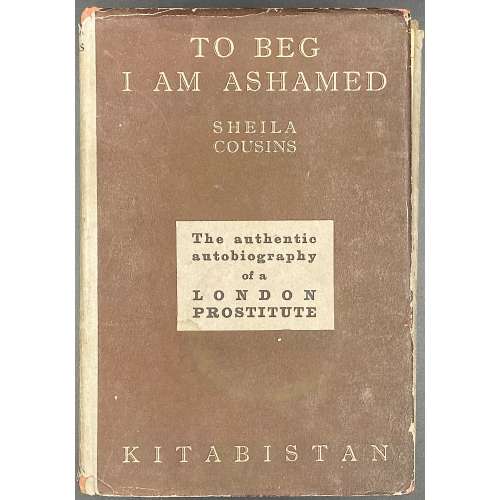 Title page: TO BEG | I AM ASHAMED | By | SHEILA COUSINS | KITABISTAN | ALLAHABAD || Pagination:[1-4] 5-285 [286] [2], total 288 pages. Collation: 8vo; [1]8 2-188; total 144 leaves. Binding: Publisher’s red cloth, black lettering to front cover and spine, price-clipped brown and grey dust jacket, lettered front: TO BEG | I AM ASHAMED | SHEILA | COUSINS |The authentic | autobiography | of a | LONDON | PROSTITUTE | KITABISTAN ||; annotation by Diana Frederics to the back. Size: 19 x 13 cm. Edition: 1st Indian edition. Contributors: Graham Greene (British, 1904 – 1991) – author. Ronald Matthews (British, 1903 – 1967) – author. Frances V. Rummell [pseudonym Diana Fredericks] (American, 1907 – 1969) – annotation author. Kitabistan (Allahabad, India) – publisher. J. K. Sharma at the Allahabad Law Journal Press – printer.
Title page: TO BEG | I AM ASHAMED | By | SHEILA COUSINS | KITABISTAN | ALLAHABAD || Pagination:[1-4] 5-285 [286] [2], total 288 pages. Collation: 8vo; [1]8 2-188; total 144 leaves. Binding: Publisher’s red cloth, black lettering to front cover and spine, price-clipped brown and grey dust jacket, lettered front: TO BEG | I AM ASHAMED | SHEILA | COUSINS |The authentic | autobiography | of a | LONDON | PROSTITUTE | KITABISTAN ||; annotation by Diana Frederics to the back. Size: 19 x 13 cm. Edition: 1st Indian edition. Contributors: Graham Greene (British, 1904 – 1991) – author. Ronald Matthews (British, 1903 – 1967) – author. Frances V. Rummell [pseudonym Diana Fredericks] (American, 1907 – 1969) – annotation author. Kitabistan (Allahabad, India) – publisher. J. K. Sharma at the Allahabad Law Journal Press – printer. -
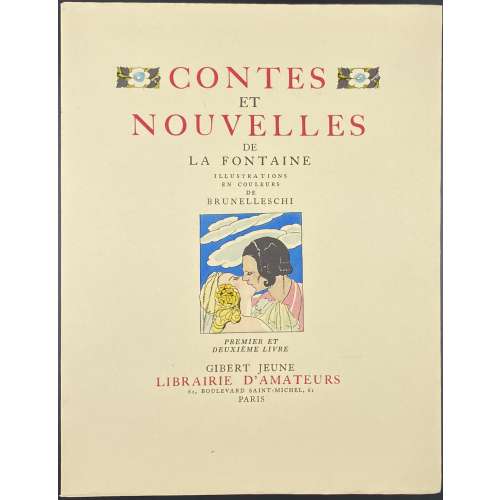 Vol. 1: Front wrapper and title page (in red and black): CONTES | ET | NOUVELLES | DE | LA FONTAINE | ILLUSTRATIONS | EN COULEURS | DE | BRUNELLESCHI | {vignette} | PREMIER ET DEUXIÈME LIVRE | GIBERT JEUNE | LIBRAIRIE D'AMATEURS | 61, BOULEVARD SAINT-MICHEL, 61 | PARIS || Pagination: [2] – blanks, [2] – h.t. / limit., [2] – t.p. / blank, [6] – advert., [2] – d.t.p., 1-164 [165-6], [4] – table, [2] – imprint / blank, [2] – blanks; total 188 pages (94 leaves) with 35 in-text black illustrations, plus 16 colour plates extraneous to collation, incl. frontispiece. Vol. 2: Front wrapper and title page similar to Vol. 1 but TROISIÈME, QUATRIÈME ET CINQUIÈME LIVRE under the vignette. Pagination: [2] – blanks, [2] – h.t. / limit., [2] – t.p. / blank, [2] – d.t.p., 1-233 [234], [4] – table, [2] – colophon / blank, [2] – blanks; total 250 pages (125 leaves) with 42 in-text black illustrations, plus 16 colour plates extraneous to collation, incl. frontispiece. Edition: Limited edition of 3,000 copies, this copy is № 1 (stamped in black in vol. 1). Printed on the 10th of June, 1938 by J. Dumoulin (H. Barthélemy – director, Louis Malexis – mise en page); stencil-colouring (au pochoir) by E. Charpentier under direction of the artist. Binding: Two volumes 26.3 x 20.3 cm, uniformly bound in publisher’s pictorial flapped wrappers with vignettes and lettering to front wrapper and spine and publisher’s device to back wrapper. Description of the stensil (au pochoir) technique.
Vol. 1: Front wrapper and title page (in red and black): CONTES | ET | NOUVELLES | DE | LA FONTAINE | ILLUSTRATIONS | EN COULEURS | DE | BRUNELLESCHI | {vignette} | PREMIER ET DEUXIÈME LIVRE | GIBERT JEUNE | LIBRAIRIE D'AMATEURS | 61, BOULEVARD SAINT-MICHEL, 61 | PARIS || Pagination: [2] – blanks, [2] – h.t. / limit., [2] – t.p. / blank, [6] – advert., [2] – d.t.p., 1-164 [165-6], [4] – table, [2] – imprint / blank, [2] – blanks; total 188 pages (94 leaves) with 35 in-text black illustrations, plus 16 colour plates extraneous to collation, incl. frontispiece. Vol. 2: Front wrapper and title page similar to Vol. 1 but TROISIÈME, QUATRIÈME ET CINQUIÈME LIVRE under the vignette. Pagination: [2] – blanks, [2] – h.t. / limit., [2] – t.p. / blank, [2] – d.t.p., 1-233 [234], [4] – table, [2] – colophon / blank, [2] – blanks; total 250 pages (125 leaves) with 42 in-text black illustrations, plus 16 colour plates extraneous to collation, incl. frontispiece. Edition: Limited edition of 3,000 copies, this copy is № 1 (stamped in black in vol. 1). Printed on the 10th of June, 1938 by J. Dumoulin (H. Barthélemy – director, Louis Malexis – mise en page); stencil-colouring (au pochoir) by E. Charpentier under direction of the artist. Binding: Two volumes 26.3 x 20.3 cm, uniformly bound in publisher’s pictorial flapped wrappers with vignettes and lettering to front wrapper and spine and publisher’s device to back wrapper. Description of the stensil (au pochoir) technique. -
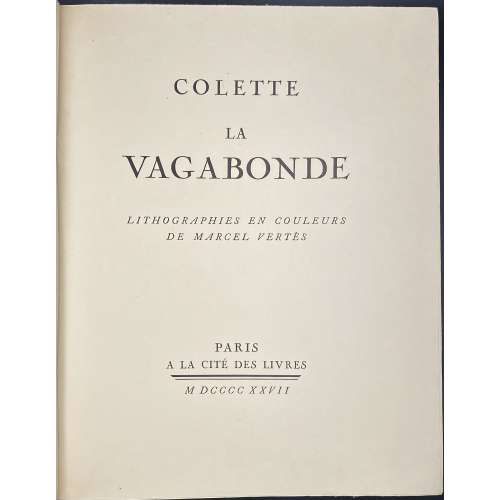 Title-page: COLETTE | LA | VAGABONDE | LITHOGRAPHIES EN COULEURS | DE MARCEL VERTÈS | PARIS | A LA CITE DES LIVRES |—| M DCCCC XXVII || Binding: French flapped wrappers 28.5 x 22.5 cm, in glassine dustcover, front wrapper lettered similarly to title-page but in red and black: COLETTE | LA | VAGABONDE | LITHOGRAPHIES EN COULEURS | DE MARCEL VERTÈS | PARIS | A LA CITE DES LIVRES |—| M DCCCC XXVII ||, in a red marbled cardboard folder 29 x 23 cm with paper label to spine, slipcase missing. Pagination: [2] 1st leaf blank, [2] h.t. / limitation, [2] t.p. / blank, [2] d.t.p. /blank, [3] 4-277 [278 blank], [4 colophon], ils. Collation: π3 1-354 χ1, plus 15 leaves of plates extraneous to collation, incl. frontispiece, chromolithographs by Marcel Vertès. Edition: Limited edition of 305 copies of which this is № 15 (out of numbers 10-24) printed on Japon Impérial paper with three additional suites of plates in black, sanguine and colour, plus 4 refused plates. Printed on the 15th of September 1927: text by Robert Coulouma (Argenteuil, director H. Barthélemy), lithographs by E. Duchatel (Paris) and published by La cité des livres. Missing black versions of LIB-2892.2021-5 and LIB-2892.2021-10 (43 out of 45 prints in place). Refused plates:
Title-page: COLETTE | LA | VAGABONDE | LITHOGRAPHIES EN COULEURS | DE MARCEL VERTÈS | PARIS | A LA CITE DES LIVRES |—| M DCCCC XXVII || Binding: French flapped wrappers 28.5 x 22.5 cm, in glassine dustcover, front wrapper lettered similarly to title-page but in red and black: COLETTE | LA | VAGABONDE | LITHOGRAPHIES EN COULEURS | DE MARCEL VERTÈS | PARIS | A LA CITE DES LIVRES |—| M DCCCC XXVII ||, in a red marbled cardboard folder 29 x 23 cm with paper label to spine, slipcase missing. Pagination: [2] 1st leaf blank, [2] h.t. / limitation, [2] t.p. / blank, [2] d.t.p. /blank, [3] 4-277 [278 blank], [4 colophon], ils. Collation: π3 1-354 χ1, plus 15 leaves of plates extraneous to collation, incl. frontispiece, chromolithographs by Marcel Vertès. Edition: Limited edition of 305 copies of which this is № 15 (out of numbers 10-24) printed on Japon Impérial paper with three additional suites of plates in black, sanguine and colour, plus 4 refused plates. Printed on the 15th of September 1927: text by Robert Coulouma (Argenteuil, director H. Barthélemy), lithographs by E. Duchatel (Paris) and published by La cité des livres. Missing black versions of LIB-2892.2021-5 and LIB-2892.2021-10 (43 out of 45 prints in place). Refused plates:
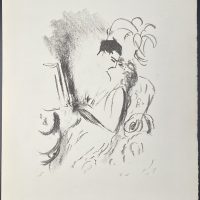

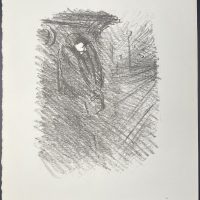 Plates in black, sanguine, and colour.
Plates in black, sanguine, and colour.


 Contributors:
Sidonie-Gabrielle Colette [a.k.a. Colette] (French, 1873 – 1954) – author.
Marcel Vertès [Marcell Vértes] (Jewish-Hungarian-French, 1895 – 1961) – artist.
Other names: Marcel Vertès, Marcel Vertes, Marcell Vértes
Contributors:
Sidonie-Gabrielle Colette [a.k.a. Colette] (French, 1873 – 1954) – author.
Marcel Vertès [Marcell Vértes] (Jewish-Hungarian-French, 1895 – 1961) – artist.
Other names: Marcel Vertès, Marcel Vertes, Marcell Vértes -
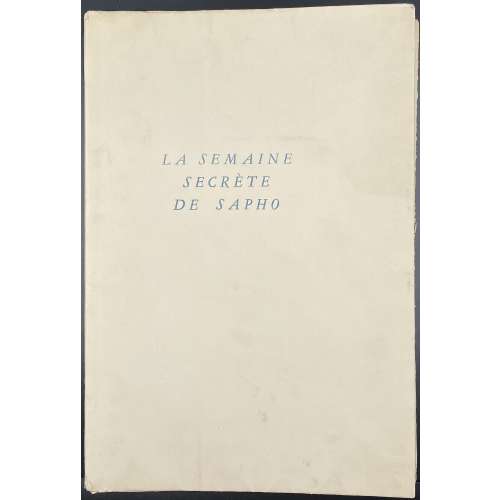 Description: One volume in cream French flapped wrappers, 28.5 x 19.5 cm, lettered to front in blue, printed on wove paper, [1-8] 9-157 [158] [6 blanks] + 8 plates tipped-in; total 82 leaves, first two and last three blank (total 8 blanks), the first and last leaves in the wrappers. Clandestine pirate edition with 8 collotype reproductions of coloured etchings after André Collot. Some plates with a water stain in the upper left corner, one plate has a long closed tear along the left margin. Compare to the original etchings, these plates look dull. Front wrapper (blue): LA SEMAINE | SECRÈTE | DE SAPHO || Title-page (black): LA SEMAINE | SECRÈTE | DE SAPHO | Illustrée de huit gravures | coloriées à la main | LA CHRONIQUE DES DAMES | CONTEMPORAINES || Limitation: The run of 300 copies printed on vélin de luxe “illustrée de huit gravures avec remarques colorées à la main”. This copy is № 128. Note: According to J.-P. Dutel (1920-1970) № 2385, p. 360, it is a pirate edition, printed in c. 1930. Jean-Pierre does not indicate that the plates are collotype reproductions, however, it is obvious when assessed under a microscope with a magnification of 60. The original edition published in 1929 has a different title-page and is illustrated with hand-coloured etchings, see Dutel (1920-1970) № 2384, p. 360. Contributors: Pascal Pia [Pierre Durand] (French, 1903 – 1979) – author. André Collot (French, 1897 – 1976) – artist.
Description: One volume in cream French flapped wrappers, 28.5 x 19.5 cm, lettered to front in blue, printed on wove paper, [1-8] 9-157 [158] [6 blanks] + 8 plates tipped-in; total 82 leaves, first two and last three blank (total 8 blanks), the first and last leaves in the wrappers. Clandestine pirate edition with 8 collotype reproductions of coloured etchings after André Collot. Some plates with a water stain in the upper left corner, one plate has a long closed tear along the left margin. Compare to the original etchings, these plates look dull. Front wrapper (blue): LA SEMAINE | SECRÈTE | DE SAPHO || Title-page (black): LA SEMAINE | SECRÈTE | DE SAPHO | Illustrée de huit gravures | coloriées à la main | LA CHRONIQUE DES DAMES | CONTEMPORAINES || Limitation: The run of 300 copies printed on vélin de luxe “illustrée de huit gravures avec remarques colorées à la main”. This copy is № 128. Note: According to J.-P. Dutel (1920-1970) № 2385, p. 360, it is a pirate edition, printed in c. 1930. Jean-Pierre does not indicate that the plates are collotype reproductions, however, it is obvious when assessed under a microscope with a magnification of 60. The original edition published in 1929 has a different title-page and is illustrated with hand-coloured etchings, see Dutel (1920-1970) № 2384, p. 360. Contributors: Pascal Pia [Pierre Durand] (French, 1903 – 1979) – author. André Collot (French, 1897 – 1976) – artist. -
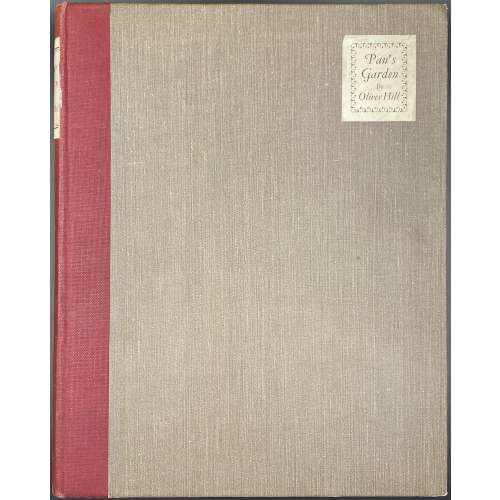 Description: Hardcover photographic pictorial album, 29.2 x 23.1 cm, quarter crimson percaline over grey cloth with lettered paper labels to front cover and spine, grey endpapers; pp. [1-4] 5-109 [3], total 56 leaves, additional spine and cover labels tipped-in. Oliver Hill (British, 1887 – 1968).
Description: Hardcover photographic pictorial album, 29.2 x 23.1 cm, quarter crimson percaline over grey cloth with lettered paper labels to front cover and spine, grey endpapers; pp. [1-4] 5-109 [3], total 56 leaves, additional spine and cover labels tipped-in. Oliver Hill (British, 1887 – 1968). -
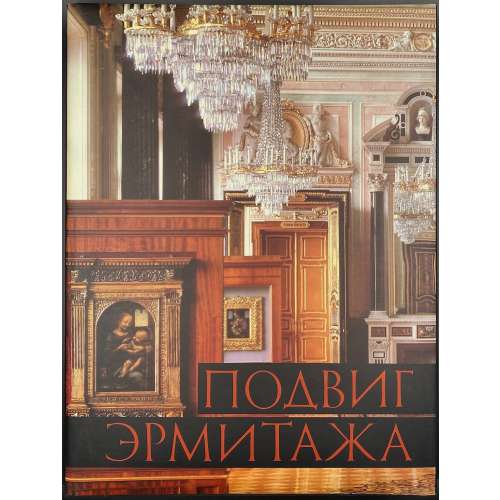 Title-page (in red on pictorial background): ПОДВИГ | ЭРМИТАЖА | ИЗДАТЕЛЬСТВО «АВРОРА» • ЛЕНИНГРАД || Illustrated album in hardcover, 33 x 25 cm, bound in black cloth with gilt and red to front cover and spine, brown endpapers, pictorial dust jacket; pp.: [1-6] 7-273 [274] [30], total 304 pages with 388 b/w and colour illustrations. Text: Sergei Petrovich Varshavsky [Сергей Петрович Варшавский] (Jewish-Russian, 1906 – 1980); B. Rest [Б. Рест; Юлий Исаакович Шапиро] (Jewish-Russian, fl. 1940 – 1980). Preface: Boris Piotrovsky [Борис Борисович Пиотровский] (Russian, 1908 – 1990). Layout by Liubov Rakhmilevich [Л. Рахмилевич]. Photography by Viktor Savik [В. Савик] and Leonid Bogdanov [Л. Богданов]. Design by Valery Ivanov [В. Иванов]. Russian twin edition to [LIB-3043.2022] S. Varshavsky, B. Rest. Saved for humanity: the Hermitage during the siege of Leningrad, 1941-1944. — Leningrad: Aurora Art Publishers, 1985 and [LIB-3042.2022] The ordeal of the Hermitage: The siege of Leningrad, 1941-1944 — Leningrad: Aurora Art Publishers, New York: Harry N. Abrams, Inc., 1985. The text extracted from [LIB-3035.2022] С. Варшавский, Б. Рест. Подвиг Эрмитажа: Государственный Эрмитаж в годы Великой отечественной войны. — М.-Л.: Советский художник, 1965.
Title-page (in red on pictorial background): ПОДВИГ | ЭРМИТАЖА | ИЗДАТЕЛЬСТВО «АВРОРА» • ЛЕНИНГРАД || Illustrated album in hardcover, 33 x 25 cm, bound in black cloth with gilt and red to front cover and spine, brown endpapers, pictorial dust jacket; pp.: [1-6] 7-273 [274] [30], total 304 pages with 388 b/w and colour illustrations. Text: Sergei Petrovich Varshavsky [Сергей Петрович Варшавский] (Jewish-Russian, 1906 – 1980); B. Rest [Б. Рест; Юлий Исаакович Шапиро] (Jewish-Russian, fl. 1940 – 1980). Preface: Boris Piotrovsky [Борис Борисович Пиотровский] (Russian, 1908 – 1990). Layout by Liubov Rakhmilevich [Л. Рахмилевич]. Photography by Viktor Savik [В. Савик] and Leonid Bogdanov [Л. Богданов]. Design by Valery Ivanov [В. Иванов]. Russian twin edition to [LIB-3043.2022] S. Varshavsky, B. Rest. Saved for humanity: the Hermitage during the siege of Leningrad, 1941-1944. — Leningrad: Aurora Art Publishers, 1985 and [LIB-3042.2022] The ordeal of the Hermitage: The siege of Leningrad, 1941-1944 — Leningrad: Aurora Art Publishers, New York: Harry N. Abrams, Inc., 1985. The text extracted from [LIB-3035.2022] С. Варшавский, Б. Рест. Подвиг Эрмитажа: Государственный Эрмитаж в годы Великой отечественной войны. — М.-Л.: Советский художник, 1965. -
 Photographic portrait of writer Vladimir Bukovsky with head tilted, closed eyes, and smoking a cigarette. Pencil-signed on the mat: 3/45 • Mikhail Lemkhin; on the back of the print: ink stamp ©MIKHAIL LEMKHIN, ink inscription ©mikhail Lemkhin; ink stamp: PHOTO BY: | MIKHAIL LEMKHIN | 2327 – 38th AVENUE | SAN FRANCISCO, CA 94116 | (415) 664-7677, pencil inscription 3/45 Mikhail Lemkhin; pencil inscription on the back of the mat: (top) ВЛАДИМИР БУКОВСКИЙ | VLADIMIR BUKOVSKY, (bottom) VI. Size: mat: 43.2 x 35.7 cm; window: 21.5 x 18.5 cm; print: 25.3 x 20.3 cm. Limited edition of 45, of which this is № 3, signed and stamped by the artist. Sitter: Vladimir Bukovsky [Владимир Константинович Буковский] (Russian, 1942 – 2019). Popularity: Bukovsky left the Soviet Union, where he was kept in prison for his political views, in exchange for Luis Alberto Corvalán, a Chilean communist. The event was commemorated in the following folk verse:
Photographic portrait of writer Vladimir Bukovsky with head tilted, closed eyes, and smoking a cigarette. Pencil-signed on the mat: 3/45 • Mikhail Lemkhin; on the back of the print: ink stamp ©MIKHAIL LEMKHIN, ink inscription ©mikhail Lemkhin; ink stamp: PHOTO BY: | MIKHAIL LEMKHIN | 2327 – 38th AVENUE | SAN FRANCISCO, CA 94116 | (415) 664-7677, pencil inscription 3/45 Mikhail Lemkhin; pencil inscription on the back of the mat: (top) ВЛАДИМИР БУКОВСКИЙ | VLADIMIR BUKOVSKY, (bottom) VI. Size: mat: 43.2 x 35.7 cm; window: 21.5 x 18.5 cm; print: 25.3 x 20.3 cm. Limited edition of 45, of which this is № 3, signed and stamped by the artist. Sitter: Vladimir Bukovsky [Владимир Константинович Буковский] (Russian, 1942 – 2019). Popularity: Bukovsky left the Soviet Union, where he was kept in prison for his political views, in exchange for Luis Alberto Corvalán, a Chilean communist. The event was commemorated in the following folk verse:Обменяли хулигана На Луиса Корвалана. Где б найти такую блядь, Чтоб на Брежнева сменять!
This can be translated as a Haiku:A troublemaker was exchanged for Luis Corvalán... Where to find a whore to exchange for Brezhnev?
-
 Hardcover volume, 24 x 18 cm, cloth-backed pictorial paper over cardboard (possibly, owner's), pictorial endpapers, no dust jacket; pp.: [2] – pictorial t.p. / copyrignt+imprint + [26] unpaginated pages (13 leaves); in-text photomechanical b/w and coloured illustrations after Feodor Rojankovsky. Front cover (pictorial): JUST SO STORIES SERIES | RUDYARD KIPLING | HOW | THE LEOPARD | GOT HIS | SPOTS | PICTURED BY F. ROJANKOVSKY || Title-page (pictorial): JUST SO STORIES SERIES | HOW | THE LEOPARD | GOT | HIS SPOTS | BY RUDYARD KIPLING | ILLUSTRATED BY | F. ROJANKOVSKY | GARDEN CITY PUBLISHING COMPANY, INC., GARDEN CITY, N. Y. || Contributors: Rudyard Kipling (British, 1865 – 1936) Feodor Rojankovsky [Rojan; Фёдор Степанович Рожанковский] (Russian-American, 1891 – 1970)
Hardcover volume, 24 x 18 cm, cloth-backed pictorial paper over cardboard (possibly, owner's), pictorial endpapers, no dust jacket; pp.: [2] – pictorial t.p. / copyrignt+imprint + [26] unpaginated pages (13 leaves); in-text photomechanical b/w and coloured illustrations after Feodor Rojankovsky. Front cover (pictorial): JUST SO STORIES SERIES | RUDYARD KIPLING | HOW | THE LEOPARD | GOT HIS | SPOTS | PICTURED BY F. ROJANKOVSKY || Title-page (pictorial): JUST SO STORIES SERIES | HOW | THE LEOPARD | GOT | HIS SPOTS | BY RUDYARD KIPLING | ILLUSTRATED BY | F. ROJANKOVSKY | GARDEN CITY PUBLISHING COMPANY, INC., GARDEN CITY, N. Y. || Contributors: Rudyard Kipling (British, 1865 – 1936) Feodor Rojankovsky [Rojan; Фёдор Степанович Рожанковский] (Russian-American, 1891 – 1970) -
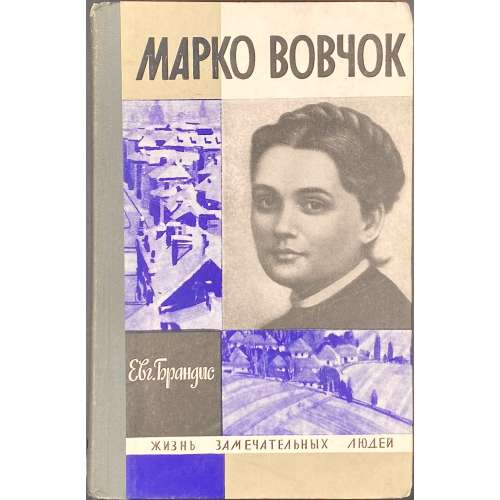 Hardcover volume, 20.8 x 13.5 cm, pictorial paper backed with grey cloth, black and white lettering to spine (serial design), pp.: [1-4] 5-333 [3]; collated 8vo: 1-218; total 168 leaves plus 13 photomechanical plates. Title-page (blue and black): Евг. Брандис | МАРКО ВОВЧОК | ИЗДАТЕЛЬСТВО | ЦК ВЛКСМ | «МОЛОДАЯ ГВАРДИЯ» | — || Frontispiece (blue and black): ЖИЗНЬ | ЗАМЕЧАТЕЛЬНЫХ | ЛЮДЕЙ | Серия биографий | ОСНОВАНА | В 1933 ГОДУ | М. ГОРЬКИМ | ВЫПУСК 19 / 460 {torch} МОСКВА / 1968 || Print-run: 100,000 copies. Contributors: Евгений Павлович Бра́ндис (Russian, 1916 – 1985) – author. Марко Вовчок [Марія Олександрівна Вілінська, Marko Vovtchok] (Ukrainian, 1833 – 1907) – character. Борис Борисович Лобач-Жученко (Russian, 1899 – 1995) – dedicatee.
Hardcover volume, 20.8 x 13.5 cm, pictorial paper backed with grey cloth, black and white lettering to spine (serial design), pp.: [1-4] 5-333 [3]; collated 8vo: 1-218; total 168 leaves plus 13 photomechanical plates. Title-page (blue and black): Евг. Брандис | МАРКО ВОВЧОК | ИЗДАТЕЛЬСТВО | ЦК ВЛКСМ | «МОЛОДАЯ ГВАРДИЯ» | — || Frontispiece (blue and black): ЖИЗНЬ | ЗАМЕЧАТЕЛЬНЫХ | ЛЮДЕЙ | Серия биографий | ОСНОВАНА | В 1933 ГОДУ | М. ГОРЬКИМ | ВЫПУСК 19 / 460 {torch} МОСКВА / 1968 || Print-run: 100,000 copies. Contributors: Евгений Павлович Бра́ндис (Russian, 1916 – 1985) – author. Марко Вовчок [Марія Олександрівна Вілінська, Marko Vovtchok] (Ukrainian, 1833 – 1907) – character. Борис Борисович Лобач-Жученко (Russian, 1899 – 1995) – dedicatee. -
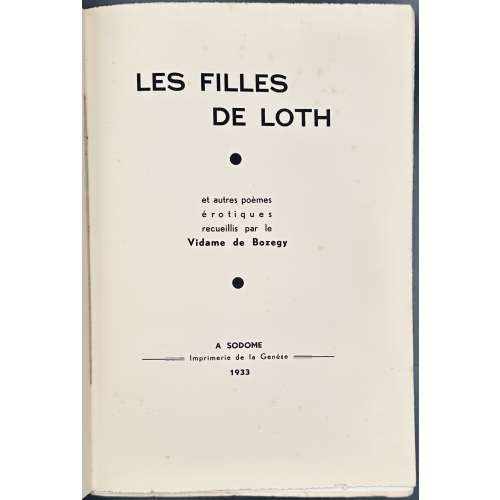 Softcover, french flapped wrappers, 29 x 19 cm, in glassine dustjacket, text printed on laid paper, pp.: [1-10] 11-256 [8], total 264 pages plus 11 plates out of 12, hand-coloured etchings on wove paper laid in, extraneous to collation. Wrappers detached from the block. Some pages uncut. Below is the missing plate, according to honesterotica.com:
Softcover, french flapped wrappers, 29 x 19 cm, in glassine dustjacket, text printed on laid paper, pp.: [1-10] 11-256 [8], total 264 pages plus 11 plates out of 12, hand-coloured etchings on wove paper laid in, extraneous to collation. Wrappers detached from the block. Some pages uncut. Below is the missing plate, according to honesterotica.com: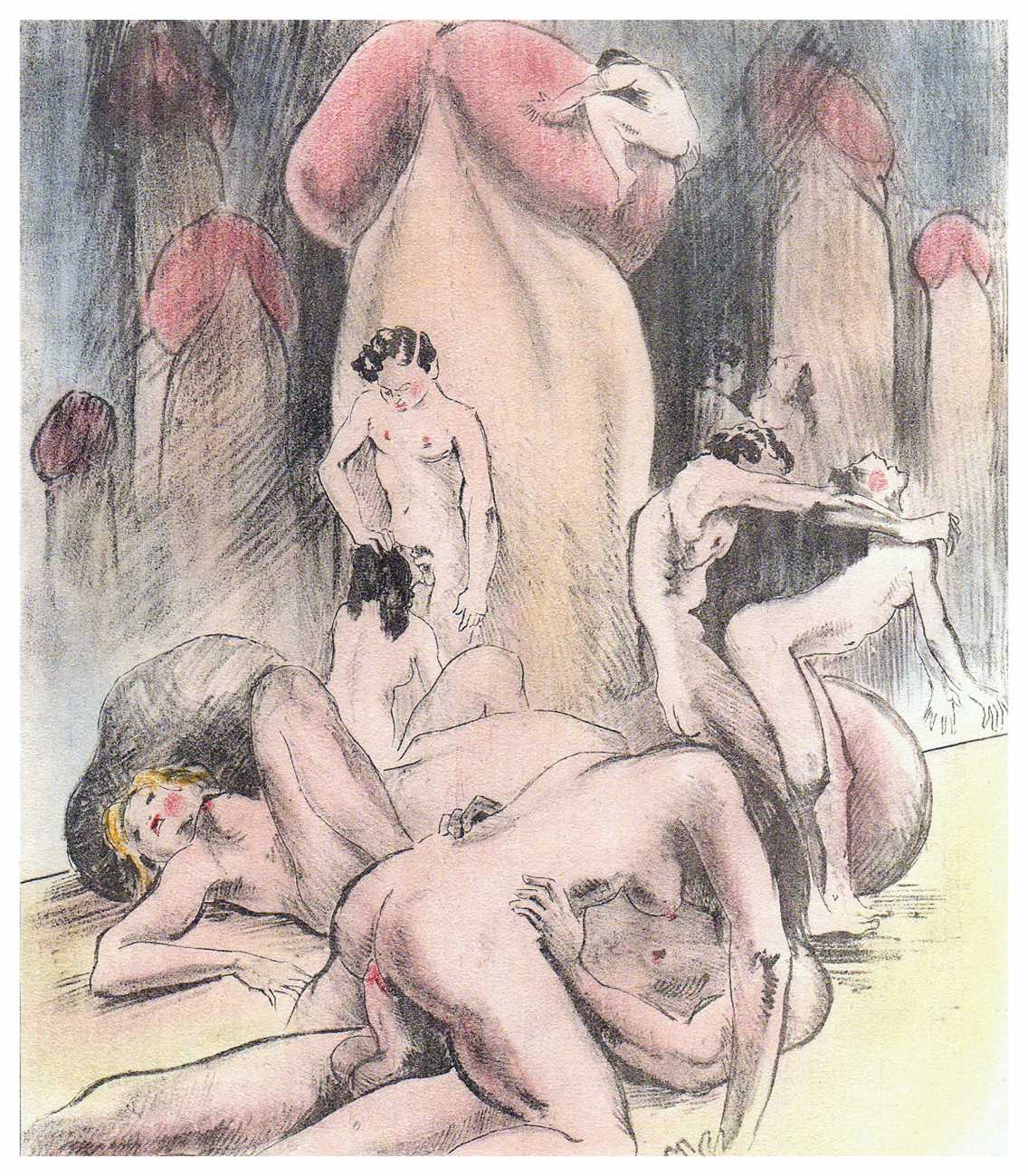 Title-page: LES FILLES | DE LOTH | • | et autres poèmes | érotiques | recueillis par le | Vidame de Bozegy | • | A SODOME | — Imprimerie de la Genèse — | 1933 ||
Edition limited to 500 copies, this is copy № 54.
Catalogue raisonné: Dutel III № 1575.
Edmond Dardenne Bernard [Vidame de Bozegy] (French, 20th c.) – author.
André Collot (French, 1897 – 1976) – artist.
Title-page: LES FILLES | DE LOTH | • | et autres poèmes | érotiques | recueillis par le | Vidame de Bozegy | • | A SODOME | — Imprimerie de la Genèse — | 1933 ||
Edition limited to 500 copies, this is copy № 54.
Catalogue raisonné: Dutel III № 1575.
Edmond Dardenne Bernard [Vidame de Bozegy] (French, 20th c.) – author.
André Collot (French, 1897 – 1976) – artist. -
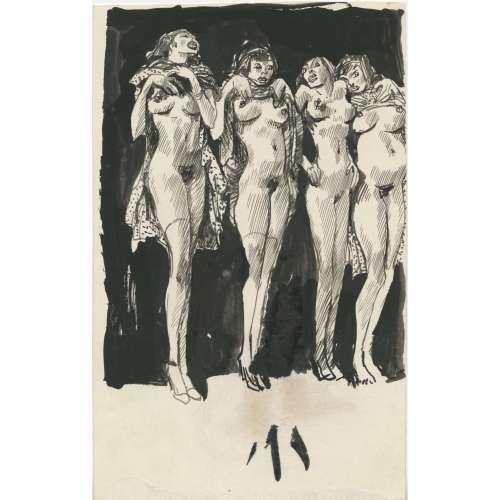 Drawing on both sides; Pen and wash, india ink, gouache, on cardboard, 225 x 140 mm, black ink stamp to verso: “Nachlaß O R SCHATS”, remnants of hinges. Attributed to Otto Rudolf Schatz (Austrian, 1900 – 1961).
Drawing on both sides; Pen and wash, india ink, gouache, on cardboard, 225 x 140 mm, black ink stamp to verso: “Nachlaß O R SCHATS”, remnants of hinges. Attributed to Otto Rudolf Schatz (Austrian, 1900 – 1961). -

Библиотека А.С.Пушкина. Библиографическое описание.
Пушкин и его современники. Материалы и изследования. Вып. IX- X. Повременное изданiе Коммиссiи для изданiя сочиненiй Пушкина при Отдѣленiи Русскаго языка и словесности Императорской Академiи Наукъ.
СПб.: Тип.Императорской Академiи Наук, 1910. - 461 стр.
-
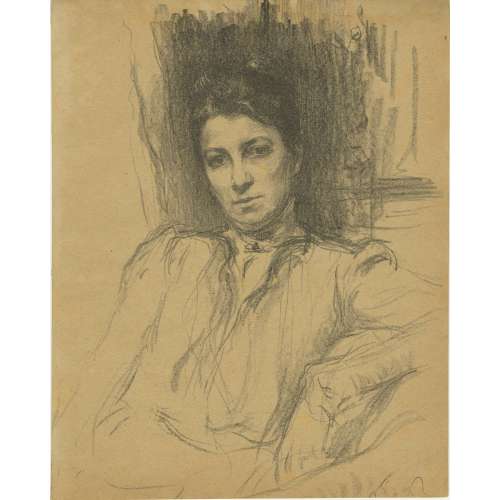
Portrait of Russian actress Maria Gavrilovna Savina, a lithograph on tan paper, by artist Osip Braz, 1900.
Maria Gavrilovna Savina (Мария Гавриловна Савина), a renowned Russian stage actress, born as Maria Podramentsova (Подраменцова) on April 11, 1854 in Kamianets-Podilskyi (Ukraine, Russian Empire) and died on September 21, 1915, in Saint Petersburg. Osip Emmanuilovich Braz (Осип Эммануилович Браз; 16 January 1873 in Odessa - 6 November 1936 near Paris) was a Russian painter of Jewish descent. Imprisoned by the Soviets in 1924 (the Solovki special prison-camp), released in 1926 and emigrated to Germany in 1928. Married to Lola Landshoff. http://russia-ic.com/people/culture_art/b/805/ "All his family members suffered from severe tuberculosis. After losing his wife Lola Lantsgof and both sons, he spent the last year of his life alone. Osip Braz passed away on November 6, 1936, and was laid down to rest at the Bagneux Cemetery in Paris." Buried at Bagneux, Hauts-de-Seine, Île-de-France, France. -
![Insel-Almanach auf das Jahr 1907. Kalender für 1907. (with illustration by Franz von Bayros on p. 50). — 150 + [2] pp.](https://varshavskycollection.com/wp-content/uploads/2021/02/LIB-2250.2019-a-500x500.jpeg) Half-title: ÜBERREICHT VON | GILHOFER UND RANSCHBURG | SORTIMENT–, BÜCHER– UND KUNST– | ANTIQUARIAT | WIEN 1, BOGNERGASSE 2 || Title: Red letterpress lettering in black ornamental frame: Insel- | Almanach | auf das Jahr | 1907 || Pagination: [6] – h.t., frontis., title; [1-16] 17-150 [2], + 2 folding plates (op. p. 30 and 32), and 2 plates op. p. 50 (Franz von Bayros "Francine" for Die Bohème by Henri Murger) and 112 (colour). Binding: 17.3 x 9.9 cm; original olive paper wrappers with gilt lettering and elements to cover, lettering to spine. Catalogue raisonné: Heinz Sarkowski (1999): № 1986, pp. 329-30, with contents. Contributors: Gilhofer und Ranschburg – antiquarian bookstore in Vienna. Schröder, Rudolf Alexander (German, 1878 – 1962) – title and cover. Wieynk, Heinrich (German, 1874 – 1931) – typeset. Kippenberg, Anton Hermann Friedrich (German, 1874 – 1950) – editor. Brandstetter, Oscar (German, 1844 – ?) – printer.
Half-title: ÜBERREICHT VON | GILHOFER UND RANSCHBURG | SORTIMENT–, BÜCHER– UND KUNST– | ANTIQUARIAT | WIEN 1, BOGNERGASSE 2 || Title: Red letterpress lettering in black ornamental frame: Insel- | Almanach | auf das Jahr | 1907 || Pagination: [6] – h.t., frontis., title; [1-16] 17-150 [2], + 2 folding plates (op. p. 30 and 32), and 2 plates op. p. 50 (Franz von Bayros "Francine" for Die Bohème by Henri Murger) and 112 (colour). Binding: 17.3 x 9.9 cm; original olive paper wrappers with gilt lettering and elements to cover, lettering to spine. Catalogue raisonné: Heinz Sarkowski (1999): № 1986, pp. 329-30, with contents. Contributors: Gilhofer und Ranschburg – antiquarian bookstore in Vienna. Schröder, Rudolf Alexander (German, 1878 – 1962) – title and cover. Wieynk, Heinrich (German, 1874 – 1931) – typeset. Kippenberg, Anton Hermann Friedrich (German, 1874 – 1950) – editor. Brandstetter, Oscar (German, 1844 – ?) – printer. -
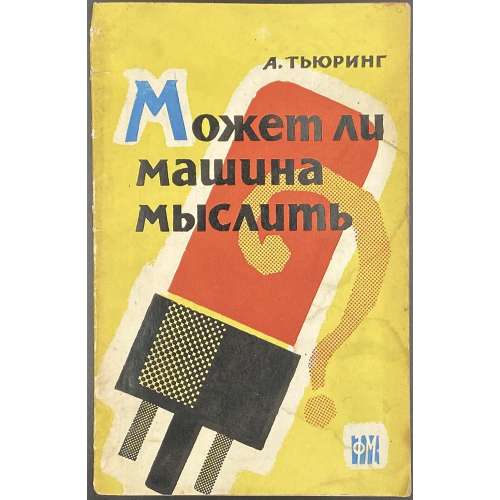 А. Тьюринг. Может ли машина мыслить? / С прил. ст. Дж. фон Неймана "Общая и логическая теория автоматов"; пер. с англ. Ю. А. Данилова; ред. и пред. С. А. Яновской. — М.: Физматгиз, 1960. Title page: А. ТЬЮРИНГ | МОЖЕТ ЛИ | МАШИНА МЫСЛИТЬ? | С приложением статьи ДЖ. фон НЕЙМАНА | ОБЩАЯ И ЛОГИЧЕСКАЯ ТЕОРИЯ АВТОМАТОВ | Перевод с английского | Ю. А. Данилова | Редакция и предисловие | проф. С. А. Яновской | {Publisher’s device «ФМ» | ГОСУДАРСТВЕННОЕ ИЗДАТЕЛЬСТВО | ФИЗИКО-МАТЕМАТИЧЕСКОЙ ЛИТЕРАТУРЫ | МОСКВА 1960 || Pagination: [2] 3-110 [2]. Collation: [1]8, 2-416; 11 (t.p./contents, imprint.) unsigned. Size: 20 x 13 cm Binding: Softcover, front pictorial wrapper – yellow background and radio lamp, lettering: А. Тьюринг. Может ли | машина | мыслить | ? | {publisher's device white on blue "ФМ"} || Contributors: Turing, Alan Mathison (British, 1912 – 1954) – author of the text. John von Neumann (American-Hungarian, 1903 – 1957) – author of the text. Данилов, Юлий Александрович (Russian, 1936 – 2003) – translator. Яновская [Неймарк], Софья Александровна (Russian-Jewish, 1896 – 1966) – author of preface, editor.
А. Тьюринг. Может ли машина мыслить? / С прил. ст. Дж. фон Неймана "Общая и логическая теория автоматов"; пер. с англ. Ю. А. Данилова; ред. и пред. С. А. Яновской. — М.: Физматгиз, 1960. Title page: А. ТЬЮРИНГ | МОЖЕТ ЛИ | МАШИНА МЫСЛИТЬ? | С приложением статьи ДЖ. фон НЕЙМАНА | ОБЩАЯ И ЛОГИЧЕСКАЯ ТЕОРИЯ АВТОМАТОВ | Перевод с английского | Ю. А. Данилова | Редакция и предисловие | проф. С. А. Яновской | {Publisher’s device «ФМ» | ГОСУДАРСТВЕННОЕ ИЗДАТЕЛЬСТВО | ФИЗИКО-МАТЕМАТИЧЕСКОЙ ЛИТЕРАТУРЫ | МОСКВА 1960 || Pagination: [2] 3-110 [2]. Collation: [1]8, 2-416; 11 (t.p./contents, imprint.) unsigned. Size: 20 x 13 cm Binding: Softcover, front pictorial wrapper – yellow background and radio lamp, lettering: А. Тьюринг. Может ли | машина | мыслить | ? | {publisher's device white on blue "ФМ"} || Contributors: Turing, Alan Mathison (British, 1912 – 1954) – author of the text. John von Neumann (American-Hungarian, 1903 – 1957) – author of the text. Данилов, Юлий Александрович (Russian, 1936 – 2003) – translator. Яновская [Неймарк], Софья Александровна (Russian-Jewish, 1896 – 1966) – author of preface, editor. -
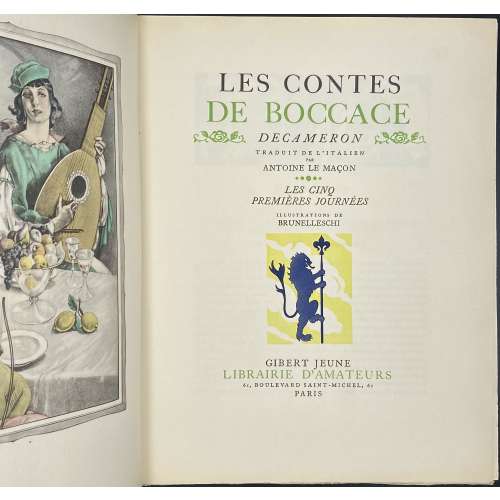 Vol. 1: Front cover and title page: LES CONTES | DE BOCCACE | ☙ DECAMERON ❧ | TRADUIT DE L'ITALIEN | PAR | ANTOINE LE MAÇON | LES CINQ | PREMIÈRES JOURNÉES | ILLUSTRATIONS DE | BRUNELLESCHI | {vignette} | GIBERT JEUNE | LIBRAIRIE D'AMATEURS | 61, BOULEVARD SAINT-MICHEL, 61 | PARIS || Pagination: [6] 1-342 [343-4] [10], 16 colour plates and 70 b/w head- and tailpieces after Umberto Brunelleschi. Vol. 2: Front cover and title page: LES CONTES | DE BOCCACE | ☙ DECAMERON ❧ | TRADUIT DE L'ITALIEN | PAR | ANTOINE LE MAÇON | LES CINQ | DERNIÈRES JOURNÉES | ILLUSTRATIONS DE | BRUNELLESCHI | {vignette} | GIBERT JEUNE | LIBRAIRIE D'AMATEURS | 61, BOULEVARD SAINT-MICHEL, 61 | PARIS || Pagination: [6] 1-281 [282] [10], 16 colour plates and 68 b/w head- and tailpieces after Umberto Brunelleschi. Edition: Limited to 2,500 copies, of which this is № 1. Edition supplemented with two full extra sets of plates, 32 in black and white, and 32 in colour. Printed on June 25, 1934. Binding: 26.5 x 20.5 cm; cream flapped wrappers (French softcover) with green and black lettering and vignettes to front cover and spine, publisher’s device on the back; uncut copy. Paper: Vélin de Navarre (wove paper), size: 260 x 200 mm. Contributors: Giovanni Boccaccio (Italian, 1313 – 1375) – author. Antoine Le Maçon (French, c. 1500 – 1559) – translator. Umberto Brunelleschi (Italian, 1879 – 1949) – artist. Malexis, Louis (French, 20 century) – mise en page. Coulouma, Robert (French, 1887 – 1976), Imprimerie Coulouma (Argenteuil) – printer, H. Barthélemy – director. Dantan, A. – engraver (probably from the family of Edouard Joseph Dantan (French, 1848 – 1897) Charpentier, E. – colour au pochoir. Compare this copy with a small one-volume reprint of 1941: [LIB-2773.2021]. Description of the stensil (au pochoir) technique.
Vol. 1: Front cover and title page: LES CONTES | DE BOCCACE | ☙ DECAMERON ❧ | TRADUIT DE L'ITALIEN | PAR | ANTOINE LE MAÇON | LES CINQ | PREMIÈRES JOURNÉES | ILLUSTRATIONS DE | BRUNELLESCHI | {vignette} | GIBERT JEUNE | LIBRAIRIE D'AMATEURS | 61, BOULEVARD SAINT-MICHEL, 61 | PARIS || Pagination: [6] 1-342 [343-4] [10], 16 colour plates and 70 b/w head- and tailpieces after Umberto Brunelleschi. Vol. 2: Front cover and title page: LES CONTES | DE BOCCACE | ☙ DECAMERON ❧ | TRADUIT DE L'ITALIEN | PAR | ANTOINE LE MAÇON | LES CINQ | DERNIÈRES JOURNÉES | ILLUSTRATIONS DE | BRUNELLESCHI | {vignette} | GIBERT JEUNE | LIBRAIRIE D'AMATEURS | 61, BOULEVARD SAINT-MICHEL, 61 | PARIS || Pagination: [6] 1-281 [282] [10], 16 colour plates and 68 b/w head- and tailpieces after Umberto Brunelleschi. Edition: Limited to 2,500 copies, of which this is № 1. Edition supplemented with two full extra sets of plates, 32 in black and white, and 32 in colour. Printed on June 25, 1934. Binding: 26.5 x 20.5 cm; cream flapped wrappers (French softcover) with green and black lettering and vignettes to front cover and spine, publisher’s device on the back; uncut copy. Paper: Vélin de Navarre (wove paper), size: 260 x 200 mm. Contributors: Giovanni Boccaccio (Italian, 1313 – 1375) – author. Antoine Le Maçon (French, c. 1500 – 1559) – translator. Umberto Brunelleschi (Italian, 1879 – 1949) – artist. Malexis, Louis (French, 20 century) – mise en page. Coulouma, Robert (French, 1887 – 1976), Imprimerie Coulouma (Argenteuil) – printer, H. Barthélemy – director. Dantan, A. – engraver (probably from the family of Edouard Joseph Dantan (French, 1848 – 1897) Charpentier, E. – colour au pochoir. Compare this copy with a small one-volume reprint of 1941: [LIB-2773.2021]. Description of the stensil (au pochoir) technique. -
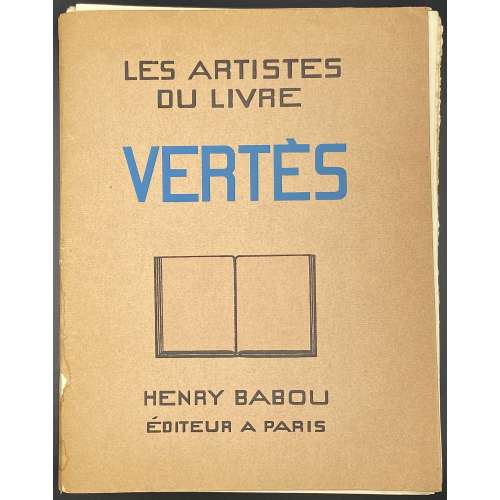 Title-page: LES ARTISTES DU LIVRE | MARCEL | VERTÈS | ÉTUDE PAR | ANDRÉ SALMON | LETTRE-PRÉFACE PAR | PAUL MORAND | PORTRAIT PAR | JEAN OBERLÉ | { publisher’s device} | HENRY BABOU, ÉDITEUR | 1, RUE VERNIQUET, PARIS | 1930 || Description: 26.3 x 20.5 cm, French flapped brown wrappers with black and blue lettering, lettering to spine, unbound, [1-2] 1st blank leaf, [3-4] h.t. / limitation, two plates (fac-simile letter and portrait of Vertès), [5-6] t.p. /”Cette monographie…”, 7-39 [40-48], incl. Bibliographie des ouvrages, Table des planches, and colophon – all with in-text illustrations; plus 22 leaves of plates, one on a double-page, all with foxing and marginal browning. Printing: December 1930 by Durcos & Colas in Paris. Edition: the 17th edition in the series “Les artistes du livre’, published under the direction of Marcel Valotaire; print run limited to 700 copies of which 50 on Japon (numbered 1-50) enriched with one original unpublished drypoint, 650 copies on Vélin Blanc from Arches (50-650), and 50 “non-commercial” copies (I-L). This copy is numbered № 473. Contributors: Marcel Vertès [Marcell Vértes] (Jewish-Hungarian-French, 1895 – 1961) – artist. André Salmon (French, 1881 – 1969) – author. Paul Morand (French, 1888 – 1976) – author. Jean Oberlé (French, 1900 – 1961) – artist. Maitres-imprimeurs Ducros et Colas (Paris) – printer. Henry Babou (Paris) – publisher. Marcel Valotaire (French, 1889 – 1979) – publisher. Other names: Marcel Vertès, Marcel Vertes, Marcell Vértes
Title-page: LES ARTISTES DU LIVRE | MARCEL | VERTÈS | ÉTUDE PAR | ANDRÉ SALMON | LETTRE-PRÉFACE PAR | PAUL MORAND | PORTRAIT PAR | JEAN OBERLÉ | { publisher’s device} | HENRY BABOU, ÉDITEUR | 1, RUE VERNIQUET, PARIS | 1930 || Description: 26.3 x 20.5 cm, French flapped brown wrappers with black and blue lettering, lettering to spine, unbound, [1-2] 1st blank leaf, [3-4] h.t. / limitation, two plates (fac-simile letter and portrait of Vertès), [5-6] t.p. /”Cette monographie…”, 7-39 [40-48], incl. Bibliographie des ouvrages, Table des planches, and colophon – all with in-text illustrations; plus 22 leaves of plates, one on a double-page, all with foxing and marginal browning. Printing: December 1930 by Durcos & Colas in Paris. Edition: the 17th edition in the series “Les artistes du livre’, published under the direction of Marcel Valotaire; print run limited to 700 copies of which 50 on Japon (numbered 1-50) enriched with one original unpublished drypoint, 650 copies on Vélin Blanc from Arches (50-650), and 50 “non-commercial” copies (I-L). This copy is numbered № 473. Contributors: Marcel Vertès [Marcell Vértes] (Jewish-Hungarian-French, 1895 – 1961) – artist. André Salmon (French, 1881 – 1969) – author. Paul Morand (French, 1888 – 1976) – author. Jean Oberlé (French, 1900 – 1961) – artist. Maitres-imprimeurs Ducros et Colas (Paris) – printer. Henry Babou (Paris) – publisher. Marcel Valotaire (French, 1889 – 1979) – publisher. Other names: Marcel Vertès, Marcel Vertes, Marcell Vértes -
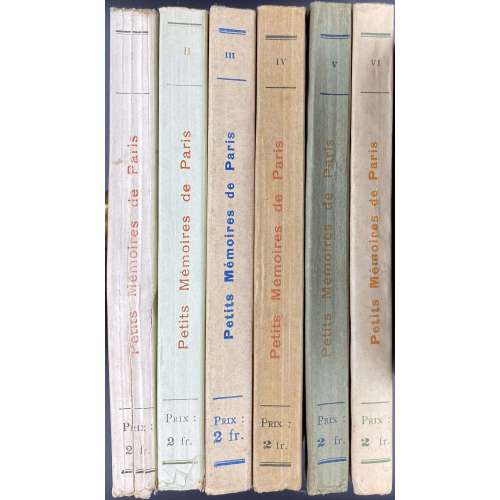 Description: Six softcover volumes, collated in-4to, 14.3 x 10 cm in publisher’s lettered wrappers; printed on laid paper; series "Les petits mémoires de Paris" illustrated with 23 out of 24 etchings by Henri Boutet: (I) Les coulisses de l’amour; (II) Rues et Intérieurs; (III) Le carnet d’un suiveur; (IV) Le petits métiers; (V) Les nuits de Paris; (VI) Toutes les bohêmes. Vol. I: Cream cover, lettered black and red in a black frame: LA MÉSSAGÈRE | LES | PETITS MÉMOIRES | DE | PARIS | CONTENANT | Quatre Eaux-Fortes originales | PAR | Henri BOUTET | I | Les Coulisses de l’Amour | {vignette brown Notre-Dame de Paris} | A PARIS | CHEZ DORBON l’AINÉ, LIBRAIRE | 53 ter, Quai des Grands-Augustins || Title-page: similar, in black, with «MDCCCVIII» in the bottom. Edition not stated. [1-8] ( 7 marked 1) 9-125 [3] contents, colophon; h.t. uncut from 1st blank, three original etchings instead of four (one missing?), incl. frontispiece. Colophon: IMPRIMÉ PAR SOINS | DE LA | SOCIÉTÉ TYPOGRAPHIQUE | DE | CHATEAUDUN || Back wrapper blank. Vol. II: Mint-green cover, lettered black and red in a black frame: LA MÉSSAGÈRE | LES | PETITS MÉMOIRES | DE | PARIS | CONTENANT | Quatre Eaux-Fortes originales | PAR | Henri BOUTET | II | Rues et Intérieurs | {vignette brown Notre-Dame de Paris} | A PARIS | CHEZ DORBON l’AINÉ, LIBRAIRE | 53 ter, Quai des Grands-Augustins || Title-page: similar, in black, with «MDCCCIX» in the bottom. Edition not stated. [1-6] 7-125 [2] contents, colophon (same as in Vol. I); h.t. uncut from 1st blank, four original etchings, incl. frontispiece. Back wrapper blank. Vol. III: Cream cover, lettered blue in a blue frame: LA MÉSSAGÈRE | LES | PETITS MÉMOIRES | DE | PARIS | CONTENANT | Quatre Eaux-Fortes originales | PAR | Henri BOUTET | III | Le Carnet d’un Suiveur | 4e Edition | {vignette smoking gentleman in a top hat} | A PARIS | CHEZ DORBON L’AINÉ, LIBRAIRE | 53 ter, Quai des Grands-Augustins || Title-page: similar, in black, with «MDCCCIX» in the bottom. 4th edition. [1-6] 7-124 [4] contents, colophon (uncut); h.t. uncut from 1st blank, four original etchings, incl. frontispiece. Colophon: Imprimé par soins de | l’Imprimerie de Paris | Têtes de chapitre, lettrines et culs de lampe de | M. Paul Guignebault | Eaux-fortes tirées sous la direction de | M. Henri Boutet || Back wrapper with a frame and a ribbon at center, in blue. Vol. IV: Tan cover, lettered red and black in a black frame: LA MÉSSAGÈRE | LES | PETITS MÉMOIRES | DE | PARIS | CONTENANT | Quatre Eaux-Fortes originales | PAR | Henri BOUTET | IV | Le Petits Métiers | {vignette worker with a ladder} | A PARIS | CHEZ DORBON L’AINÉ, LIBRAIRE | 53 ter, Quai des Grands-Augustins || Title-page: similar, in black, with «MDCCCIX» in the bottom. Edition not stated. [1-6] 7-119 [120 colophon, uncut] [8 advert., uncut]; four original etchings, incl. frontispiece. Colophon: IMPRIMERIE DE PARIS | 22, RUE DES VOLONTAIRES PROLONGÉE | – PARIS - XVe – || Back wrapper with a black frame and a red ribbon at center. Vol. V: Olive-green cover, lettered red and blue in a blue frame: LA MÉSSAGÈRE | LES | PETITS MÉMOIRES | DE | PARIS | CONTENANT | Quatre Eaux-Fortes originales | PAR | Henri BOUTET | V | Les nuits de Paris | Deuxième Édition | {vignette woman on a street} | A PARIS | CHEZ DORBON L’AINÉ, LIBRAIRE | 53 ter, Quai des Grands-Augustins || Title-page: similar, in black, with «MDCDIX» in the bottom. 2nd edition. [1-8] 9-118 [2 colophon, uncut] [8 advert., uncut]; four original etchings, incl. frontispiece. Colophon: IMPRIMERIE DE PARIS | 22, RUE DES VOLONTAIRES PROLONGÉE | – PARIS - XVe – || Back wrapper with a blue frame and a red ribbon at center. Vol. VI: Cream cover, lettered red and blue in a blue frame: LA MÉSSAGÈRE | LES | PETITS MÉMOIRES | DE | PARIS | CONTENANT | Quatre Eaux-Fortes originales | PAR | Henri BOUTET | VI | Toutes les bohêmes | Cinquième Édition | {vignette windmill} | A PARIS | CHEZ DORBON L’AINÉ, LIBRAIRE | 53 ter, Quai des Grands-Augustins || Title-page: similar, in black, with «MDCDIX» in the bottom and “Deuxième Édition”. 5th or 2nd edition. [1-7] 8-120 [2 colophon] [4 advert.] [2 blank]; four original etchings, incl. frontispiece. Colophon: IMPRIMERIE DE PARIS | 22, RUE DES VOLONTAIRES PROLONGÉE | – PARIS - XVe – || Back wrapper with a blue frame and a red ribbon at center. Contributors: Henri Boutet [La Mésangère] (French, 1851 – 1919) – author, artist, etcher. François Louis Dorbon [Dorbon Aîné] (French, 1878 – 1956) – publisher.
Description: Six softcover volumes, collated in-4to, 14.3 x 10 cm in publisher’s lettered wrappers; printed on laid paper; series "Les petits mémoires de Paris" illustrated with 23 out of 24 etchings by Henri Boutet: (I) Les coulisses de l’amour; (II) Rues et Intérieurs; (III) Le carnet d’un suiveur; (IV) Le petits métiers; (V) Les nuits de Paris; (VI) Toutes les bohêmes. Vol. I: Cream cover, lettered black and red in a black frame: LA MÉSSAGÈRE | LES | PETITS MÉMOIRES | DE | PARIS | CONTENANT | Quatre Eaux-Fortes originales | PAR | Henri BOUTET | I | Les Coulisses de l’Amour | {vignette brown Notre-Dame de Paris} | A PARIS | CHEZ DORBON l’AINÉ, LIBRAIRE | 53 ter, Quai des Grands-Augustins || Title-page: similar, in black, with «MDCCCVIII» in the bottom. Edition not stated. [1-8] ( 7 marked 1) 9-125 [3] contents, colophon; h.t. uncut from 1st blank, three original etchings instead of four (one missing?), incl. frontispiece. Colophon: IMPRIMÉ PAR SOINS | DE LA | SOCIÉTÉ TYPOGRAPHIQUE | DE | CHATEAUDUN || Back wrapper blank. Vol. II: Mint-green cover, lettered black and red in a black frame: LA MÉSSAGÈRE | LES | PETITS MÉMOIRES | DE | PARIS | CONTENANT | Quatre Eaux-Fortes originales | PAR | Henri BOUTET | II | Rues et Intérieurs | {vignette brown Notre-Dame de Paris} | A PARIS | CHEZ DORBON l’AINÉ, LIBRAIRE | 53 ter, Quai des Grands-Augustins || Title-page: similar, in black, with «MDCCCIX» in the bottom. Edition not stated. [1-6] 7-125 [2] contents, colophon (same as in Vol. I); h.t. uncut from 1st blank, four original etchings, incl. frontispiece. Back wrapper blank. Vol. III: Cream cover, lettered blue in a blue frame: LA MÉSSAGÈRE | LES | PETITS MÉMOIRES | DE | PARIS | CONTENANT | Quatre Eaux-Fortes originales | PAR | Henri BOUTET | III | Le Carnet d’un Suiveur | 4e Edition | {vignette smoking gentleman in a top hat} | A PARIS | CHEZ DORBON L’AINÉ, LIBRAIRE | 53 ter, Quai des Grands-Augustins || Title-page: similar, in black, with «MDCCCIX» in the bottom. 4th edition. [1-6] 7-124 [4] contents, colophon (uncut); h.t. uncut from 1st blank, four original etchings, incl. frontispiece. Colophon: Imprimé par soins de | l’Imprimerie de Paris | Têtes de chapitre, lettrines et culs de lampe de | M. Paul Guignebault | Eaux-fortes tirées sous la direction de | M. Henri Boutet || Back wrapper with a frame and a ribbon at center, in blue. Vol. IV: Tan cover, lettered red and black in a black frame: LA MÉSSAGÈRE | LES | PETITS MÉMOIRES | DE | PARIS | CONTENANT | Quatre Eaux-Fortes originales | PAR | Henri BOUTET | IV | Le Petits Métiers | {vignette worker with a ladder} | A PARIS | CHEZ DORBON L’AINÉ, LIBRAIRE | 53 ter, Quai des Grands-Augustins || Title-page: similar, in black, with «MDCCCIX» in the bottom. Edition not stated. [1-6] 7-119 [120 colophon, uncut] [8 advert., uncut]; four original etchings, incl. frontispiece. Colophon: IMPRIMERIE DE PARIS | 22, RUE DES VOLONTAIRES PROLONGÉE | – PARIS - XVe – || Back wrapper with a black frame and a red ribbon at center. Vol. V: Olive-green cover, lettered red and blue in a blue frame: LA MÉSSAGÈRE | LES | PETITS MÉMOIRES | DE | PARIS | CONTENANT | Quatre Eaux-Fortes originales | PAR | Henri BOUTET | V | Les nuits de Paris | Deuxième Édition | {vignette woman on a street} | A PARIS | CHEZ DORBON L’AINÉ, LIBRAIRE | 53 ter, Quai des Grands-Augustins || Title-page: similar, in black, with «MDCDIX» in the bottom. 2nd edition. [1-8] 9-118 [2 colophon, uncut] [8 advert., uncut]; four original etchings, incl. frontispiece. Colophon: IMPRIMERIE DE PARIS | 22, RUE DES VOLONTAIRES PROLONGÉE | – PARIS - XVe – || Back wrapper with a blue frame and a red ribbon at center. Vol. VI: Cream cover, lettered red and blue in a blue frame: LA MÉSSAGÈRE | LES | PETITS MÉMOIRES | DE | PARIS | CONTENANT | Quatre Eaux-Fortes originales | PAR | Henri BOUTET | VI | Toutes les bohêmes | Cinquième Édition | {vignette windmill} | A PARIS | CHEZ DORBON L’AINÉ, LIBRAIRE | 53 ter, Quai des Grands-Augustins || Title-page: similar, in black, with «MDCDIX» in the bottom and “Deuxième Édition”. 5th or 2nd edition. [1-7] 8-120 [2 colophon] [4 advert.] [2 blank]; four original etchings, incl. frontispiece. Colophon: IMPRIMERIE DE PARIS | 22, RUE DES VOLONTAIRES PROLONGÉE | – PARIS - XVe – || Back wrapper with a blue frame and a red ribbon at center. Contributors: Henri Boutet [La Mésangère] (French, 1851 – 1919) – author, artist, etcher. François Louis Dorbon [Dorbon Aîné] (French, 1878 – 1956) – publisher. -
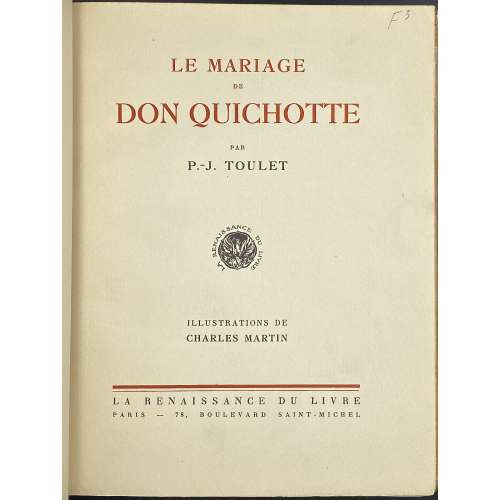 Description: One volume, 25.5 x 19.8 cm, bound in ochre morocco, raised bands, gilt lettering to spine, gilt fillet inside, marbled endpapers, T.E.G., printed on wove paper watermarked “Lafuma”, original wrappers and spine bound in; in a slipcase 26 x 20 cm. Front wrapper and title-page (red and black): LE MARIAGE | DE | DON QUICHOTTE | PAR | P.-J. TOULET | {publisher’s device} | ILLUSTRATIONS DE | (CHARLES) MARTIN | — | LA RENAISSANCE DU LIVRE | PARIS — 78, BOULEVARD SAINT-MICHEL || Collation: two blank leaves, front wrapper, π4 (blank, h.t./limitation, t.p., preface), 1-274, back wrapper, spine, two blank leaves, 112 leaves between the wrappers plus 9 plates extraneous to collation, incl. frontispiece – stencil-coloured photogravures after Charles Martin. Pagination: [8] 1-210 [2] [4], total 224 pages between the wrappers, ils. Limitation: Edition limited to 775 copies, of which 1 copy on Vieux Japon (№ 1), 24 on Japon Imperial (№2-25), and 750 on Vélin Lafuma (№ 26-775). This copy is № 625. Colophon: Printed on November 15, 1922 – text by Coulouma (Argeneuil), director H. Barthélemy, photogravures by Héliogravure de Schutzenberger (Paris), coloured by Charpentier. Contributors: Paul-Jean Toulet (French, 1867 – 1920) – author. Charles Martin (French, 1884 – 1934) – artist. Léon Maurice Schützenberger (French, 1863 – 1950)
Description: One volume, 25.5 x 19.8 cm, bound in ochre morocco, raised bands, gilt lettering to spine, gilt fillet inside, marbled endpapers, T.E.G., printed on wove paper watermarked “Lafuma”, original wrappers and spine bound in; in a slipcase 26 x 20 cm. Front wrapper and title-page (red and black): LE MARIAGE | DE | DON QUICHOTTE | PAR | P.-J. TOULET | {publisher’s device} | ILLUSTRATIONS DE | (CHARLES) MARTIN | — | LA RENAISSANCE DU LIVRE | PARIS — 78, BOULEVARD SAINT-MICHEL || Collation: two blank leaves, front wrapper, π4 (blank, h.t./limitation, t.p., preface), 1-274, back wrapper, spine, two blank leaves, 112 leaves between the wrappers plus 9 plates extraneous to collation, incl. frontispiece – stencil-coloured photogravures after Charles Martin. Pagination: [8] 1-210 [2] [4], total 224 pages between the wrappers, ils. Limitation: Edition limited to 775 copies, of which 1 copy on Vieux Japon (№ 1), 24 on Japon Imperial (№2-25), and 750 on Vélin Lafuma (№ 26-775). This copy is № 625. Colophon: Printed on November 15, 1922 – text by Coulouma (Argeneuil), director H. Barthélemy, photogravures by Héliogravure de Schutzenberger (Paris), coloured by Charpentier. Contributors: Paul-Jean Toulet (French, 1867 – 1920) – author. Charles Martin (French, 1884 – 1934) – artist. Léon Maurice Schützenberger (French, 1863 – 1950) -
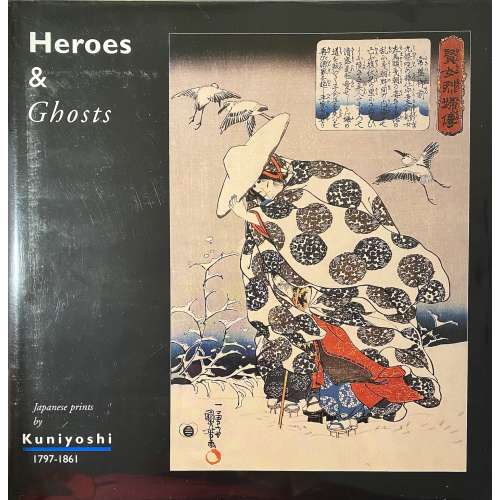 Title-page: Heroes & Ghosts | Japanese prints | by | Kuniyoshi | 1797-1861 | [space] | Robert Schaap | introduction by | Amy Reigle Newland | essays by | Timothy T. Clark | Matthi Forrer | Inagaki Shin'ichi | {publisher’s device} | Hotei Publishing, Leiden | Society for Japanese Arts || Description: Square hardcover volume, 29.3 x 29 cm, bound in black cloth with blind vignette to front cover and blind lettering to spine, black pictorial endpapers, pictorial dust jacket; pp.: [1-4] 5-280, incl. 279 plates and 31 figures in the text; based on exhibit in Van Gogh Museum (Amsterdam) 30 Jan – 5 Apr 1998 and Philadelphia Museum of Art (Philadelphia) 24 Apr – 29 Jun 1998.
Title-page: Heroes & Ghosts | Japanese prints | by | Kuniyoshi | 1797-1861 | [space] | Robert Schaap | introduction by | Amy Reigle Newland | essays by | Timothy T. Clark | Matthi Forrer | Inagaki Shin'ichi | {publisher’s device} | Hotei Publishing, Leiden | Society for Japanese Arts || Description: Square hardcover volume, 29.3 x 29 cm, bound in black cloth with blind vignette to front cover and blind lettering to spine, black pictorial endpapers, pictorial dust jacket; pp.: [1-4] 5-280, incl. 279 plates and 31 figures in the text; based on exhibit in Van Gogh Museum (Amsterdam) 30 Jan – 5 Apr 1998 and Philadelphia Museum of Art (Philadelphia) 24 Apr – 29 Jun 1998. -
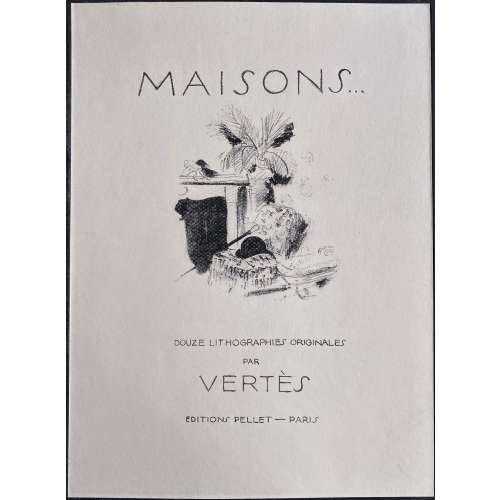 Album in-folio of 13 lithographs by Marcel Vertès, incl. title-page, each in a passe-partout 41.5 x 31.7 cm with 33.0 x 23.0 cm window, printed on wove paper sheets 38.0 x 28.0 cm and crayon-coloured by the artist; graphite pencil drawings by Marcel Vertès on the lower-right corner of each passe-partout; all in a buckram-backed flapped folder, signed ‘AT BOICHOT’, with an uncoloured title-page lithograph on front cover. Edition limited to 100 copies on Chine (№№ 1-100) and 900 on Vélin (№№ 1 to 900); this is a copy № 22 (Vélin), unique as enhanced by the artist. Double-folio leaf 41 x 31 cm with text by Pierre Mac-Orlan. These lithographs, uncoloured, were used in Pierre Mac-Orlan. Les jeux du demi-jour / avec douze lithographies de Vertès. — Paris: Les arts et le livre, 1926 [LIB-2893.2021]. Lithographed title-page: MAISONS.... | {vignette} | DOUZE LITHOGRAPHIES ORIGINALES | PAR | VERTÈS | ÉDITIONS PELLET ~ PARIS || Catalogue raisonné: Vokaer: № 5, p. 7; Nordmann (1): 423, p. 267. Contributors: Pierre Mac-Orlan (French, 1882 – 1970) – author. Marcel Vertès [Marcell Vértes] (Jewish-Hungarian-French, 1895 – 1961) – artist. Gustave Pellet (1859 – 1919) – publisher. Thomas Boichot – bookbinder. Description by J.-P. Dutel: MAC ORLAN Pierre. VERTES Marcel. MAISONS... Douze lithographies originales. Paris, Editions Pellet, [1925]. In-folio (410 x 310 mm) de [4] ff. et 13 lithographies sous passe-partout dont un titre. Chemise en demi-soienoire, premier plat illustré de la même lithographie que celle utilisée pour le titre (AT Boichot). TIRAGE : 100 albums sur chine avant la signature gravée, chaque planche signée. 900 albums sur vélin. :Un des 900 albums sur vélin (n° 22). EXEMPLAIRE UNIQUE DANS LEQUEL LES 13 LITHOGRAPHIES ONT ÉTÉCOLORIÉES AUX CRAYONS DE COULEURS PAR VERTÈS. DE PLUS, CHAQUE PASSE-PARTOUT COMPORTE EN BAS À DROITE UN CROQUIS ORIGINAL À LA MINE DE PLOMB CORRESPONDANT À UNE VERSION PLUS LIBRE DELA LITHO.
Album in-folio of 13 lithographs by Marcel Vertès, incl. title-page, each in a passe-partout 41.5 x 31.7 cm with 33.0 x 23.0 cm window, printed on wove paper sheets 38.0 x 28.0 cm and crayon-coloured by the artist; graphite pencil drawings by Marcel Vertès on the lower-right corner of each passe-partout; all in a buckram-backed flapped folder, signed ‘AT BOICHOT’, with an uncoloured title-page lithograph on front cover. Edition limited to 100 copies on Chine (№№ 1-100) and 900 on Vélin (№№ 1 to 900); this is a copy № 22 (Vélin), unique as enhanced by the artist. Double-folio leaf 41 x 31 cm with text by Pierre Mac-Orlan. These lithographs, uncoloured, were used in Pierre Mac-Orlan. Les jeux du demi-jour / avec douze lithographies de Vertès. — Paris: Les arts et le livre, 1926 [LIB-2893.2021]. Lithographed title-page: MAISONS.... | {vignette} | DOUZE LITHOGRAPHIES ORIGINALES | PAR | VERTÈS | ÉDITIONS PELLET ~ PARIS || Catalogue raisonné: Vokaer: № 5, p. 7; Nordmann (1): 423, p. 267. Contributors: Pierre Mac-Orlan (French, 1882 – 1970) – author. Marcel Vertès [Marcell Vértes] (Jewish-Hungarian-French, 1895 – 1961) – artist. Gustave Pellet (1859 – 1919) – publisher. Thomas Boichot – bookbinder. Description by J.-P. Dutel: MAC ORLAN Pierre. VERTES Marcel. MAISONS... Douze lithographies originales. Paris, Editions Pellet, [1925]. In-folio (410 x 310 mm) de [4] ff. et 13 lithographies sous passe-partout dont un titre. Chemise en demi-soienoire, premier plat illustré de la même lithographie que celle utilisée pour le titre (AT Boichot). TIRAGE : 100 albums sur chine avant la signature gravée, chaque planche signée. 900 albums sur vélin. :Un des 900 albums sur vélin (n° 22). EXEMPLAIRE UNIQUE DANS LEQUEL LES 13 LITHOGRAPHIES ONT ÉTÉCOLORIÉES AUX CRAYONS DE COULEURS PAR VERTÈS. DE PLUS, CHAQUE PASSE-PARTOUT COMPORTE EN BAS À DROITE UN CROQUIS ORIGINAL À LA MINE DE PLOMB CORRESPONDANT À UNE VERSION PLUS LIBRE DELA LITHO. -
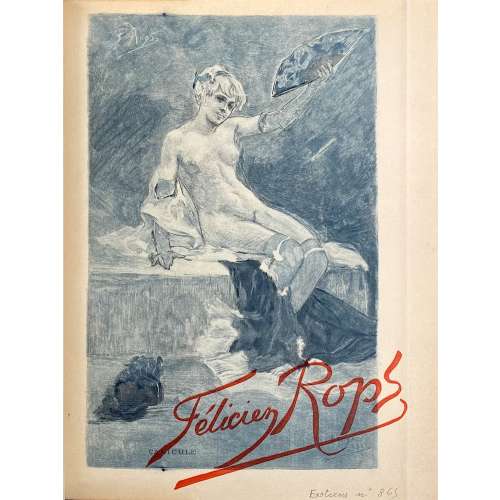 One volume in-4o, 26.5 x 21 x 4 cm, bound by Durvand (signed) in tan quarter morocco over marbled boards, spine with raised bands and gilt lettering, top margin gilt, marbled endpapers, publisher’s wrappers preserved; enriched with 39 original prints after Félicien Rops. Collation: 2 blanks, π5 (original front wrapper ‘Canicule’/blank, 2 blanks, h.t./justification, t.p/blank), 1-294 301 (paginated 1-233 [234]) χ1 (advert.) plus frontispiece (photographic seated portrait of Félicien Rops, collotype, artist unknown) and 39 leaves of bound-in original prints by various printers on different papers, with tissue guards; back wrapper and original spine, 2 blanks; loosely inset a marriage invitation for Dr Robert Fasquelle and Mlle Suzanne Luneau with a partial list of prints, incl. page numbers. Title-page (red and black): Études sur quelques Artistes originaux | — | FÉLICIEN ROPS | par | CAMILLE LEMONNIER | {fleuron} | PARIS | H. FLOURY, ÉDITEUR | 1, Boulevard des Capucines, 1 | – | 1908 || Limitation: 125 copies with two original plates «Canicule» and «Seule» numbered 1-125, of which 100 copies on Japon à la forme, 25 copies on papier de Chine; plus 50 copies on papier vélin with one coloured plate «Canicule», numbered 126-175, printed by Edmond Deman in Brussels. Our copy is on dense wove paper (vélin), without a number. Photographs here represent the original prints only. Camille Lemonnier (Belgian, 1844 – 1913) – author. Félicien Rops (Belgian, 1833 – 1898) – artist. Henri Floury (French, 1862 –1961) – publisher. Edmond Deman (Belgian, 1857–1918) – printer. Lucien Durvand (French, 1852 – 1924) – bookbinder.
One volume in-4o, 26.5 x 21 x 4 cm, bound by Durvand (signed) in tan quarter morocco over marbled boards, spine with raised bands and gilt lettering, top margin gilt, marbled endpapers, publisher’s wrappers preserved; enriched with 39 original prints after Félicien Rops. Collation: 2 blanks, π5 (original front wrapper ‘Canicule’/blank, 2 blanks, h.t./justification, t.p/blank), 1-294 301 (paginated 1-233 [234]) χ1 (advert.) plus frontispiece (photographic seated portrait of Félicien Rops, collotype, artist unknown) and 39 leaves of bound-in original prints by various printers on different papers, with tissue guards; back wrapper and original spine, 2 blanks; loosely inset a marriage invitation for Dr Robert Fasquelle and Mlle Suzanne Luneau with a partial list of prints, incl. page numbers. Title-page (red and black): Études sur quelques Artistes originaux | — | FÉLICIEN ROPS | par | CAMILLE LEMONNIER | {fleuron} | PARIS | H. FLOURY, ÉDITEUR | 1, Boulevard des Capucines, 1 | – | 1908 || Limitation: 125 copies with two original plates «Canicule» and «Seule» numbered 1-125, of which 100 copies on Japon à la forme, 25 copies on papier de Chine; plus 50 copies on papier vélin with one coloured plate «Canicule», numbered 126-175, printed by Edmond Deman in Brussels. Our copy is on dense wove paper (vélin), without a number. Photographs here represent the original prints only. Camille Lemonnier (Belgian, 1844 – 1913) – author. Félicien Rops (Belgian, 1833 – 1898) – artist. Henri Floury (French, 1862 –1961) – publisher. Edmond Deman (Belgian, 1857–1918) – printer. Lucien Durvand (French, 1852 – 1924) – bookbinder. -
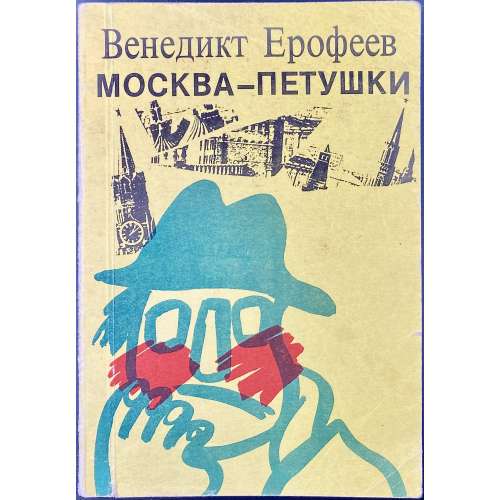 Paperback, 17.2 x 12 cm, yellow pictorial wrappers, lettering to front, back, and spine; pp.: [1-4] 5-137 [5]. Title-page: ВЕНЕДИКТ | ЕРОФЕЕВ | МОСКВА — ПЕТУШКИ | ПОВЕСТЬ | Таллинн | “Александра” | 1990 || Print-run: 30,000. Contributors: Венедикт Васильевич Ерофеев [Venedikt Yerofeyev] (Russian, 1938 – 1990) – author.
Paperback, 17.2 x 12 cm, yellow pictorial wrappers, lettering to front, back, and spine; pp.: [1-4] 5-137 [5]. Title-page: ВЕНЕДИКТ | ЕРОФЕЕВ | МОСКВА — ПЕТУШКИ | ПОВЕСТЬ | Таллинн | “Александра” | 1990 || Print-run: 30,000. Contributors: Венедикт Васильевич Ерофеев [Venedikt Yerofeyev] (Russian, 1938 – 1990) – author. -
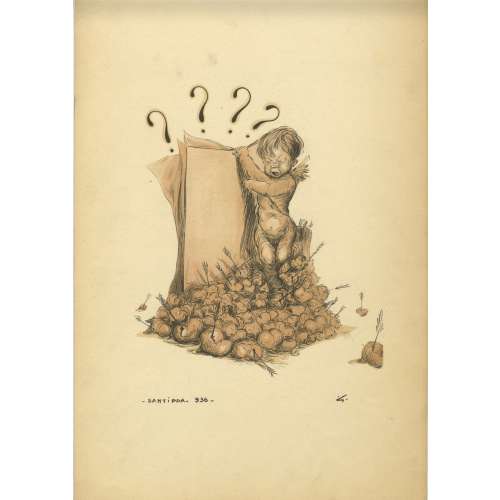 Publisher's flapped folder of black velvet paper with dark green embossed vignette, 494 x 325 mm, with a pink limitation label inside the front cover and a printed spade with 'FIN" inside the back cover; a set of 13 lithographs signed Santippa, 936; 480 x 310 mm each, twelve in black and one (title) coloured with sanguine. Limited edition of 250 copies, 1-100 printed on Hollande and 150 on Japon; this is copy № 127.
Publisher's flapped folder of black velvet paper with dark green embossed vignette, 494 x 325 mm, with a pink limitation label inside the front cover and a printed spade with 'FIN" inside the back cover; a set of 13 lithographs signed Santippa, 936; 480 x 310 mm each, twelve in black and one (title) coloured with sanguine. Limited edition of 250 copies, 1-100 printed on Hollande and 150 on Japon; this is copy № 127.Titles: Rêverie, Gaspillage, Exagération, Simplicité, Gourmandise, Abondance, Violence, Fantaisie, Faiblesse, Curiosité, Obligeance, Surprise.
Contributors:Gaston Hoffmann [Santippa] (French, 1883 – 1977)


